Vale Au Revoirs |
|---|
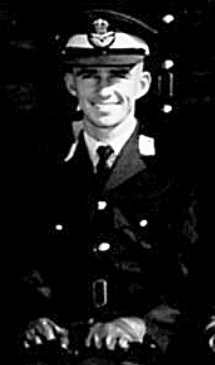
RAAF O222082 Pilot 9Sqn
Died 23 Oct 2021 Aged 72
Peter passed away as a result of lung cancer.
Peter was born in Merewether NSW on 26th July 1946 and joined the RAAF on No 57 Pilots Course in 1966. He flew Iroquios in 9SQN Vietnam 28FEB67 to 05MAR68 and received an MID.
Peter's Air Force career included P3 Orions, an exchange posting to RAF Kinloss as a Nimrod Captain, a stint in Defence, Staff College and Commanding Officer 33SQN where he flew as VIP Captain B707, followed by another Staff appointment.
Peter then joined Qantas and flew B747s until retirement.
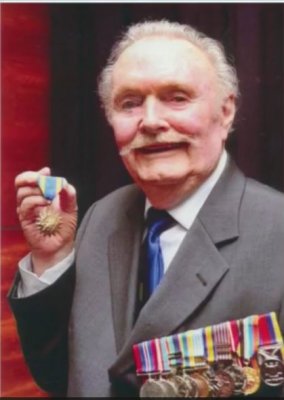
RAAF O22139 GD Pilot 77 Sqn
Died 04 Oct 2021 Aged 96
Ron joined the RAAF at the age of 18 during WWII and had his wings at 19. He found himself towing gunnery targets in a Fairy Battle, was posted to Oakey in Queensland as a Warrant Officer and was in charge of 650 fighter aircraft. He was the only pilot on the place and was able to ‘test for airworthiness’ a number of different aircraft, such as P-40 Kittyhawks, P-51 Mustangs.
Ron was posted to Korea to join 77 Squadron flying Mustangs but when Russian-built Mig15’s appeared the squadron was re-equipped with Meteors from England. At that time Ron was the only pilot in the squadron with jet experience.
Ron flew 14 combat sorties (air-to-air and bomber escort).
Warrant Officer Ron Guthrie was shot down in a Meteor of 77 Squadron on the 29th August, 1951.
Ron spent two years as a POW and had a rough time of it. He did try to escape and was eventually recaptured.
He relates the statement that he had a 24” waist when he returned to Australia after being set free. Refer Ron's book 'Escape from North Korea, The Ron Guthrie Story'
Later Ron became a flying instructor at Uranquinty (near Wagga) flying Wirraways and Winjeels.
By the time his flying was finished he had flown Tigermoths, Wirraways, Winjeels, Fairey Battles, Kittyhawks, Mustangs, Avro Ansons, Bristol Freighters, DC3’s, Vampires, Meteors, Lincolns and Mirage and Hornet simulators. Ron was then, at the end of the war, offered a choice, be discharged or be retrained as an air traffic controller. He chose the latter and became a defender at Williamtown, had a posting to Brookvale as Operations Officer and spent much of the time there as the Temporary Commanding Officer.
For a more comprehensive treatise Click Here
Ronald David Guthrie represents that spirit of the joy of life. His had been in peril, but throughout his, at times brutal captivity in North Korea, he seems never to have given up hope.
Tributes
Rest In Peace Ronald David Guthrie
Good and True Australian
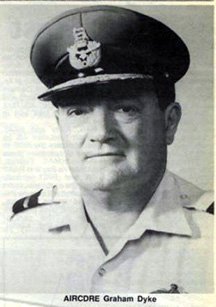
RAAF O14384 GD Pilot 2 Sqn
Died 25 Sep 2021 Aged 85
O14384 Air Commodore
GRAHAM DYKE DFC
jssc, psc, qfi
AIRCDRE Graham Dyke DFC, a very popular and admired friend of many older RAAF folks just did his last take off last Friday, 25th September. He had been ill for some time but kept his sense of humour to the end!
A former ATC cadet with a flying scholarship in Brisbane, he enlisted to join No 7 Course at the RAAF College but then saw the light and joined No 19 Pilots Course.
He flew Lincolns in Tengah during the Malayan Emergency, then did 12 months with the RAAF Antarctic Flight where he lost his Dakota as it was blown eight miles away in an overnight blizzard! He flew Canberras at Amberley before becoming a highly regarded flying instructor on Winjeels at Point Cook.
He returned to Canberras at 82WG Amberley and completed another operational tour as a FLTCDR in Vietnam with 2SQN for which he was awarded the DFC. He was later CO2SQN, staff officer in AFO, Defence Attaché in NZ then OC RAAF East Sale. His final posting before retirement was Director General Manpower, Canberra.
Graham retired on 20 Jan 86 and GD, as he was widely known, became a farmer in Sutton for 20 years then moved back to Canberra with his lovely wife Pam, whom he has now joined again today.
Everyone from AC to AIRMSHL in his day knew GD and respected him, enjoyed his company and jovial personality, especially with his big grin. He was just a nice bloke!
Postings History:
18-Jan-54 - RAAF College
05-Jul-54 - No. 1 Basic Flying Training School - No 19 Pilots Course
26-Apr-55 - No. 1 Applied Flying Training School - No 19 Pilots Course
29-Aug-55 - Lincoln Conversion Flight
14-Dec-55 - Base Squadron Amberley
07-Jan-56 - No. 1 Squadron
06-Jan-58 - School of Air Navigation
15-Jun-59 - RAAF ANTARCTIC Flight
05-Jun-61 - Central Flying School
15-Jan-62 - No. 82 Wing
15-Jan-62 - No. 1 (Bomber) Operational Conversion Unit
12-Apr-62 - No. 1 (Bomber) Squadron
20-Jun-62 - No. 6 (Bomber) Squadron
20-Jan-64 - Central Flying School
30-Jun-64 - No. 1 Basic Flying Training School
15-Dec-67 - Headquarters 82 Wing
30-Jan-68 - No. 1 Operational Conversion Unit
01-Oct-68 - No. 2 Squadron
17-Sep-69 - No. 1 Operational Conversion Unit
08-Jun-71 - No. 2 Squadron
28-Jun-71 - RAAF Support Unit Canberra
15-Jan-73 - RAAF Staff College - No 27 RAAF Staff Course
18-Dec-73 - CO No. 2 Squadron Amberley
15-Jan-76 - RAAF Support Unit Canberra
09-Jan-81 - Headquarters East Sale - OC RAAF East Sale
11-Jun-83 - RAAF Support Unit Canberra
17-Jan-86 - Base Squadron Fairbairn
Tributes
Honours and Awards:
Distinguished Flying Cross
Australian Active Service Medal 1945-75 with Clasps ‘MALAYA’ ‘VIETNAM’
General Service Medal 1918-62 with Clasp ‘MALAYA’
Vietnam Medal
Australian Service Medal 1945-75 with Clasp ‘PNG’
Defence Force Service Medal with First, Second and Third Clasps
National Medal with First Clasp
Australian Defence Medal
Republic of Vietnam Campaign Medal
Pingat Jasa Malaysia
United States of America Air Medal with ‘V’ Device for Valor
United States of America Air Force Outstanding Unit Award with Valor Device
Republic of Vietnam Cross of Gallantry with Palm Unit Citation
Returned from Active Service Badge
Rest In Peace Graham Dyke
Good and True Australian
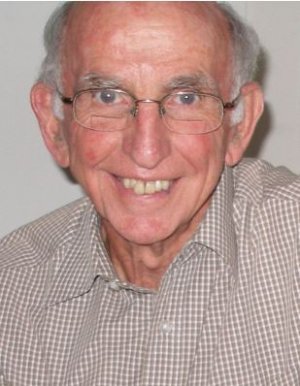
RAAF O314593 ENG AERO TEST PILOT ARDU
Died 09 Sep 2021 Aged 81
Squadron Leader Alexander Hugh Hopkins BEngAero
Hugh Hopkins ('Hoppy') joined the RAAF on 20 Jan 1958 as a Cadet on No 11 Course, RAAF College, beginning a 14 year career. His primary ambition was simply flying, for which he acquired requisite skills and competence up to and including those of a qualified test pilot. Over the years he has flown and tested fighters, bombers, transport aircraft and later commercial, agricultural, seaplanes, helicopters and gliders.
Postings and Career
20-Jan-58 - RAAF College. In year 3 (College 1960) Hoppy commenced Aeronautical Engineering Course at Sydney University. At the close of 1961, this course was discontinued. As 'College' had been changed to 'Academy', Hugh graduated as a Flying Officer from RAAF Academy.
12-Mar-62 - No. 1 Basic Flying Training School - 45 Pilots Course
05-Nov-62 - No. 1 Applied Flying Training School - Graduated May 1963
13-May-63 - No. 82 Wing - RAAF Base Amberley to fly the Canberra; however, the Bomber OCU did not begin until Oct 1963. In the meantime, Hoppy and a colleague were attached to the 34Sqn Comm Flight, RAAF Base Fairbairn, flying Vampires and Winjeels -- and as the occasional Gooney Co-Pilot. During this period they completed the Canungra Jungle Survival Course
16-Sep-63 - No. 1 Operational Conversion Unit (Bomber)
09-Dec-63 - No. 6 Squadron
08-Jun-66 - No. 2 Operational Conversion Unit (Fighter)
19-Jul-66 - Aircraft Research and Development Unit. Pre ETPS (Empire Test Pilot) course experience activities.
28-Nov-66 - RAAF Staff London - !967 intake of candidates for No 26 ETPS Course.
19-Feb-68 - Aircraft Research and Development Unit
10-Nov-70 - Department of Air
12-Jan-72 - Base Squadron Fairbairn (for Discharge)
Date of resignation: 14th January 1972 :: Total Service: 13 years 359 days
The final year in the RAAF was spent in Canberra as Assistant to AM Charles Read (later AM Sir Charles Read AO KBE DFC AFC AE), who encouraged Hugh to take up an offer from CAC, to be employed as a company test pilot.
During his time at CAC / DCA, he completed his Aeronautical Engineering degree at RMIT as well as lecturing part-time there as well.
At DCA he was employed as Flying Unit Pilot, eventually going on to manage the Flight Inspection Australia (CAA Flying Unit) in Essendon until retirement in 1995.
Following this retirement, he flew and managed other operations, including CSIRO (University of Adelaide), Bill Peach’s Air Cruising, and Lilydale flying training (instructor and Chief Pilot).
Hugh fully retired from flying in 2007. Anecdotally he mentioned that he would always leave balloons to the Montgolfier brothers in 1783.
Tributes
Rest In Peace Alexander Hugh Hopkins
Good and True Australian

RAAF O52363 GD Pilot RAAF Academy 1, 2. 6 Sqns
Died 24 Jul 2021 Aged 87
RAAF CAREER
18-May-53 - No. 1 Initial Flying Training School
25-Sep-53 - No. 1 Basic Flying Training School
01-Mar-54 - No. 1 Applied Flying Training School
09-Aug-54 - No. 10 Squadron
05-May-58 - Headquarters No. 82 Wing
06-May-58 - No. 6 Squadron
11-Aug-58 - No. 1 Squadron
12-Jun-61 - No. 2 Squadron
01-Jun-63 - Base Squadron Butterworth
12-Aug-63 - No. 6 RAAF Hospital
16-Dec-63 - RAAF Academy
17-Jan-66 - RAAF Staff College - 20 Course
04-Jan-67 - Headquarters No. 82 Wing
16-Jan-67 - No. 1(Bomber) Operational Conversion Unit
21-Aug-67 - RAAF Washington
20-Apr-70 - RAAF Support Unit Canberra
28-Jun-71 - No. 6 Squadron
03-Jul-72 - RAAF Support Unit Canberra
15-Dec-76 - Headquarters Support Command Unit
04-Jan-79 - Headquarters Amberley
27-Jan-82 - Headquarters Point Cook
20-Feb-84 - RAAF Washington
30-Mar-87 - RAAF Support Unit Melbourne
22-Nov-90 - Base Squadron Williams
Alan was a long-term member of Air Force Association (Vic) and a great supporter of Vietnam Veterans - he will be remembered as such and surely missed.
Tributes
VALE ALAN RAYMOND REED
Good and True Australian
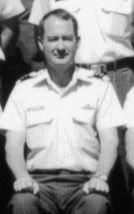
RAAF O6536 GD Pilot No. 2 OCU
Died 21 Jul 2021 Aged 83
O6536 Group Captain (Ret)ADC
DENIS JOHN STUBBS
18 Sep 1937 - 21 Jul 2021
Age 83 years
"Stacks" Stubbs - from Hobart - sportsman and Jazz fan of the class! We all know Denis was a very likeable leader as a senior cadet and as a sportsman willing to involve himself and assist the junior classes in all activites.
RAAF Career
17-Jan-55 Enlistment: Royal Australian Air Force Academy
19-Jan-59 No. 22 Squadron
15-Feb-60 No. 76 Squadron
21-Mar-60 No. 2 Operational Conversion Unit
15-Sep-60 Headquarters 78 Wing (Butterworth)
29-Oct-62 Base Squadron Laverton
02-Nov-62 Royal Australian Air Force Academy
09-Jul-64 Central Flying School
04-Jan-65 No. 1 Basic Flying Training School
27-May-65 Headquarters Support Command Unit
02-Nov-67 Defence Force School of Languages
18-Dec-68 Headquarters Support Command Unit
04-Jan-71 Royal Australian Air Force Element London
15-Jan-74 RAAF Support Unit Canberra
14-Apr-75 Tasmanian Squadron Air Training Corps
16-Jan-78 RAAF Support Unit Canberra
12-Jan-81 RAAF Staff College, 35 RAAF Staff Course
01-Feb-84 Headquarters Support Command Unit
26-Nov-84 RAAF Support Unit Canberra
02-Sep-88 Base Squadron Fairbairn
Denis Retired on 06 September 1988
Honours and Awards:
Australian Active Service Medal 1945 -75 with Clasp ‘THAI-MALAY’
Australian Service Medal 1945-75 with Clasps ‘THAILAND’, ‘BERLIN’
Defence Force Service Medal with First and Second Clasp
National Medal with First Clasp
Australian Defence Medal
Pingat Jasa Malaysia
Returned From Active Service Badge
Rest In Peace Denis John Stubbs
Good and True Australian

RAAF O411789 Pilot 76 Sqn
Died 13 Jul 2021 Aged 92
Harry joined the RAAF and was posted to No 76 Squadron at Archerfield in March 1942 until he went to No 2 OTU Mildura in February 1943.
He was in Milne Bay with Bluey Truscott and was Bardie Warne's number two. He joined No 78 Squadron in April 1944 at Cape Gloucestor through until January 1945 at Morotai. Harry went back to No 2 OTU Mildura in April 1945, then in November 1945 to Narrandera through to April 1946.
Throughout his post-war years Harry was active and never failing to support The Kittyhawk Association which later became the Fighter Squadrons Branch of the RAAF Association. In the 60s - 70s he was always on hand to officiate in ex-service activities such as presentations to winning Squadrons of the Kittyhawk Trophy for the annual Weapons Efficiency Competition.
Harry Kerr, the last of the 76 Squadron Milne Bay Kittyhawk pilots.
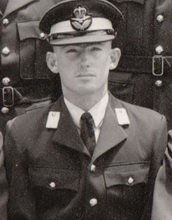
RAAF O18745 GC Pilot 77 Sqn
Died 18 May 2021 Aged 81
O18745 Group Captain (Ret)
BRUCE GEORGE GRAYSON AFC
01 Oct 1939 - 18 May 2021
Age 81 years
Bruce began his RAAF career on 20 January 1958 on entry to No 11 Course, RAAF College, Point Cook .
Bruce was a popular and all-round member during his four year course, spanning the phase where RAAF College changed to RAAF Academy, from where he graduated with flying colours - Full Colours for Tennis, Hockey, Basketball, and Cricket - and then winning the three major prizes of the then curriculum - the Sword of Honour, the Flying Trophy and the Queen's Medal. Consequently he was posted to fighters, No 81 Wing to enter a career centered around the fighter world.
In 1977 as CO 3 SQN Bruce was the leader of the “Delta’s” Mirage aerobatic team, flying the No. 1 slot in the 5-ship team. In the late 1970s early 1980s Bruce was tasked, along with WgCdrs Bob Richardson and Ray Conroy, to join the RAAF New Tactical Fighter Evaluation Team led by CAFM AVM Bill Hughes and Gp Capt Owen Worth. Diring this project they tested and evaluated the single seat Mirage 2000, the Northrop YF-17, USAF F16B and F/A-18.
RAAF Service
20-Jan-58 RAAF College
01-Jan-61 RAAF Academy
15-Jan-62 Headquarters No 81 Wing
05-Jan-62 No 22 (Fighter) Operational Conversion Unit
26-Jun-64 No 79 Squadron
17-Aug-64 Base Squadron Ubon (Non Effective)
25-Sep-64 No 79 Squadron
18-Jan-66 No 2 (Fighter) Operational Conversion Unit
27-Oct-67 RAAF Washington
30-Apr-70 No 77 Squadron
02-Dec-71 Headquarters Integrated Air Defence System
14-Jan-74 RAAF Staff College
16-Dec-74 RAAF Support Unit Canberra
14-Mar-77 No 3 Squadron
25-Jan-79 RAAF Support Unit Canberra
04-Feb-80 RAAF Washington
15-Dec-82 RAAF Support Unit Glenbrook
01-Oct-85 Base Squadron Richmond
02-Oct-85 Commission Terminated
Honours and Awards
Air Force Cross
Australian Active Service Medal 1945-75 with Clasp ' THAILAND’
Vietnam Logistic and Support Medal
Australian Service Medal 1945-75 with Clasps ‘THAILAND’ ‘SE ASIA’
Defence Force Service Medal with First and Second Clasp
National Medal
Australian Defence Medal
Returned from Active Service Badge
RAAF Airframe Fitter Mirage 481 SQN
Died 18 Apr 2021 Aged 94
Mirage legend, ex WOE “Darkie” Clark, passed away on Sunday night, 18th April, 2021, one month short of his 95th birthday.
The many of us who had worked for him at different stages of our careers – some of us came under his protective umbrella a number of times and are much the better for it. He genuinely loved his family, “his people”, his mates and the RAAF – he would fight “tooth and nail” for his people should the need arise. Although he worked in various other areas of the RAAF during his vast career, he lived and breathed Mirage.
He was probably one of the most respected fellows in the RAAF – very well-liked and highly respected by Groundies, Blunties and Knucks alike.
He was a very talented and knowledgeable Fitter back in the day, the best of bosses and a great mate to so many.
Rest In Peace Mervyn “Darkie” Clark
Good and True Australian
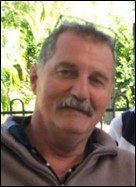
RAAF A227652 Mirage Aircraft Metalworker 75Sqn
Died 14 Apr 2021 Aged 66
Sadly we inform you of the passing of our great mate Graham Leslie (Spanner) Tanner on the 14th April 2021. Spanner had turned 66 in January and had shown no signs of illness of late. His lovely wife Leanne advised of Spanners’ passing and she suspects he may have had a heart attack. Spanner had suffered a heart attack around 10 to 12 years ago which caused some heart damage. Spanner will be sadly missed.
Spanner served as a Corporal “Basher” at 75SQN circa April 1978 to April 1980 where he also played for the Mighty Boatie Tigers – he was a very talented “Basher”, the Best of Co-Workers and a Great Mate to so many.
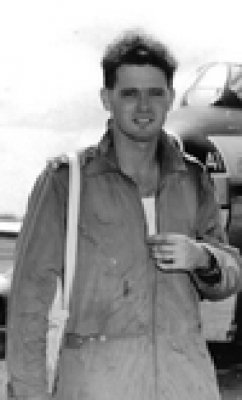
RAAF O211511 GD Pilot 22 Sqn, 75 Sqn, 2FTS
Died 02 Mar 2021 Aged 86
Maurie Baston passed away after a long battle with cancer. I know this will come as tragic news - he was a great friend, colleague, teacher, mentor and mate to many.
He will be so missed but his love of flying, life and achievements will be remembered and celebrated.
Brief Statement of Service:
1952 National Service
1952-1955 No 22 Squadron (Fighter) Mandatory Reserve
1955-1957 No 22 (CAF) Squadron (Wings - Vampires - Meteors)
1958 - OTU Williamtown
1958-1961 - No 75 Squadron - (Early Black Diamonds Team)
1962 - CFS Student
1963 - RAAF Pearce qfi at AFTS
1964 - CFS Staff
1965-1967 UK- (Folland Gnat - ex-Red Arrows)
1967- Italian Air Force ; Macchi Project
1967-1969 - CFS Staff
1969 - No 21 Squadron
25 Feb 1970 - Resigned
-------------------------------------------
Maurie Baston spent 18 years in the Royal Australian Air Force with a strong focus on pilot training, membership of six separate aerobatic teams, solo aerobatic display flying, and numerous overseas liaison appointments. He flew Convair 880’s with Cathay Pacific Airways in Hong Kong before returning to Australia, eventually setting up his own company: Air Transport Management. "Quality With Compliance - Nothing Less"
His 11 years with the (then) Australian Civil Aviation Authority involved him at senior executive level in project management and restructuring roles including the introduction of the District Offices concepts, as well as industry oversight of airline B747/767 operations. In his 15 years involvement in airline operations with Cathay Pacific, Qantas, United Airlines and Air Nauru, he has worked as an airline operations manager/chief pilot, on route and fleet development all over the Pacific. He flew his own Piper Twin Comanche and operated an aviation consultancy business based in Australia and the USA.
----------------------------------------
Maurie was a true aviator in every aspect. Former RAAF fighter pilot, the Sabre and Vampire era, 747 Captain, Chief pilot Air Naru, senior member of CASA, Consultant and Ops manual writer for Virgin Blue as a startup, and friendly adviser to many in the industry who gained a lot from their association and assistance from this great man.
Rest In Peace Henry John Maurie Baston
Good and True Australian
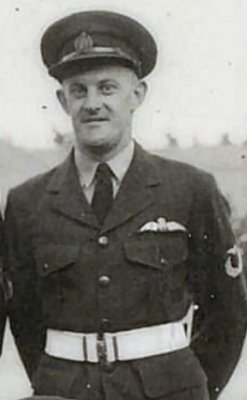
RAAF A23308 Pilot 77 Sqn
Died 25 Feb 2021 Aged 94
John Downie joined the RAAF on 4th Sep 1950 on No 6 Pilots Course. Graduated No 6 pilot course flying Mustangs.
In February 1952 he spent some time in No 3 Squadron, based at Fairbairn flying P51 Mustangs.
In March 1952, he returned from Canberra to Williamtown and a Vampire conversion.
During this time he was fronted into the office of WgCdr Brian Eaton who asked if there was any reason why he would not be prepared to serve with 77 Squadron in Korea.
Accordingly July 52 until Dec 52 he served as a Mustang Pilot in Japan and Meteors with 77 Squadron in Korea.
During his following 13 years of service he also flew Vampires with 75 Squadron.
John's career spanned from 4 Sep 1950 to discharge 20 Jul 1963.
Rest In Peace John Downie
Good and True Australian
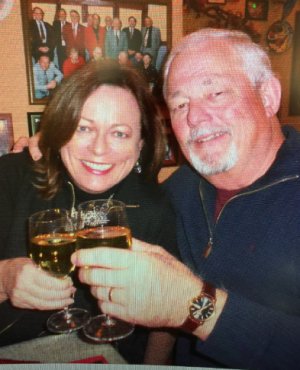
USAF USAF Exchange Fighter Pilot 77 Sqn
Died 01 Feb 2021 Aged 78
Lieutenant Colonel Jim Fauske (USAF)
For those who did not know, Jim was a fighter pilot in the United States Air Force.
Jim and Family came to Australia on exchange from 1974 to mid 1976.
Jim's service background included three tours in Vietnam on F4 Phantoms.
First tour in the Night Owl Squadron UBON in F4Ds.
Second tour as a fast FAC out of KORAT in F4Es.
Third tour involved Strike, Fighter and Escort missions from TAKHLI in F4Es.
After Vietnam Jim took part in the ferry of the RAAF F4s back to the U.S. in 1973.
At the end of 1973 Jim was posted to 77 Squadron on exchange.
He thoroughly enjoyed his two and a half years flying Mirages wishing it could have been much longer. Prior to 77 Sqn, Jim completed Number 27 Mirage Course at 2OCU.
On the 4 March 1976 the Squadron formed an aerobatic display team to take part in Air Force Week Displays. Jim considered it an honour having been selected as the first exchange pilot with 77 to fly in the Unit’s display team. He flew as "Solo Two" and as such gave the spectators a good close look at a Mirage at times inverted !!!
Socially the Fauske Family were gems in the Squadron, the Mess and the local area. They played a significant role in introducing many social functions that had that unique American style. For example, the Fauske’s on-base married quarter became “JIMMY’S ARMS” and as such proved a most popular watering hole !!!
Then, for having too much fun it was back to the States to attend Staff College and then slog through a ground assignment.
Jim’s last few years in the USAF were involved in the F-16 programme mainly out of Hill AFB in Utah. Initially Jim was the OPSO in the 421st F-16 SQN then became the Wing Duty Advisor to the 419th F-16 SQN during their transition from the F-105. Jim at this stage was a Lt Col.
Jim was awarded the American DFC and a number of Air Medals for his outstanding service whilst in the USAF.
He shall be remembered as a terrific example of the Right Stuff, as having been a magnificent ambassador for his country and his service.
Jim was an exceptionally all round good bloke. A genuine true and proud American who always gave his best.
Tributes
Rest In Peace Jim Fauske!
Our Good and True American Mate
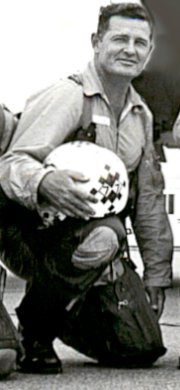
RAAF O216259 GD Pilot 3, 76, 77, 79 Sqns 2OCU
Died 26 Jan 2021 Aged 88
Hughie Collits was a very talented sportsman. Before he joined the RAAF he played in one of the prominent Rugby League clubs which offered him a very lucrative offer to play in the first grade in Sydney. But he joined the RAAF instead.
Hughie enlisted in the RAAF on 28 Sep 53 and joined No 15 Pilots' Course - No 1 Flying Training School. On 26 Feb 54 continued to No 1 Basic Flying Training School. After four months posting to Central Flying School he graduated as a Sergeant Pilot.
To become a Fighter Pilot, on 23 Nov 54, he was posted to No 2 Operational Training Unit Wiliamtown for No 20 Vampire OTU and OCU.
Here he met up with new colleagues in the Fighter Pilots' environment. At the time the Sergeants' Mess was a rip-roaring, lively place with a bunch of extremely wild young blokes spending every cent that was handed out on payday on parties, good fun and young ladies. But not Hugh! He had married the love of his life, Norma, and lived in the Sergeants' Mess with colleagues as a single man. At this time Hugh and Norma had managed to produce a beautiful little girl Deb. Norma and Deb lived in Sydney and were visited by Hugh every weekend. In this way, and in many other ways, Hugh was different to the other people in the Sergeants' Mess.
Following OTU he had a short posting with No 22 Squadron, then No 75 Squadron for three years during which enabled his conversion to the Sabre.
Hugh was Commissioned as Pilot Officer on 01 Nov 56.
During the period Jul 58 to Dec 59, from Central Flying School he became a qualified flying instructor (QFI), and an instructor at No 1 Basic Flying Training School. On 7 Dec 59 he took a post at RAAF College Point Cook . Here he served two years during the College reformation to RAAF Academy.
From May 62 to Nov 71, he had a series of posts including Nos 81 and 78 Wings, Nos 77, 3, 79 (Ubon) and 76 Squadrons. On 29 Aug 66 Hugh joined No 7 Mirage Course at No 2 0CU. He was promoted to Squadron Leader on 1 Jan 68.
The "Deltas" Aerobatic Team was formed in 1970 and flew seven (five main formation and two solo aircraft) Mirage III fighters. They performed at displays around Australia for the RAAF's 50th Anniversary in 1971. The Team Manager and spare pilot, of course, was SqnLdr Hugh Collits.
Following an administrative post at Headquarters Williamtown and a posting to No 25 Squadron, Hughie Collits finally resigned at Base Squadron Williamtown on 04 Jan 74.
Rest In Peace Hughie Alexander Collits
Good and True Australian

RAAF O216314 SD Air Defence RAAFANSW Radar
Died 11 Jan 2021 Aged 86
ruce served in the Air Force both as a navigator on Neptune maritime missions and later on he became an air defence intercept director. He was the type of person who moved along with modern technology. It was this calibre which led to his recruitment by Boeing as an air defence specialist. He and Anne moved to Seattle for eight years while he contributed to the development of the Air Force’s Wedgetail airborne early warning radar and control aircraft, now based at Williamtown.
He was also a staunch member of the RAAF Association and held the position of President of the Radar Branch of the Association.
Rest In Peace Bruce John Niblett
Good and True Australian
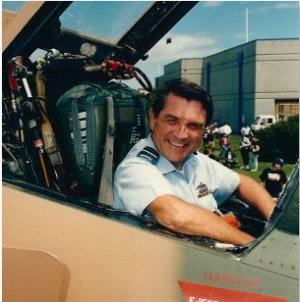
RAAF O217004 GD Pilot 3, 75, 76, 77, 79 Sqns
Died 15 Dec 2020 Aged 83
Air Vice Marshal Hans Jorg Friederich Roser AM
Hans Roser was born in 1937 and raised in the Freiburg region of Germany. He and his family migrated to Australia in 1949. In January 1955 Hans entered the RAAF College at Point Cook as a member of No 8 Course and graduated as a GD Pilot in December 1958.
He was posted to No 23SQN at Amberley then to No76SQN at Williamtown in 1960 flying Vampires. He completed No 5 Sabre Conversion at 2 OCU in 1961 and remained in 76SQN as they re-equipped with Sabres. After a tour in Department of Air as a Personal Staff Officer, he was posted to 78Wing in Butterworth in 1965 serving as a squadron pilot and later FLTCDR in 3SQN with four tours in 79SQN in Ubon. He completed a Mirage OCU in 1968 after he returned to Australia.
In 1969 he was selected, with three other fighter pilots to undergo USAF F-4C training at Davis Monthan AFB, then served a full tour in South Vietnam initially at Cam Ranh Bay with the 12th TFW flying strike operations. He was awarded a Mention in Dispatches for his efforts with the USAF.
He was appointed OC RAAF Laverton in January 1979, and after two years was promoted to AIRCDRE and became the Director General of the Tactical Fighter (Hornet) Program until 1986. He was appointed as a Member of the Order of Australia for his duty on the Hornet project.
On promotion to Air Vice Marshal. He was appointed as Commander, Integrated Air Defence System in Malaysia-Singapore after which he returned to Canberra as Assistant Chief of the Air Staff –Materiel (ACMAT) where he served until appointed as Assistant CDF (Personnel) until retirement in the early 90s
Hans has been chairman of several industry associations and has been a member of several Australian and overseas boards. Between 1998 and 2002 he was a member of the board of Eurocopter Intemational Pacific and from 2000 to 2003 he was Chief Executive Officer of Thales International Pacific Holdings. More recently he was a Director of both ADI Limited and Thales Australia Holdings.
Tributes
*In addition to his MID , Hans was awarded the American medals DFC (with Oak Leaf Cluster (US) ) and the Air Medal (US).
Rest In Peace Hans Jorg Friederich Roser
Good and True Australian
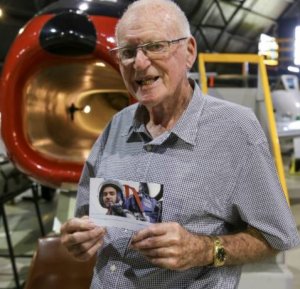
RAAF O218744 Pilot 77 Sqn 79 Sqn
Died 07 Dec 2020 Aged 86
O218744 Flight Lieutenant
DONALD T NEWTON
19 Jan 1934 - 07 Dec 2020
Age 86 years
Born and raised in Sydney, Don graduated from Sydney Technical High School then University where he graduated with a Degree in Civil Engineering.
He enlisted in 1958 on No 32 Pilots Course and was soon flying a range of aircraft including the Mustang, Iroquois, Vampire, Winjeel, Dakota and the Sabre. He flew 350 hours on the Sabres with both No 77 and 79 Squadrons and, from about 1959-1964, saw service in Butterworth, Singapore, Bangkok and Ubon in Thailand.
Post RAAF he was employed as Air Accident Investigator in Sydney. Don also flew commercially in NSW for several years.
Don was a prominent member of both the Cronulla Sub Branch of the RSL as well as the St George Branch RAAF Association NSW Division.
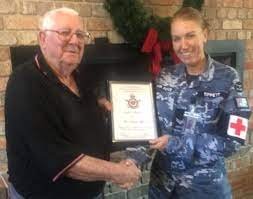
RAAF Engine Fitter 481 SQN
Died 01 Dec 2020 Aged 87
Allan Tate passed away in the early hours of 1st December. Although he lived at Niagara Park on the Central Coast, Allan was well known in Newcastle through the RAAF Association as well as in his local area through the Gosford National Servicemens Branch and Gosford RSL Sub-Branch.
Allan joined the Air Force on 16 March 1953 under the National Service scheme and trained as an engine fitter. He spent much of his time at Williamtown working on Vampires with 77 Squadron and 2 OTU.
Having completed his National Service duty he was discharged on 09 September 1953.
He became president of the Newcastle Branch of the RAAF Association, an office he held for over 20 years until that Branch became part of the Fighter Squadrons Branch. During that time he single-handedly organised the annual Battle of Britain Ceremony in Newcastle. He was a regular attendee at Service ceremonies on the Central Coast and in Newcastle.
For his commitment to the remembrance ceremonies and dedication to voluntarily serving veterans Allan was awarded the RAAF Association State President’s Certificate of Appreciation in Nov 2017. In 2018 he was presented with a Newcastle Volunteer Service Award by the Federal Member for Newcastle Sharon Claydon MP.

RAAF Instrument Fitter 481 SQN
Died 29 Nov 2020 Aged 93
Jack was well known at Williamtown as an Inst Fitter in 481 Maintenance Squadron which was part of his long period of service qualifying for the Long Service Medal.
Jack was also a prominent and competent figure in service sport.
He retired in the early 80's and took up a position with Shortland County Council in Newcastle
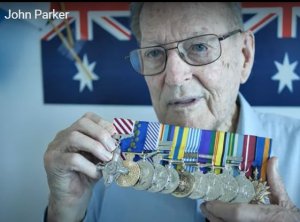
RAAF O33838 Pilot 75 Sqn 77Sqn
Died 06 Oct 2020 Aged 97
John N. Parker AFC OAM DFM Air Medal (US) was an aircrew member of the Royal Australian Air Force from 1950 to 1970.
John joined the RAAF on 2nd FEB 1950 on No 5 Course FTS. Training at No. 1 Flying Training School, Point Cook, Victoria, John carried out his operational training at No. 2 (F) Operational Training Unit (OTU) Williamtown, NSW.
During his Permanent Air Force career, he flew Tiger Moths, Wirraways, Mustangs, Vampires, Meteors, Sabres, NF11s, Dakotas and Canberras. He was a member of the first group of Accredited Jet Flying Instructors in the RAAF (QFI). He was also a Weapons Officer (W), a Fighter Combat Instructor (FCI) and Ground Controlled Intercept (GCI) Fighter Controller.
John experienced active service with No. 77 Squadron in Korea. During 1950-1953 he served based in Kimpo with 77 Sqn (Meteor VIIIs) earning the awards of Distinguished Flying Medal and US Air Medal and surviving to tell the tales, having flown 170 combat missions over Korea.
He also served as Chief Controller/Operations Officer with No. 114 Mobile Control and Reporting Unit at Butterworth, Malaysia, and in Thailand during the period of 'Confrontation' with Indonesia.
On other postings in Australia, John was 'A' Flight Commander of No. 23 (F) City of Brisbane (Citizens Air Force) Squadron, and Commanding Officer of No. 1 (B) Operational Conversion Unit (OCU) at Amberley, Queensland. Having undertaken a short tour in Vietnam, he developed an appropriate flying syllabus for aircrew converting onto Canberras for operational service with No. 2 (B) Squadron based at Phan Rang, South Vietnam. For this and for his command activities, John was awarded the Air Force Cross.
In 1960, John had a very interesting posting to Woomera, SA, as a member of No. 1 Air Trials Unit Target Aircraft Flight. This unit operated the pilotless V12 Jindivik, Meteor U15 and Canberra U10 aircraft as targets for radar tracking and live firing, using surface-to-air (SAM) and air-to-air (AAM) weapons. He was a member of the team which flew the aircraft unmanned, but also the test pilot who conducted the flight tests sitting in aircraft under remote control from take-off to landing on the flight before an unmanned live firing at the target aircraft. This flight could be a rather nerve-racking experience, particularly the landing.
John retired from the RAAF as a Squadron Leader in 1970 and immediately joined the (then) Department of Civil Aviation, Melbourne, as an Examiner of Airmen.
Portrait | No2 FCI Course 1955 | Interview Archive | Air Force veteran surprised by OAM
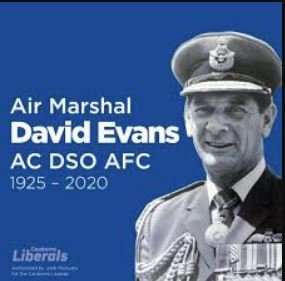
RAAF O22127 GD Pilot Air Staff
Died 02 Sep 2020 Aged 95
Air Marshal Selwyn David Evans, AC, DSO, AFC
AIRMSHL Evans’ contribution to our country and our Air Force cannot be over-stated.
He was among the first teenagers to join the Air Training Corps upon its foundation in 1941, and enlisted in wartime RAAF on 05 June 1943.
He graduated in the Empire Air Training Scheme as a Sergeant pilot in 1944 and was in the middle of a conversion course when World War II ended.
AIRMSHL Evans was slated to be demobilised along with several thousand other Australians.
However, so deep was his desire to serve his country as an aviator and warrior, he travelled to RAAF Headquarters in Melbourne and argued his individual case with the officer responsible for discharges.
He was successful.
AIRMSHL Evans continued his career in Air Force which included flying for the Berlin Airlift, service in Vietnam in 1967 and several high profile roles within Air Force.
He was promoted to Air Marshal in 1982 and appointed to Chief of the Air Staff where he focused on morale, air power doctrine, and improving defensive capabilities in northern Australia.
Although he retired in 1985, he continued to serve his country by writing and lecturing on defence matters and passing on his vast knowledge to a new generation.
He also served as patron of numerous organisations including the Airfield Defence Guards Association, the Royal Australian Air Force Association (ACT Division), The Celtic Club Australia, and the Royal Australian Air Force Staff College Association
AIRMSHL Evans was a truly great thinker and contributed immensely to building the sophisticated, professional force I have the honour of commanding today.
For those of you who had the pleasure of knowing AIRMSHL Evans, I hope you will spare a moment to remember the person who his successor AIRMSHL Jake Newham described as possessing an, ‘extraordinary zeal and robustness that helped instil a renewed sense of pride in the Service’.
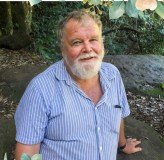
RAAF Armourer: Mirage 481 Sqn 3Sqn
Died 21 Aug 2020 Aged 58
David started his RAAF career on 32 Apprentice course. His career was pretty well centred around the “Fighter Weapons System Stream” although he did do a period at 1CAMD at Kingswood. He served on Mirage with 481(M)SQN and 75SQN in both Butterworth and Darwin and was one of the “earlier gunnies on Hornet” at 2OCU. He is remembered by many as a very intelligent man, a great worker and one funny, funny bugger.
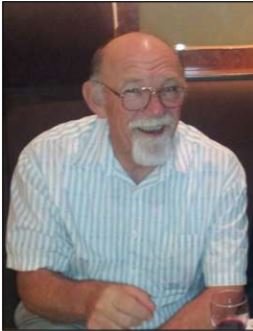
RAAF Airframe Fitter - Mirage - F111 ARDU 3Sqn 77Sqn
Died 27 Jul 2020
Bob Irvine passed away on the night of Monday 27JUL20. He had been fighting a huge battle with multiple cancers for quite a while – he had fought a very hard & noble battle before eventually succumbing to “the mongrel”.
Bob was a fantastic guy and great friend to many - his loss will no doubt be felt by many. There was no intention to have a funeral in this current pandemic and there was a scattering of his ashes at Lilydale Airport (VIC) at some point in the future when things settle. Bob served in numerous locations during his RAAF career. One of his earlier postings was to ARDU at Laverton where he was introduced to the Mirage. He also served at Butterworth with 75SQN in the early ’70s and later with 3SQN in the late ‘70’s – early ‘80’s. Whilst in Malaysia he was one of the RAAF Radio Butterworth announcers - he also learnt to fly in Penang and achieved his Pilot’s Licence there.
On a reflective note, Bob went to F-111’s later – whilst at 3AD he was working in and managing the guys with Deseal / Reseal - then a FSGT he attempted to raise/escalate his concerns about that environment and the health of his people. As a result, he was (to put it bluntly) badly treated - this became his driver to leave the RAAF. Sadly, Bob was due to retire a few years ago but the loss of his wife Jeanie to cancer kept him working for a while longer. He started flying again and was an Instructor with Lilydale Flying School. He eventually found a new lady in his life (Linda) a couple of years ago and he finally retired last year. They went away for their first retirement holiday whereupon he fell ill with cancer. He did receive DVA support for his cancer treatment – particularly appropriate in light of his service at Deseal / Reseal.
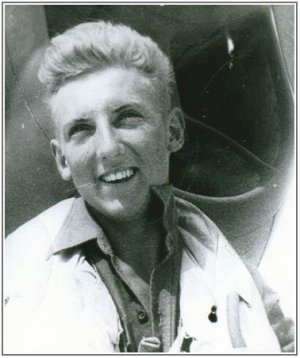
RAAF A419051 PLT 77 Sqn Korea
Died 27 Jun 2020 Aged 96
419051 WARRANT OFFICER JAMES HENRY MITCHELL
5 April 1924 - 27 June 2020
Age 96 years
Our friend and veteran colleague Jim Mitchell has passed away aged 96 years. Jim was the oldest surviving 77 SQN WWII pilot and was a prominent member of the 77 SQN Association.
Jim was an 18 year old teenager when he enlisted on 26 June1942 and did his elementary flying training at Benalla, gaining his wings on Wirraways at Deniliquin. By September 1943 he was training to be a fighter pilot at 2OTU at Mildura.
In late January 1944 he travelled by troop train, with thousands of others, from Spencer Street Station to Townsville and thence to Garbut Airfield. From there he joined 84 Squadron on Horn Island before the Squadron moved back to Darwin pending an attack from the Japanese, then back to Horn Island ten days later.
No. 84 Squadron was a Royal Australian Air Force (RAAF) fighter squadron of World War II. It was established in February 1943 and was part of the defences of the Torres Strait area from April 1943 until May the next year.
In June 1944 Jim joined 77 Squadron based at the time on Los Negros Island. He island hopped with them until November when he returned to Australia to the Central Flying School at Point Cook to do an instructor’s course graduating in February the following year. The last four months of the war were spent at Deniliquin as Staff Instructor. Date of discharge 14 May 1946 from 38 Squadron.
At war’s end he volunteered to fly as a co-pilot on C475 returning Australian prisoners of war.
Survived by his three children Judy, Beverley and Colin and loving grandfather & great grandfather.
WW2 Pilots in the clouds once more - ]im‘s reunion with the P40 Kittyhawk
No. 84 Squadron Kittyhawks over Thursday Island in 1943
Rest In Peace James Henry Mitchell
Good and True Australian
LEST WE FORGET
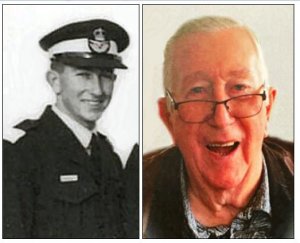
RAAF O56146 Pilot 76 Sqn
Died 02 Jun 2020 Aged 80
Graham joined the RAAF 12 January 1961 into No 41 Pilots Course, Point Cook and commenced Basic Flying Phase 12 Jan - 06 Nov. He graduated from the Advanced Flying Phase at Pearce on 30 Apr 1962.
Next Posting was to Williamtown for Sabre Conversion Course on No 14 Sabre OCU which finished on 10 Jul 1962 followed by a posting to No 76 Operational Squadron flying Sabres.
After the Sabre tour he was posted to Woomera to join the Trials Flight which, at that stage, was operating Jindiviks, Meteors and Canberras.Graham entered matrimony towards the end of that posting.
During the mid to late 60s, Tub was posted to No 2 Sqn for service on Canberras during the Vietnam War.
In a subsequent posting he became one of the original RAAF F-111 Crews in 1968. However, the delay in delivery of F-111 aircraft to Australia and the substitute loan of F4 Phantoms from USA, opened an opportunity for Tub. Accordingly in August 1970, he was posted to USA for conversion to the aircraft, following which, in November he joined No 1 Sqn with their new F-4E Phantoms.
(In the linked photo, Tub is on the wing group, 5th from the left)
It is noted that Graham did not fly RAAF F-111s after tour on the Phantom F-4.
Promoted to Squadron Leader 01 Jan 1972.
Graduate of RAFGD Weapons Course and Weapons Employment Course.
01 July 1976 Graham was posted to become CO No 35 (Caribou) Squadron in Townsville and during this period Graham also filled the role as Army Liaison with No 3 Brigade Townsville.
Promoted to Wing Commander 01 Jan 1982.
Service decorations and medals were MBE, Vietnam Medal, DFM with 2 Clasps, National Medal, Vietnam Campaign Medal and Return from Active Service Medal.
Graham resigned from RAAF on 20 January 1986.
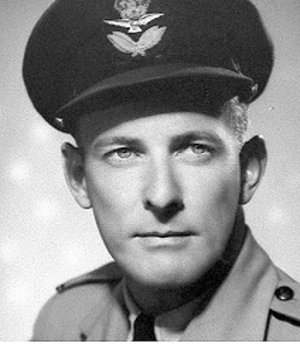
RAAF Pilot 77 Sqn Korea
Died 13 Apr 2020 Aged 92
06356 John Alex Seaton MBE
21 Apr 1927 - 13 Apr 2020
Age 92 years
It is with great sorrow and respect but with pride in his service and fondness for him that we salute our good friend and colleague, John Seaton who passed away peacefully. John was just eight (8) Days short of his 93rd year.
John Alex Seaton, born 1927 in Launceston, Tasmania. Applied to join RAAF at the start of the Korean War, 1950, whilst working for Shell in Territory of Papua New Guinea, but was not accepted until his Shell contract was completed in early 1951.
Commenced flying training with No 8 Pilots Course in January 1952 at Archerfield Queensland (No. 1 ITS) and then onto Uranquinty, NSW (No 1 BFTS) then Point Cook (No 1 AFTS). Graduated December 1952.
On graduation John was posted to No 2 (F) OTU, Williamtown. Operated on P51 Mustang and Mark 30 Vampire before posting to No 77 Squadron, to Iwakuni, Japan and then on to Korea on Mk 8 Meteors.
Completed 49 missions before Armistice on July 27, 1953. Remained in Korea until October 21, 1953, then posted to Iwakuni to assist Gus Goy at Conversion Unit.
Posted back to Australia on November 7, 1953. Long leave until February 10, 1954 then to No. 11 FIC at East Sale. Graduated QFI June 7 of that year and posted to No. 1 BFTS, Uranquinty as instructor on DH82, Tiger Moth and Wirraway.
After 18 months at ‘Quinty’ John was posted to Antarctic Flight on November 14, 1955. Six weeks at Pt. Cook on Beavers and Austers (wheels, skis and floats) then down to Antarctica December 26, 1955.
He spent 15 months away from Australia, 12 months at Mawson doing wide range of flying duties like photographic, transport of personnel, exploration, depot laying, etc. Whilst on an exploratory photographic flight on November 28 1956 he had the amazing good fortune to find the Lambert Glacier, the largest glacier in the world.
Three months leave on return from Antarctica, then posting to 75 Squadron, Williamtown June 18, 1957.
Joined Qantas at end of 1957. Six years employment including two and a half years in TPNG, followed by three and a half years on B707 out of Sydney.
To General Aviation in 1964 operating out of Sydney, then to Solomon Islands in October 1966 as Chief Pilot and General Manager until 1977.
Flew part-time with Aquatic Airways at Palm Beach until June 1985.
Last flight in command June 16 1985 in a Cessna 150 at Warnervale, NSW thus ending the profession of flying having flown 27 different types of aircraft over 34 years.
After the career in aviation he was employed in the building industry and in small business management, retiring finally aged 72.
In addition to his MBE, he was also awarded the Polar Medal and the Air Medal (US).
No 8 Pilots Course RAAF Base Mawson
Rest In Peace John Seaton
Good and True Australian
LEST WE FORGET
Tributes
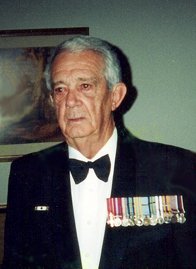
RAAF O2774 ENGO
Died 24 Jan 2020 Aged 93
Squadron Leader
VINCENT JOSEPH “DINNY” O'BRIEN MBE (RET'D)
18 Jun 1926 - 24 Jan 2020
Age 93 years
It is with great sorrow that we report the passing of our good friend and colleague 'Dinny' O'Brien who passed away last Friday after an extended period of health and medical challenges which he unabatedly addressed with determination and purpose.
Brief Service Timeline
1944 - Joined RAAF July
1945 - Served at 8OTU Parkes NSW to Dec 45,
1946 - Crew Conversion Unit & 75 Sqn WLM,
1947 - Fitter 2A (Airframe Fitter) Course
1948 - 81 Wing BCOF Japan to Dec 48,
1950 - 77Sqn Japan/Korea Jul 50 - Oct 51,
1951 - 2OCU & 481Sqn WLM
1954 - Promoted SGT, 78 Wing and 2 OTU
1957 - OTS Rathmines
ARDU & CAC to Dec 60,
Mirage Project Paris Jan 61 to May 64,
2OCU/75/481 Sqns WLM - Aug 69,
75 Sqn Butterworth - Sep 70
1977 WLM - Sep77 Resigned
Vincent Joseph O’Brien, known to the world as “Dinny”, a nickname he was given when he first arrived at Williamtown in 1946, was born in 1926 at Cowra, New South Wales.
After leaving school he joined the local Air Training Corps in 1942 and remained a cadet until joining the RAAF at Sydney on 18 July 1944 Basic (Rookie) Training, initial Engineering & Trade Training (Flight Rigger) was completed at Cootamundra, Adelaide and Ascot Vale.
First Operational posting was to No 8 OTU, Parkes, NSW, working on Spitfires until the end of WWII. After a brief period at No 5 SFTS, Uranquinty, was posted for discharge to Bradfield Park, Sydney. Signed a two year contract to serve in the Interim Air Force then posted to 31 Squadron, Williamtown which was abandoned and he was transferred to Crew Conversion Unit (CCU) to work on Mosquito, Wirraway & Mustang aircraft in March 1946. Remained at Williamtown until May 1947 then completed Fitter 2A (Airframe Fitter) course at Wagga.
Shortly after returning to Williamtown was posted to 481 (M) Squadron at Bofu and Iwakuni, Japan, as a member of the British Commonwealth Occupation Force (BCOF) where he remained until December, 1948. Whilst in Japan Interim Air Force contract expired and was “conned” into joining Permanent Air Force (PAF) for twelve years. Returned to Williamtown and remained with No 78 Wing until posted to No 77 Squadron at Iwakuni, arriving on 7 July 1950. Dinny’s tour of duty was fifteen months after which he was posted back to Williamtown in November 1951.
Went over on the Westralia, landed at Labuan, Iwakuni and Bofu for 3 months. They went to Tokyo month around doing guard duty, which was great fun, the Yanks taught them how to march. It was the 65th Infantry Battalion of the USA Army.
While with 77 Squadron he served at Pohang, Hamhung, Pusan and Kimpo in both North and South Korea, working on Mustang, Meteor and DC 3s. Promoted to corporal in November 1950 while at Hamhung. Returned to Williamtown, per the Kanimbla which was like a cattle truck – absolutely terrible, to 78 Wing and 2 OTU,
and promoted to sergeant in November 1954 and remained there until posted to Officer Training School, at Rathmines in September 1957.
Postings after being commissioned included ARDU and 21 Squadron at Laverton then RESENG CAC, Fishermans Bend, Melbourne. In January 1961 he was posted to the staff of the Mirage Project and remained with the project in Paris until returning to Williamtown in July 1964. The remainder of Dinny’s service with the exception of a tour as SENGO 75 Squadron, Butterworth, Malaysia in 1969/70, was spent at Williamtown at various Units including 2OCU, 75 and 481 Squadrons. Dinny took early retirement in September 1977 , having served for thirty three years.
Dinny married in April 1950 ten weeks before going to Korea. His son Craig was born at Newcastle in November 1952 and daughter Jane was born in July 1962 at Paris, France. He was appointed a Member of the Order of the British Empire (MBE) in 1974 and awarded the Queen’s Silver Jubilee Medal in 1977.
One of Dinny’s claims to fame is that he was one of the few ENGOs not to be posted to HQSUPCOM, HQOPCOM or Air Office but he did enjoy many attachments to Darwin, Townsville, Bali, Sale, Wagga, Learmonth etc. and rounded off his Air Force career with two years in the RAAFAR at Williamtown 1981/1983 as DCO during the formation of No 26 Reserve Squadron.
Interview by Dr Chris Clark - Corporal Airframe Fitter No 77 Squadron RAAF, Korea 1950-1951
Rest In Peace Dinny O'Brien
Good and True Australian
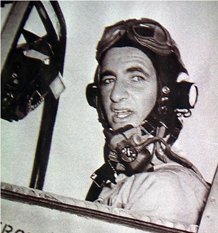
RAAF O33134 Pilot 3Sqn 75Sqn 77Sqn RAAFCOL
Died 12 Jan 2020 Aged 97
Keith Joined the RAAF in October, 1941 joined as aircrew in the Air Force Reserve. In April, 1942 he was called up for No. 1 Initial Training School, elementary training on Tiger Moths at Temora and Uranquinty on Wirraways. He was awarded his Wings in January 1943.
After Bombing and Gunnery School in Port Pirie, Wireless Air Gunner’s School at Ballarat, he was posted to Kittyhawks into No 75 Squadron 1943. From there he served in campaigns New Guinea, Noemfoor Island, Morotai and Borneo.
After the war re-enlisted as a member of the Interim Air Force which led to two years in Japan then a year in Korea flying Meteors. He was awarded the DFC and the American Air Medal during this service in Korea.
1952 - 1954 After Korea went to Perth 25 Sqn as Flight Commander flying Mustang and Vampire aircraft. After one year became Commanding Officer (CO 25Sqn).
1955 - Keith went to UK to attend the Day Fighter Leader's Course, on Hunter aircraft, as a pre-qualification to be Chief Instructor for the planned 2 OTU FCI course back in Australia.
1956 - Keith arrived back from UK and took the reins beginning with No 2 FCI Course in 1956, and continued another three or so courses over 1956 - 57.
1958 - mid 1960, a surprise posting to America USAF sent Keith on Exchange Duty with the Air Force Academy for two and a half years.
Mid 1960 - 1962 - Posted to No 1 CRU (a control and reporting Radar unit) in Brookvale NSW. Owing to his air experience he eventually took over as the chief controller.
1963 - 1964 - His previous posting to USAF Academy placed him in good stead for the post of OCCS (OC Cadet Squadron) RAAF Academy.
1965 - Staff College - RAAF Staff Course at Canberra for a year.
1966 - 1968 - Posted to Butterworth as CO No 3 Squadron flying Sabres for six months then transferred to CO No 77 Sqn.
1969 - Posted to Point Cook as CO of the Officers Training School, then CO Base Squadron Point Cook.
1971 - Sent to Singapore on Exchange Duty with the Singapore Air Defence Command.
1972 - Posted to Operational Command Glenbrook as Staff Officer Planning.
1973 - Retired on 17 Nov 1973 after 33 yrs service.
RAAF A228389 HQLC Hornet Engineering 3 Sqn
Died 31 Dec 2019 Aged 63
The following is our recorded Military background in respect of Stephen:
1985 481 Hornets,
1987 3 SQN Hornets, 1
992 HQLC Hornet Engineering.
2005 Transferred to APS continuing on with Hornet Engineering.
Transferred to DGTA Tactical Fighter Team.
Retired from Defence Dept after 42 Years of service.
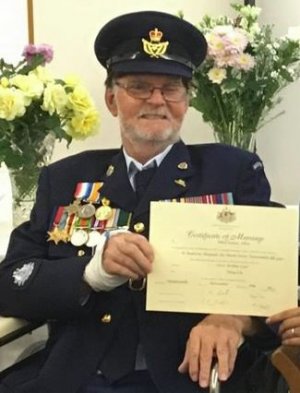
RAAF A118147 Airframe Fitter Mirage 478(M) Sqn 481(M)Sqn
Died 11 Nov 2019 Aged 60+
Clive joined the RAAF in 1968 as an Adult Trainee and ranked his two "fast-jet" postings amongst the highlights of his RAAF career when he worked on Mirage aircraft at 481(M)SQN RAAF Base Williamtown from 1970 to 1971 and then at 478(M)SQN Air Base Butterworth from December 1971 to June 1974. He went on to become a WOE in 1990 and his last posting was as RESENG Bankstown. After 23 years in the RAAF he retired back to Queensland in 1991, whereupon he then joined & served in the Queensland Police Service until he had to compulsory retire at age 60. He then retired to his hometown of Warwick with his wife and family.
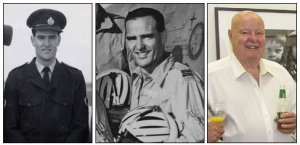
RAAF O42353 Pilot 2(F)OTU, 77SQN, 2(F) OCU, 75SQN, 76SQN, AJWE
Died 07 Nov 2019 Aged 86
2(F)OTU, 77SQN, 2(F) OCU, 75SQN, 76SQN, AJWE
AUSTRALIA, MALAYA, THAILAND, KOREA - 1954 - 1982 + 2YRS RESERVE
Nobby commenced his Air Force Career when he began No 23 Pilots Course in 1956.
On 21 Jan 1957 upon graduation he was posted for Fighter training on No 25 Vampire Course OTU.
June 1957 began the Sabre Conversion instructed under the umbrella of 75 Sqn followed by a posting to 77 Sqn at Williamtown.
A posting to Butterworth came about February 1959.
Nobby was assigned RAAF Liaison Officer Bangkok over the period 1963-64
On 8 Feb 1965 joined No 8 Fighter Combat Instructors Course
During his posting at 2 OCU he was a member of the Marksmen Aerobatic Team (formed in April 1966 and lasted until September 1967) who were Bob Walsh, Bruce Grayson, Nobby Williams, Fred Freeman, Stu Back and Ron Johnson.
On 10 April 1967 he began No 9 Mirage Course.
As a Squadron Leader, during the period Jul 71-Dec 71, he served in Vietnam as a Forward Air Controller.
Nobby was both Flt Commander and CO 76 Sqn (with Mirages) until the squadron was disbanded.
Tributes
Nobby was a friend, a great colleague, admired by plenty and not beyond light-hearted activities such as being known as the short shorts guy or the willingness to utter such things as his frequent refrain No bloody funeral!.
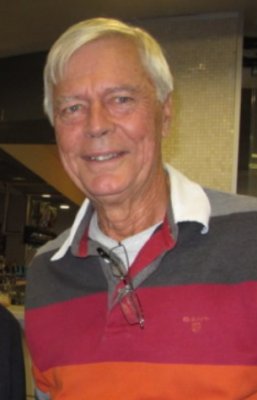
RAAF O17732 Pilot 75 SQN, 3SQN
Died 18 Sep 2019 Aged 75
O17732 Group Captain
JOHN DOUGLAS MacPHERSON EDWARDS (Retd)
qfi qtc
11 Feb 1944 - 18 Sep 2019
Age 75 years
It is with great regret that we advise the passing of a great mate and colleague, Doug Edwards, who passed away Wednesday 18 September 2019.
Doug had been silently fighting leukaemia for some time and this turned into Acute Myeloid Leukaemia about 12 months or so ago. He was transferred into palliative care at the Wesley hospital in Brisbane to better control his pain, but eventually the cancer got the better of him
Doug began his RAAF career when he joined No 46 Pilots Course at Point Cook, Vic. Following Graduation in June 1963, he was posted to Williamtown for Sabre Conversion in Aug 63 with No 18 OCU Sabre Course.
On completion of the Sabre Course he was posted to No 75 Squadron, also at Williamtown. In late 1964 the Squadron was involved with the detachment of eight Sabres to Darwin, deployed to meet the Indonesian Confrontation occurring at the time. Also at the time, 75 Squadron pilots were being systematically selected to undertake Mirage Conversions. During the ensuing juggling of pilots, Doug also managed time with 76 Squadron until 23 Aug 1965, when, as a FLGOFF, he joined No 4 Mirage Course.
In May 1967 Doug was selected to participate in 'Operation Fast Caravan' - the task transferring 75 Squadron from Williamtown to Butterworth to replace the ageing Sabre force.
Subsequently to his return from Butterworth in late 1969, Doug completed a Flying Instructor Course at Central Flying School, RAAF East Sale then in 1970 began a two year tour as QFI with No 2 FTS at RAAF Pearce, WA.
During 1974-75 he was OPSO in No 3 Squadron - again in Butterworth and following that was posted for overseas service as Assistant Air Atttache in Washington, USA for the period 1977-78
In 1983 Doug was promoted to Group Captain to take the post of CO Base Squadron Williamtown for the period 1983-84 followed by a posting for the period 1985-86 to Officer Commanding RAAF Base, East Sale from where he retired.
Tributes
Rest In Peace - a Top Guy - Doug Edwards
A Good and True Australian

RAAF O37576 PLT 77 Sqn 9 Sqn 5 Sqn
Died 03 Sep 2019 Aged 90
FROM RAAF pilot in three wars to a flying religious minister in the Australian bush, Bob MacIntosh became widely known and respected across many communities.
He flew Meteor fighter planes in South Korea and Iroquois helicopters in the Malaya and Vietnam conflicts, and was also involved in many peacetime emergencies.
Bob grew up in the Sydney suburb of Northmead, where his father was a public works engineer. He won a scholarship to Kings College before starting an engineering degree.
However, Bob had been bitten by the flying bug and because of the prohibitive cost of private lessons decided to join the RAAF in October 1951.
Helped by his aptitude for maths, he quickly progressed through pilot training, flew Vampires and Mustangs, and within 18 months was training in Meteors in Japan.
Bob arrived in South Korea in May 1953 and the war was “called off” in July. But in two months he flew many sorties with 77 Squadron.
He said North Korea’s MiG-15s were superior to the Meteors, especially at altitude. This meant the Meteors were mainly used for their accuracy against ground targets.
Back in Australia, he married Jenny, whom he had met before going to South Korea. He then trained in Iroquois helicopters in the US and saw action in counter-insurgency operations in Malaya.
He was among pilots who went straight on to Vietnam where he was involved in two key engagements among his many sorties.
At the Battle of Long Tan in 1966, he was kept grounded as the “dust off” helicopter, despite the desperate need to resupply our troops.
One of his fellow pilots dropped ammunition at the 11th hour, saving them from annihilation.
Instead, he flew in that night under pitch black conditions guided by the light of a single pencil torch to pick up the most badly wounded.
In Operation Bribie the following year, Australian troops landed unaware on a hornets’ nest of Viet Cong and were badly outnumbered.
Bob’s Iroquois was among the “racetrack” of helicopters which flew in under heavy fire to evacuate the surviving soldiers, including 27 wounded.
At one stage a sitting duck on the ground, Bob said it helped that the Viet Cong had been trained to aim in front of helicopters. His is now at the Australian War Memorial.
Bob returned to Australia to train helicopter pilots. Previously, they had been sent to the US so Bob had to write the syllabus from scratch, have it certified, and train pilots all at the same time. He was awarded an Air Force Cross in 1969 for this work, one of his 16 war and peacetime decorations.
Bob used his Vietnam experience plucking wounded soldiers from the jungle by cable and winch to rescue survivors from the roofs of houses.
He had started out in South Korea as an agnostic, but the constant ground fire and tracer bullets was a factor in his reading the Bible from cover to cover, and having often fiery arguments with the padres.
By the end of that war he had adopted non-denominational religious beliefs. Jenny was a practising Anglican but that church’s refusal to give him communion led him to adopt the Uniting Church.
When he reached 50, the mandatory retirement age for flying wing commanders, Bob studied at theology college. His first posting at Bordertown did not start well. His lesson on Jonah and the whale was met with outrage from the conservative parish which believed in the tale’s literal truth. Over the next three years they were reconciled and eventually came to admire their preacher.
When the church sought a minister/pilot for Meekatharra, an enormous parish in WA that had its own plane, Bob and Jenny took up the challenge.
They spent 10 years serving the needs of small towns, stations, mines and Aboriginal communities across the northwest of Australia.
After his second retirement, Bob became deeply involved in the veterans community, was vice-president of the RAAF Association in SA and president of its Mitcham branch.
He received a medal of the Order of Australia in 2015 for his work in the community.
He is survived by Jenny, four children, 15 grandchildren and 13 great grandchildren.
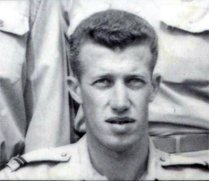
O110655 Pilot 3Sqn
Died 18 Aug 2019 Aged 74
Mike began his RAAF career in 1963 when he was selected for enlistment to No 16 Course RAAF Academy, Point Cook. His service CV follows:
1963 to 1966: No 16 Course RAAF Academy
Dec 1966: posted to No 1 BFTS for No 63 Pilots’ Course
Feb 1967: posted RAAF Staff London for pilot training with the RAF
Mar 1967 to Dec 1967: No 184 Pilots’ Course at No 6 FTS, RAF Acklington, Northumberland (Jet Provost Mk 3 and Mk 4)
Jan 1968 to Aug 1968: No 40 Gnat/Hunter Course at No 4 FTS, RAF Valley, Anglesey (Advanced Flying Course, Hawker Hunter T7 and F6)
Jan 1969 to May 1969: No 33 Sabre Operational Conversion Course, No 2 OCU, RAAF Williamtown
May 1969 to Dec 1969: Sabre Transition Squadron, No 2 OCU, RAAF Williamtown
Jan 1970: promoted Flight Lieutenant; posted to No 15 Mirage Operational Conversion Course, No 2 OCU, RAAF Williamtown
Jun 1970 to Jun 1972: No 3 (Mirage) Squadron, RAAF Butterworth, Malaysia
Jul 1972 to Sep 1972: Flying Instructor Course, Central Flying School, RAAF East Sale
Sep 1972 to Dec 1974: Flying Instructor, No 2 FTS, RAAF Pearce (Macchi MB-326)
Jan 1975: promoted Squadron Leader; posted to Personnel Branch, Air Force Office, Canberra
Jan 1979: promoted Wing Commander; posted as Commanding Officer, No 2 FTS, RAAF Pearce
Jan 1981: posted to Force Analysis Division, Department of Defence, Canberra
1983: Retired

RAAF Pilot 75Sqn, 77Sqn, 79Sqn
Died 31 May 2019 Aged 84
Murrays's RAAF Service:
1956/57 - Enlisted for No 28 Pilots Course
1958/60 - 75Sqn - Williamtown
1960 - Antarctic Flight - Sale/Pt Cook
1961/63 - 77/79 Sqns - Butterworth Ubon
1964 - 1984 Went to Qantas then to Cathay Pacific.
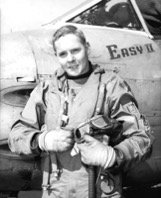
RAF PLT 77 Sqn Korea
Died 15 May 2019 Aged 89
AVM John Price CBE DL
607094
“Tail Rotor Price”
Air Vice Marshal John Price, who died aged 89 in May 2019, was one of many RAF pilots who flew with 77 Squadron in Korea. He joined the Squadron in December 1952 after flying Vampires in Germany. John also came to Williamtown on exchange at OCU.
John Price joined the RAF as a cadet at Cranwell in 1948 and his early flying tours were with 11 Squadron in Germany and then 77 Squadron RAAF in Korea. He later switched to helicopters as OC 110 Squadron, returning to fixed wing when he commanded RAF Laarbruch. He was DofOps (Strike) during the Falklands imbrolglio and finally ACAS (Ops)
I have to include a story told after his death by another helicopter pilot that explains John’s nick name which he kept all his career.
In July 1964 he was on Basic Helicopter Course (Sycamores) - Watching the fun from the crew room was a chopper pilot and other trainees. As XG507 came into view it started flaring and sinking, and flaring , and now the tail stinger is almost on the ground. At this point I should have said to crew room I say chaps this looks pretty sporting what-ho but being a Sgt pilot I probably said F$$% hell he’s crashing, as by now the tail-rotor was furrowing the turf and splintering.
The Sycamore now yawed to the right on its wheels and proceeded at some pace across the grass towards the airfield boundary, shedding the rear cabin doors in the process, eventually stopping, followed very shortly afterwards by a fire engine, ambulance and a staff car, probably OC Flying. Now thinking about this I could not think why the aircraft had scuttled off in the direction it did. “Old Duffer” searched the records and the accident report stated that “the student (JWP) was on his FHT and doing an engine off landing blah blah etc etc so when we did EOLs after entering auto when stabilised one pulled the idle cut off and the engine stopped, restart when safely on the ground so, if you are still with me, no torque, no tail rote, aircraft yaws to the right. Bristol Sycamore HR 14 XG507 was written off 16/7/1964. Crashed on take-off at Ternhill after pilot error - another report notes damaged in heavy landing at Ternhill, whilst with CFS - aircraft retired.
John is fondly remembered by his many friends in the RAAF and stories abound about his activities on his various motor bikes, in fact motor bikes feature largely in most people’s memories of him.
Contributed by Lesley Gent AO
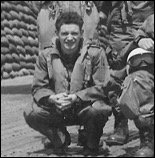
RAF PLT 77 Sqn Korea
Died 15 May 2019
BRIAN JAMES “ Chunky” BALL 579588 (RAF)
Taken from a group Squadron Pilots photograph 1953
Photograph Richard Gilham
Wing Commander Ball passed away in May 2019 after a struggle with cancer. Not long before his death I was happy to facilitate contact for him with old “mates” from Korean days. Jake Newham kept up a correspondence until his passing which his daughter, Lindi, said he appreciated very much. The photographs he received particularly enjoyed.
Brian James Ball joined the RAF as an aircraft apprentice. He won a cadetship to RAF College Cranwell – 49 entry.[1] He received promotion from Flying Officer to Flight Lieutenant with effect 5 October 1952.[2]
“Chunky” Ball arrived at Kimpo and 77 Squadron on 2 April 1953[3] and the following day, accompanied by FlgOff E A Arnott took his first ride in 77-851. This was an introduction recce that was interrupted due to bad weather.[4] Halestorm (77-851) was famous for being the plane flown by George Hal when he shot down a MiG on 27 March 1953.
Crashed on take off 29 August 1953 [5] - A77-857 - pilot B J Ball. The crash was caused by a chrome metal ring about 1.5” in diameter and 1” across the flat which normally was fitted to the left throttle grip, and rotated in sympathy with the right throttle twist grip. His rudders jammed, and the ring found later between the right pedal and the boot-slide.[6]
Brian left Kimpo on 26 September 1953 on completion of Operation Tour.[7]
FltLt Ball was awarded a DFC which was promulgated Tuesday 11 May 1954:[8]
“The Queen has been graciously pleased to approve the following award in
recognition of gallant and distinguished service in Korea
Distinguished Flying Cross
Flight Lieutenant Brain James BALL (579588) Royal Air Force.”
He was promoted in July 1958 to Squadron Leader[9] and to Wing Commander with effect 1 July 1963.[10] At one stage Brain was DRQFI at Cranwell.[11] He and his family spent some time in Canberra where he completed a Staff Course.
After thirty years service, on 31 October 1978, Wing Commander B J Ball took retirement from the RAF.[12]
DFC_ We were flying over the target and it was clear to me we were going to miss it. We were too high. I left the formation and dived down to 600 feet avoiding the flak. The target was a white building. I hit the target and returned to the formation. Thus the mission was successful.
Australian War Memorial P00402.006
Back Row: Squadron Leader Neville McNamara
Foreground: Flying Officer L. Schwaiger (RAF)
Centre Row: U/K, Flt Lt K Williamson (RAF) & Flt Lt Brian Ball (RAF)
[1] AVM John W Price (Retd)
[2] London Gazette 28 October 1952
[3] Unit History A50 sheet 425 – NAA p647
[4] Unit History A51 NAA p658
[5] ADF Serials
[6] AVM Jake Newham (Retd)
[7] Unit History A50
[8] The London Gazette 11 May 1954 p.2765
[9] The London Gazette 1 July 1958 p.4143
[10] The London Gazette 28 June 1963 p.5637
[11] AVM John W Price – RAF (Retd)
[12] The London Gazette 7 November 1978 p.13295
Contributed by Lesley Gent AO
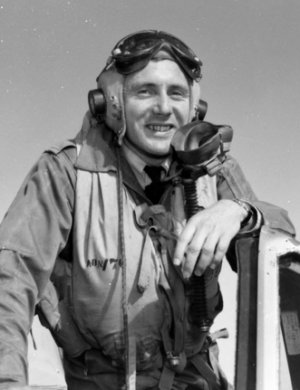
RAAF Pilot 77 Sqn
Died 16 Apr 2019 Aged 92
An interesting career is highlighted in the following material.
1947: Joined the airforce No. 1 Flying Training School Point Cook.
1950: Graduated from No.2 Course, No. 1 FTS
1950: Joined 76th Squadron in Williamtown.
October 8 1950: Joined 77 Squadron, Initially in Japan.
October 12 1950: 77 Squadron based in Korea (Initially Pohang Base) Flying Mustangs
March 20 1951: Shot down by ground fire and rescued by American 3rd Air Rescue Squadron from behind enemy lines.
April 26: Transferred to Meteors while still in Korea
Nov 1951: Returned to Australia
July 1952: Left for Malta. Joined 78 Wing/76 Squadron. Flew Meteors and Vampires
July 1955: Completed Flight Instructors Course at East Sale.
1956 - 57: Instructed at Uranquinty.
Feb 19 1957: Completed his last flight in the Air Force in a Winjeel.
Cecil's post-service was mainly a long duration with DCA as Examiner, then various General Aviation jobs including tourist tours and flying DC3 (with colleague Jack Curtiss)
Tributes
Medals
Distinguished Flying Medal
Australian Active Service Medal With Korean Clasp 1945-1975
British Korean Medal
United Nations Medal Korea
Australian Service Medal with Japan and Middle East Clasp 1945-1975
Australian Defence Medal
American Air Medal
Korean Ambassador For Peace Medal
RAAF Instructor Recruiting 77 Sqn
Died 01 Mar 2019 Aged 81
Dan was a serving member of RAAF from 1955 to 1980. He held the rank of Flight Sergeant when he retired.
His diversified career included different RAAF activities such as an instructor at Wagga Wagga and working in RAAF Recruiting in Newcastle. He was returned from active service five times.
Dan was always a willing and diligent participant among his colleagues at 77 Squadron Association events and activities.
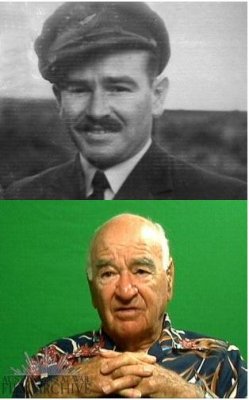
RAAF RAF RN RAN O404062 Pilot
Died 19 Jan 2019 Aged 98
On 19 January 2019 legendary RAF and RAAF pilot "Nat" Gould passed away at the age of 98. Nat was a well known identity to all in the past and present military aviation community.
Nat learnt to fly at Archerfield Queensland, enlisted on the 29th April 1940 in Brisbane. He joined No.1 Course Empire Air Training Scheme from which he graduated Sergeant. He sailed for England in December 1940 posted to 17 Squadron RAF flying Hurricanes in Scotland.
Nat has had a most extraordinary career and has flown 34 types of aircraft; single engine, twin engine, helicopters, propeller and jet. The majority of hours in flying order were Hurricanes, Spitfires Mark VCs and Mark VIII, Seafires Mark IIIs and XVs, Seafurys and Fireflys, all single engine top line fighters. During this caareer Nat served with:
17 Squadron RAF
134 Squadron RAF
75 Squadron RAAF
457 Squadron RAAF
899 Squadron RN
801 Squadron RN
780 Squadron RN
805 Squadron Fleet Air Arm RAN
816 Squadron Fleet Air Arm RAN</ul>
For more stories and detail refer to the article on the Spitfire Association Website
Download another perspective on Nats legendary Status
Nat Gould retired as a Commander in 1965, having served 17 years in the RAN. He then worked for Hawker de Havilland as their Marketing Manager for a further 12 years, before becoming a Director on the Board of British Aerospace. He retired in 1983.

RAAF O315910 GD PLT 3,75,76,77 SQNS 2OCU
Died 23 Dec 2018 Aged 77
Tributes
LESLIE NORMAN CLARKE DUNN EULOGY
O315910
I am Dave Bowden a long time friend of Les and have been asked to talk about his life in the Royal Australian Air Force. Like many of his friends here today, Les was a career member of the RAAF. While he had many jobs he only had one boss.
Les joined the RAAF as a direct entry aircrew in January 1963. He underwent the usual initial officer training which is closely tied to flying training at Point Cook in Victoria and then at Pearce in Western Australia. He graduated from No 49 Course with his wings in May 1964 and distinguished himself by being awarded the Academic Prize. Like all initial graduates, he held the exalted rank of Pilot Officer. He was posted to fighters at Williamtown in NSW where the more colloquial term for a novice pilot was BOGGIE which was short for BOG RAT Pilot. In the Air Force everyone has to start on the bottom rung.
Now Williamtown, which is the home of fighter flying, is where many life long friendships, relationships and memories were forged. We all worked, lived, played, progressed, and were influenced in life through the ups and downs that were our lot in this large organisation. For a young man this was a very exciting phase of life. Les was flying the F86 Sabre aircraft which is generally regarded as the classic jet fighter aircraft. Painted helmets, scarves, orange flying suits, g suits and lots of moving hands were all part of the scene. Loud claims of ‘kill’ in mock combat were not unusual but the rule was - no film no kill. Les was a member of No 76 Squadron at Williamtown and later No 77 Squadron in Butterworth Malysia.
Squadron commanders were all very large characters and had a significant influence on the life of a young fighter pilot like Les. Mind you squadron life was pretty full with night flying, deployments to distant bases such as Darwin and Singapore for exercises and then there was Mess life, Dining In Nights, Squadron parties, wine bottling and of course raising a family. Les met Stef while in Pearce and they later married when at Williamtown. Their two sons Geoffrey and Christopher were born (I think) in Malaysia and like so many service families moved around a lot. Christopher joined the Air Force although you may now find him in a Qantas uniform.
In 1968 Les converted to the French designed Mirage III where a number of people here today were his course mates. On graduation Les was posted to No 76 Squadron and later to No 75 Squadron in Butterworth.. While at 75 Squadron Les set a unique record that still stands today. Rivalry between fighter squadrons was always pretty intense. This was always part of the fighter culture – in combat if you do not win you die. Well there was this famous RAF Squadron (No 74) based in Tengah Singapore. They flew an unusual twin engined aircraft called the Lightning. I say unusual because it had its two engines placed one above the other and were generally regarded as fuel guzzlers and very difficult to work on as the engines basically held the front and back of the aircraft together. Now not only was there inter squadron rivalry but here we had the French Mirage flown by the Aussie Air Force and down the road there was this English Lightning squadron with is proud history forged in both the World wars. Its logo was a tiger head and its motto was FEAR NO MAN. Over the years a challenge developed as to who could fly the fastest time from Tengah Air Base in Singapore to Butterworth a distance of about 300 miles. Both aircraft were capable of flying at Mach 2 (twice the speed of sound). Well in February 1971 Les Dunn set the record that still stands today. His time from brakes release Tengah to overhead Butterworth was 24 minutes 13 seconds which beat the Lightning time by - 4 seconds. While they may have feared no man they learnt to fear Les Dunn. I can imagine the comments around the Tengah bar that night- damn those colonials and their French designed fighters.
Les flew with all the fighter squadrons and as a result of his abilities was selected to undergo the pinnacle of fighter training. He became a Fighter Combat Instructor (FCI) and in that capacity he stayed at No 2 Operational Conversion Unit to instruct novice fighter pilots on the Mirage. He returned to squadron operations and then spent the early 1980s at Butterworth on the Headquarters.
Life in Butterworth was very enjoyable as you were required to employ local staff to help around the house with cooking, cleaning and gardening while in your off duty time you played cards, golf, tennis, swimming and enjoyed a very hectic social life.
By now the Air Force was calling Les to move into higher level policy and planning areas which meant moving to Canberra and ‘ that bureaucratic environment’. Life in Air Force Office Canberra was quite alien to squadron life but you had to adapt to the environment in which you operated. I think one of the more significant staff postings for Les in Canberra was as Staff Officer to the Deputy Chief of Air Force. His boss, Sir Neville McNamara, was later to become the Chief of Defence Force and they shared a long and very close relationship.
In 1981 Les graduated from the Joint Services Staff College which was a 6 month development course held in Canberra. The College was at Weston Creek and was more commonly known as the ‘sewerage farm’ because of a large processing facility just down the road. By 1984 Les was working overseas in Washington DC as the RAAF member of the international Air Standardisation Coordinating Committee which links major western Air Forces on interoperability matters.
Back in Australia Les was promoted to Group Captain and appointed Officer Commanding of the Base Squadron at Williamtown. To put this in perspective Les was the Mayor of this large base. This covered a very wide range of responsibilities and activities. Under his command were cooks, fire fighters, air traffic controllers, married quarters and service police. Les managed this very demanding job with his usual calm, confident and effective style. As is the case for all senior officers Canberra eventually called and Les returned there to work in the Facilities and other Project Management areas until his retirement.
After retiring in the mid 90s Les became involved in coordinating and controlling the very active flying program of Air Shows Down Under at Avalon and various side events such as air displays at the Grand Prix in Melbourne. Throughout his long and distinguished Air Force career, his wife Stef (who in died in 2006), ably supported him. Les subsequently met and married Carolyn. For the past 7 years she has been his constant companion and support.
My colleagues would agree with me when I say his characteristics were sincerity, reliability, commonsense, balance, honesty and good humour. His contribution to the RAAF and its reputation and those who worked under him, was significant. We, his friends and colleagues, have been enriched through knowing and working with Les. We will miss you Les – fly safely.

RAAF A19033 Mirage Engine Fitter 481 SQN
Died 03 Nov 2018 Aged 81
WELL KNOWN & VERY WELL RESPECTED
MIRAGE ENGINE FITTER
AND
EX-9SQN VIETNAM VETERAN
IROQUOIS CREWMAN / DOOR GUNNER
& ENGINE FITTER
Tributes
Kerry (formally of Warners Bay) passed away on 03 Nov 2018, aged 81 – his death was the result of a long term military-related illness. Prior to coming over to the Mirage world, Kerry was a Crewman / Door Gunner on Iroquois helicopters with 9SQN in South Vietnam. Kerry was a member of the very 1st Iroquois Crewman Course in 1965.
Many would have heard an interesting story about Kerry and how DVA tried to steal his identity. Anyone who knew Kerry could assure you that the chap in the original photo, holding the plasma bottle over the wounded digger and holding a cigarette in his right hand, is certainly Kerry.
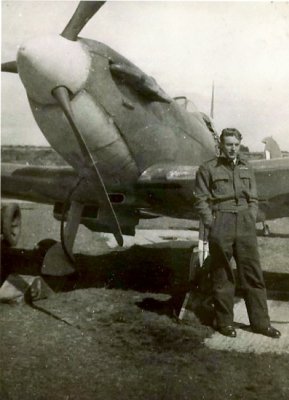
RAAF GD Pilot 77 Squadron
Died 05 Sep 2018
Vale Hartley Vivian Shearn DFC AFC
With great sadness we wish to advise you that our friend and colleague Viv Shearn passed away on 5 September 2018.
Viv was a very much liked and well-respected man, a great pilot and officer who served his country in an exemplary Air Force career.
The Funeral will be held at Berry Funeral Directors, 198 Magill Road, Norwood, SA at 1000 hours, Thursday, 13th September 2018. It will be followed by refreshments and then everyone is invited to the burial at Centennial Park. A Tiger Moth will fly over around 1300hrs
High lights of Viv's Air Force career are here.
Vale Viv Shearn
Good and True Australian
LEST WE FORGET
Tributes
Viv Shearn enlisted in the Royal Australian Air Force on 18 July 1940 in Perth. He embarked for Canada to complete training as a pilot on 27 November 1940.
After gaining his Pilot’s Wings he was sent to the United Kingdom arriving in May 1941.
After completing operational training he was posted to 457 Squadron flying Mk1 and later Mk 5B Spitfire aircraft. He left 457 when the Federal Government recalled a group of pilots, headed by ‘Bluey Truscott, to form 75, 76 and 77 Squadrons. This was in March 1942 after the Japanese had attacked mainland Australia by bombing Darwin.
On his return to Australia Viv Shearn became an original member of 77 Squadron in Perth. The Squadron initially operated from what had been part of a local golf course and is now Perth Airport.
In July 1942 he moved north, initially to Darwin, and then on to Milne Bay and Goodenough Island with 77 Squadron.
In 1944 he returned to Australia and was posted as a Test and Ferry Pilot to No 1 Aircraft Depot at Laverton.
in November 1952, after the outbreak of the Korean War, Viv was posted to Iwakuni and Korea. After an operational tour in Korea he returned to Australia in July 1953.
Over the next five years Viv was associated with the Aircraft Research and Development Unit (ARDU) at Laverton and the Air Trials Units at Edinburgh and Woomera.
In the 1960 period he became involved with the Maritime World as a P2V5 Neptune skipper with No 11 Squadron at Richmond.
Viv Shearn left the RAAF after a distinguished flying career in October 1970. His Honours and Awards include: Distinguished Flying Cross, Air Force Cross, 1939-45 Star, Air Crew Europe Star, Pacific Star, Defence Medal, War Medal 1939-45, Australian Service Medal 1939-45, Australian Active Service Medal 1945-75 with Clasp Korea, Korea Medal, Australian Defence Medal, Air Efficiency Award and Returned from Active Service Badge.
Viv’s DFC citation is as follows:
Flight Lieutenant Shearn joined 77 squadron on 19 December 1952 and since that date has flown 157 missions. For the greatest part of his tour, his appointment has been that of Flight Commander. This officer has planned and led many successful attacks against the enemy. The thorough manner in which he has assessed every detail of the impending raid has enabled his formations to hit heavily defended targets with the minimum of loss. On the 5th June 1953, this officer planned and led an attack by 16 aircraft against an anti-aircraft training battalion, far into enemy territory. The target consisted of nine 76mm anti-aircraft guns, three heavy machine guns, and a considerable quantity of small arm weapons and 32 buildings. Flight Lieutenant Shearn personally selected as his target the anti-aircraft pits and attacked them first with such success that the remaining 15 aircraft attacked the target and evaded without any aircraft receiving damage. The final assessment revealed that 30 buildings and several gun emplacements had been destroyed. Flight Lieutenant Shearn’s eagerness to fly on operations has been a fine example and inspiration to his fellow pilots and reflects great credit on himself and the Royal Australian Air Force.
Vale Viv Shearn
Good and True Australian
RAAF 022046 GD Pilot
Died 23 Aug 2018 Aged 95
|

RAAF GD Pilot
Died 05 Aug 2018 Aged 93
Fred was a liked and well-respected man, a great pilot and officer. A brief summary of his career:
Fred joined the RAAF 1943, served in 77 Sqn 1945;
British Commonwealth Occupation Force (77 Sqn) 1946-49;
77 Sqn Korea 1950-51 (awarded US Air Medal 1950);
Aircraft Research &Development Unit, Woomera, SA, 1951-54 (test pilot flying Pika for Jindivik Project);
On exchange with USAF 1954-55, served with 479 Fighter Wing flying F-86F and F-100A;
Commanding Officer 3 Squadron (Sabres) 1956-57;
Attended RAAF Staff College 1958;
Personnel staff 1959, then involved on Mirage Project 1962;
Commanding Officer 20CU 1963-65;
Deputy Director of Operational Requirements 1965-66;
Air Attache Paris 1966-67;
Air Staff Officer, Butterworth 1968-71;
Attended Royal College of Defence Studies, London, 1972;
Director General Personnel Air Force 1973-76;
Officer Commanding RAAF Williamtown, NSW, 1976-77;
Air Officer Commanding Support Command 1977-79;
AVM Barnes was Deputy Chief of the Air Staff from 1979-1981.
Vale Frederick William Barnes
Good and True Australian
Tributes
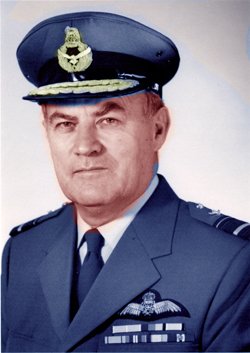
RAAF O21976 Pilot 460 Sqn 78 Wing 22 Sqn
Died 07 Jun 2018 Aged 97
Doug was a foundation member of No 460 Squadron, doing 16 operational missions as a Wellington pilot over Europe before being shot down over North Holland. He was a prisoner of war for 1000 days before escaping on one of the long marches.
He undertook a specialist navigators course and was the copilot of "Aries"- a specially modified Lancaster which gained a number of flight records between England and New Zealand in 1946 including one from Blackbushe UK to Ohakea NZ of 59hours 50mins flight time.
Post war he served in 78 Wing at Malta on Vampires and Meteors, and then the RAAF staff in London, before Commanding No22 Squadron at Richmond on Vampires and Meteors. He was Officer Commanding RAAF Townsville flying Neptune aircraft in 1965-66 prior to attending the Imperial Defence College Course in 1967. He held a number of Senior RAAF staff appointments before becoming DCAS in 1974. He resigned from the RAAF and the last Air Board on 19Mar75.
His Certificate of Service lists;
- No123 Navigation course UK 1946
No 1 Specialist Navigation Conversion Course UK 1947
No8 Intermediate Air Support Course 1948
No 5 RAAF Staff College Course 1952
No18 General Duties Officer Guided Weapons Course 1955
No 18 Air Support Course 1956
Imperial Defence College Course (UK) 1967
Tributes
From Peter Larard (WgCdr Ret} to Son Alan:
Dear Alan,
I first met your Dad when he took command of 22 Squadron in 1955 , and having held great respect for him through my 23 years of service my thoughts now are primarily just to touch base with you. I don't think we have met .
I had resigned in 1974 as a Wg Cdr, not long before your Dad took over as DCAS from where I think he resigned. I had bought a farm on the WA South coast near Denmark. You can imagine my surprize when he and your Mum showed up in our farm driveway! I think it was 1974 or early 75. Weather was good , too early for alcohol I think, so we sat on the grass outside for about an hour over a cuppa tea or similar during which we found a lot of common ground and agreement.
The next and last time we spoke was at an ANZAC march in Canberra, now many years ago!
Doug was always a favourite senior officer and I suppose role model for me, the memory of whom I will always cherish. That he made it to 97 adds more than somewhat to his stature and to my respect.
I offer you and your extended family my deepest sympathy and I regret that I am not able to join you for the final salute.
It's what we do! And indeed, Lest We Forget
Kind regards
Pete Larard
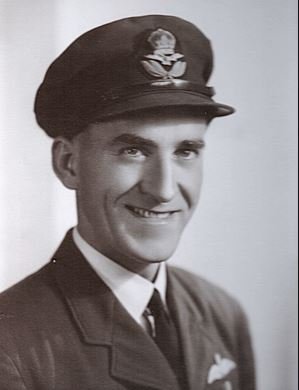
RAAF O416081 GD Pilot 30 Sqn
Died 02 May 2018 Aged 98
Charles enlisted in the RAAF on 29 Mar 1940 and was accepted for Aircrew Reserve on 11 Dec 1940. His initial posting was RAAF Base Pearce WA, where he undertook No.5 ITS course.
He was posted to Parafield (SA) No1 EFTS January 1941 and his first solo on a Tiger Moth was on 12 Jun 1941.
In July 1941 (date unknown) he was posted to No.1 SFTS (Service Flying Training School) at Point Cook, Victoria.
On 7 November 1941 Charles was posted as a staff pilot to 3 SFTS at Amberley, Queensland with the rank of Sergeant Pilot.
In December 1942, he was posted to Wagga (Forest Hill) No. 3 Course OTU, Beaufighters, and married Jean on 2 Jan 1943 (sadly Jean died April 2009.)
Charles was posted to 30 Sqn February 1943 and arrived Port Moresby, 26 March 1943. He departed New Guinea, December 1943 (date unknown) on posting to RAAF East Sale Instructors' Course on Beauforts.
In March 1944, Charles was promoted to Warrant Officer and not long after, on 01 April, he was Commissioned to the rank of Flying Officer.
FLGOFF Charles Day Harris resigned his post on 05 October 1945 in Adelaide.
His post-service career was:
Rejoined AESCo (Adelaide Electric Supply Company).
Retired (from Electricity Trust of South Australia, Cost Accountant), 1979.
Tributes
Vale Charles Day Harris
Good and True Australian
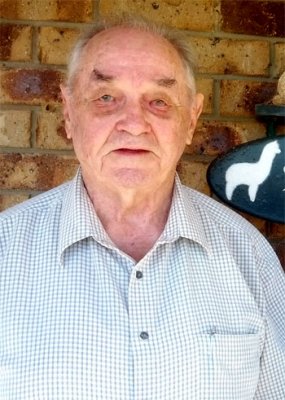
Pilot
Died 01 May 2018 Aged 91
With deep gravity we mourn the passing of our wonderful friend and colleague, Milt Cottee.
Milt died this morning, 1st May 2018, in Claire Holland Hospice Canberra, after a long battle with liver cancer.
Milt spent a brief period in the RAAF from 1944, but was discharged as the War ended. While at Sydney University he rejoined for pilot training, receiving his wings at East Sale in 1949. On posting to ARDU the perplexed CO Gel Cuming sent him and fellow pilot Ray Trebilco to a series of operational units to 'gain enough experience for test pilot training.
Following 18 hours of Mustang conversion at 21 Squadron, Milt was posted to 77 Squadron at Iwakuni Japan. It was planned to soon return to Australia, but when war broke out in Korea, Milt was on the first Mustang mission in South Korea.
After 50 Mustang missions he moved back to Sale for QFI training, and then to 22 Squadron Sydney, where he instructed on Wirraways and Mustangs, and later flew the Vampire 30 and 35. In 1954 he was a CFS instructor on Tiger Moths, Wirraways, Dakotas, both Lincoln and Vampire Mks.
But in late 1954 he went to ARDU for two flights in the prototype Sabre 901, and then by RAF Hastings from Mallala to UK for ETPS training in 1955. He spent several years at Boscombe Down on development testing, including the RAF Comet 2C, Valiant, Victor and Vulcan, including RAF hot weather trials in Libya and later trials at Edinburgh and Woomera while he was at Air Trials Unit in 1960-61, before he was posted back to ARDU.
Milt completed RAAF Staff College in 1965 as new wing commander, and then took command of 36 Squadron flying C130As, followed by a posting as F111 Project Manager in Washington in 1969.
Later Milt worked in Air Force Headquarters Operational Requirements Division, before moving to the Reserve to take up a managerial role in the French OFEMA defence company, before moving to General Dynamics Corporation where he actively marketed the F16A to Australia, as well as many other important products such as Phalanx.
In his latter years Milt was an active supporter of the Australian Flight Test Society, especially the history of test pilots since WW2.
Tributes
Vale Milt Cottee
Good and True Australian
LEST WE FORGET
RAAF Eng Aero
Died 24 Apr 2018 Aged 92
Sadly we advise the passing of our good friend and colleague Max Bevan.
In 1943, Max Bevan joined the RAAF and qualified as an Aircraft Technician in the days when flying machines were held together with fabric and glue.
In 1945 he saw service in South East Asia and the Pacific islands until the end of hostilities when he left the service, but not long after, owing to shortage of work, he rejoined by passing an entry trade test, thus avoiding repeat Rookie courses.
In 1949 he was sent to Japan as member of No 481 (Maintenance) Squadron, 81 Wing (Occupational Forces). Following this he was posted to 77 Squadron in Korea.
Max was later commissioned and began service in the Engineering Branch as a qualified ENG AERO.
His career included postings at Richmond (Neptune Aircraft), Staff positions at Support Command and CO Maintenance Squadron East Sale. He resigned as a Wing Commander in 1973.
Max was a well liked, very well respected individual and competent operator as an Engineer Officer.
Tributes
Vale WGCDR Max Bevan
Good and True Australian
LEST WE FORGET
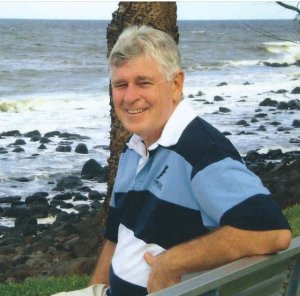
RAAF Rad Tech A 481 SQN
Died 18 Apr 2018
Ken was a Radtech and worked on the Mirage for many years at Willytown and Butterworth. He was killed in a motorcycle accident on Wednesday 18th April 2018. Ken was the brother of Bill “Bags” Vandenberg, ex-RAAF Apprentice and Sabre and Mirage Pilot, who was killed on the 24th June 1976 in A3-61 whilst undertaking a night practice bombing mission.
Ken Vandenberg enlisted 18 Aug 1969 and was posted to RAAF Base Edinburgh for Recruit Training.
His service included:
Laverton - Rad School Nov 1969 - Qualified Rad Tech (A)
Williamtown - 76 Sqn Jun 1971 to 1973
Butterworth - 75 Sqn Sep1973 to 1976
Williamtown - 481 Sqn Apr 1976 to 1978
Discharged 18 August 1978, completed 9 year contract.
Worked in the I.T. industry until 1989 initially at BHP Newcastle as a Systems Analyst, Dalrymple Bay Coal Terminal as a Systems Programmer, Pioneer Shire Council as a Computer Programmer.
RAAF A8161237 Airframe Fitter 75Sqn
Died 23 Mar 2018
Sletto was great character, a true Magpie, and an superb mentor to many junior NCOs and work-experience students that passed through 75SQN whilst considering entry to the RAAF.
He was certainly very protective of his GSE tools and equipment (!) and will be dearly missed.
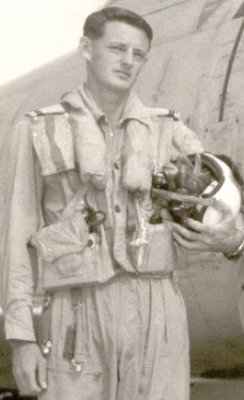
RAAF Pilot 3 SQN, 2 OCU
Died 21 Mar 2018 Aged 81
Geoff was born 6th December 1936, at sea, in the John Burke Line ship SS “Wandana” while enroute from Cape York to Cairns. At the time the Jenkins family were developing a tea tree (oil) plantation about four or five kilometres south of the very tip of Cape York.
In 1954 Geoff, now living in Newcastle, joined the RAAF as one of 30 cadets in the 1954 intake of No 7 Course RAAF College, Point Cook, Vic
After four years of College, Geoff and nine other colleagues graduated as pilots. Geoff was posted to No 21 Squadron based at Laverton, Vic.
In January 1959 Geoff was posted to undertake the first Sabre Conversion Course, the foundation of an operational posting to Malaya.
Whilst on Tour in Butterworth in 1961, Geoff was enlisted a member of No 3 Squadron Sabre Display Team which provided fairly regular and spectacular displays in the late 1950s and early 1960s.
In the years 1962 - 64 Geoff completed the Qualified Flying Instructor Course (QFI)
followed by a period instructing students at RAAF Pearce.
Returning to the east coast in 1964 he continued in No2 OCU as instructor Sabre
Conversions (including the Vampire Phases).
Retiring from RAAF about 1967, he joined a local airline servicing Newcastle, Sydney,
Wollongong and Wagga Wagga. In the years 1970 - 1990 Geoff continued commercial
flying with Cathay Pacific International airline.
Prior to his death Geoff was living in Townsville for about three years and before that in Spain. Unfortunately he suffered from Alzheimer’s disease for several years.
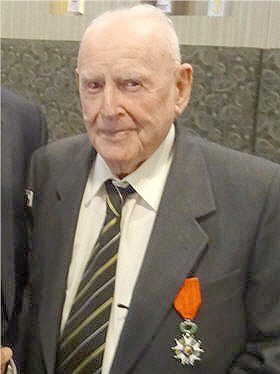
RAAF Pilot No 239 Squadron, Royal Air Force
Died 20 Mar 2018 Aged 98½
John (Jack) Gleeson was a Mosquito pilot who initially flew from the UK with No 464 RAAF Squadron (The Gestapo Hunters) attacking targets in France, Belgium, and Holland. In January 1945 he was transferred to No 239 Squadron, Royal Air Force, which was a Bomber Command squadron tasked with flying cover for the Lancaster night mass bombing operations over Europe.
The 239 Mosquitos were equipped with airborne radar and they attempted to entice the attacking Luftwaffe night fighters away from the bomber formations and engage them in combat. Jack flew 18 such operations mainly to Germany (including Berlin) but also Holland and Denmark until hostilities in Europe ended on 8th May 1945.
On 26th April 2016 Jack was presented with the UK Government Bomber Command Clasp to be mounted on the ribbon of his 1939 1945 Star. The Clasp was first minted in 2012 by the UK Government in recognition of those aircrew who served with UK based Bomber Command squadrons during World War 2. Award of the Clasp was approved by the UK Ministry of Defence.
The Legion of Honour, created by Napoleon Bonaparte, is the highest military honour France awards and is given for an exceptional contribution in service to France.
A letter received by Jack from the French Embassy stated in part: ...the President of the French Republic opened the Legion of Honour to World War Two veterans to pay tribute and to express Frances gratitude towards soldiers who risked their lives for the liberation of France.
Accordingly, on the 9th August 2016, Jack was awarded the Legion of Honour for his service in the liberation of France during World War Two
Tributes
On Friday 9th March Jack Gleeson presented this
framed montage of his wartime medals to
Mr Phillip Winney, president of the Merewether -
Hamilton - Adamstown Sub-Branch of the RSL,
to be displayed in perpetuity in the
ANZAC Room of Souths Leagues Club.
RAAF GD Pilot 81WG
Died 14 Mar 2018
While Dave was not a knucklehead he was well known in the Williamtown fighter force following an OPSO tour at 81Wg Headquarters during the mid 90's.
Vale David Lynch
Good and True Australian
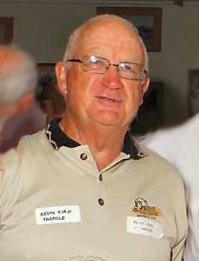
RAAF O218237 ENG AERO 75Sqn 76Sqn 481SQN 478SQN - Malaysia
Died 03 Jan 2018 Aged 76
ARMIT(MechEng)
Sadly we advise the passing of our good friend and great colleague Kevin Kirk passed away after battling cancer over the last 18 months and following a recent hospitalisation for a corrective operation.
Kevin was a well known, competent, respected and experienced Engineer. He will be sadly missed.
His career began as a apprentice Airframe Fitter on 14 Jan 1957 and was Commissioned as a PLTOFF ENGRAERO 14 May 65.
He worked through the ranks in a variety of postings as listed below until he retired on 22 Jan 1985.
We understand Kev subsequently joined the APS and, amongst other things, was heavily involved with the Pavetack project.
Tributes
Kev's Service History
Jan 57 - RAAFSTT
Feb 60 BSLAV (Course)
Oct 62 ECSQN (Course)
Feb 63 - ARDU
May 65 - OTS (# 50 OITC)
Aug 65 - 75SQN
Feb 66 - 481SQN
Oct 67 - 478SQN - Malaysia (Oct 67 Dec 69)
Jan 68 - 79 SQN Ubon, Thailand
Dec 69 - HQSC (AIRENG1A3)
Jan 75 - RAAFWASH (TLO SM-ALC)
Feb 77 - RAAFSUCAN (AIRENG3A)
Jan 79 - RAAFSC (#33 RAAF STAFF COURSE)
Dec 79 - 2FTS (SENGO)
Dec 81 - RAAFSUCAN (DPMA/PMA1)
Jan 84 JSSC
Jul 84 RAAFSUCAN (CAFTS/AIRENG2)
Jan 85 - BSFBN
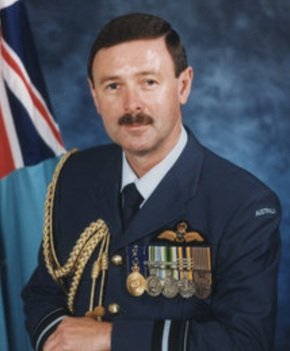
RAAF O44914 Pilot 36 SQN
Died 29 Sep 2017 Aged 69
Educated at Challa Gardens Primary School, South Australia, and Woodville High School. South Australia (Class of 1965).
Entered RAAF Academy, Point Cook, 1966. Graduated with Bachelor Degree, with Honours, in Science in nuclear and atmospheric physics (1968). Following a year of aviation and military studies, graduated from the Academy with the Sword of Honour.
Posted to RAAF Richmond, he flew Hercules with 36 SQN 1971-76 (including a tour in Vietnam in 1975). Soon after joining 36 SQN, he married Judy, whom he had known since their early teens. In a piece for his High School re-union in 2006, he wrote: My job at that time was not exactly conducive to marriage and raising a family. I was away flying for extensive and usually unpredictable periods to the point that our first born referred to me as 'that man' - as in 'mummy, that man said I had to ...' It was good to be posted after five years and become a flying instructor on jets in the knowledge that the nature of the work would finally enable me to spend time with the family.
That posting was to Central Flying School at RAAF East Sale as Chief Flying Instructor, 1977-81. As a flying instructor, and then an instructor of instructors and finally an instructor of the instructors of flying instructors he was able to fly most aircraft types from heavy and light transports, to fighters, bombers, maritime patrol aircraft and helicopters. He particularly enjoyed his two years as wingman, and two years as leader of the Roulettes aerobatic team.
He attended Canadian Armed Forces Command & Staff College, 1981-82, during which time he worked with NATO, in Berlin and on the East German border, at what was the height of the Cold War.
On his return to Australia he took up the post of Military Secretary and Comptroller (Head of Household) to the then Governor-General, Sir Ninian Stephen, 1983-86.
Following a posting as Commanding Officer, Central Flying School, at RAAF East. Sale (1986-88), he attended the USAF Air War College, in Alabama, 1989, became Director, Air Power Studies Centre (1990-91), served as Commanding Officer, RAAF Base Fairbairn and Commandant RAAF Staff College (1991-94), including appointment as Joint Force Commander Exercise 1992, followed by service as Director of Studies at the Australian College of Defence & Strategic Studies, Canberra (1994-95), Air Officer Commanding Training Command (1995-98), and Deputy Chief of Air Force (1998-99). Of the latter post he recalled: (it had the) unfortunate acronym of DCAF, so I had to endure jibes like 'Brent's not the real thing, etc..
He recalled, also, that he was invited to join the Prime Ministers Department, on secondment, as a serving military officer, to coordinate security and intelligence at the national level for the Sydney Olympic and Paralympic Games (1999-2001)
After 36 years, he left the Air Force, and became General Manager of Sport Performance and Development, at the Australian Sports Commission, and Acting CEO, during 2008-09.
In retirement, Brent worked tirelessly in support of many worthwhile causes. He was National President of the Australian Flying Corps and Royal Australian Air Force Association (the Air Force Association) and, for a time, both National and South Australian President of the Royal United Services Institute of Australia, a Director of the Sir Richard Williams Foundation, a member of the Department of Veterans Affairs Ex-Service Organisation Round Table, Chairman of The Board of Governors of The Repat Foundation (SA), a member of the Air Force Heritage Advisory Council, and was especially pleased to serve as a member of the National Council of the Australian Air Force Cadets.
Most recently Brent was Chair of the Veterans Advisory Council in South Australia, a Ministerial appointment approved by Cabinet. In this capacity, Brent pursued a forward-looking agenda that included a focus on better employment opportunities for younger veterans resulting in the development of a soon to be released employment framework. The South Australian Minister for Veterans Affairs, Martin Hamilton-Smith MP, who served alongside Brent, both in uniform and in other pursuits following their service, remarked that he was proud to have served with someone with the professionalism and integrity of Air Vice Marshal Espeland.
Brent was actively involved as a founding and steering group member of the Alliance of Defence Service Organisations (ADSO), which seeks to influence the government, the opposition and the cross benches to shape policies for past, present and future members of the Australian Defence Force. In the
week before his death, he signed, on behalf of ADSO, a joint response to the Federal Minister for Veterans Affairs with the National President of the Returned and Services League. Having the RSL join in approaches to Government has long been an objective of ADSO, and its membership.
Brent strongly believed that we owe a profound debt to veterans and service personnel and their families who have suffered related health issues, and was proud to be a part of the Repat Foundation The Road Home, an organisation that focuses on research to improve outcomes for those affected.
He believed, also, that, as a nation, we must ensure that we have the best-led, best-trained, best-equipped military in the world. He believed, too, that our troops wear the uniform for a time, but then wear another proud title, that of veteran, for decades -- for the rest of their lives. Brent was firm in his commitment that should we expend just as much energy and passion into ensuring that we have, also, the best cared for, best-treated, best-respected veterans in the world.
Brent believed, always, that there were better days ahead. His graciousness, his smile, his reassuring tone, and his sense of humour were qualities that enabled him to bear, so effortlessly, the burdens of expectation throughout his life and career.
Brents approach to life was never more evident than during the last few months when, despite his illness, he continued to work tirelessly on the things that were important to him. His positive outlook, his mental strength, and his resilience are a study in courage that is inspirational.
His passionate belief in the Air Force Association and the role that it can play in bettering the circumstances of veterans and serving members, alike, is an inspiration to us all, and the motivation for we who remain to seek to achieve that which he sought to achieve that the Air Force Association should be the ex-service organization of choice for those who have served in the Royal Australian Air Force, and allied air forces, and their families, and that it offer its support to members of the broader Defence community unable to find the support they seek elsewhere.
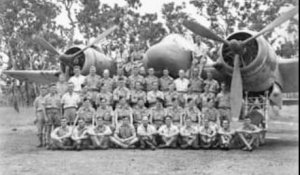
RAAF Pilot 30 Sqn
Died 05 Sep 2017
FRED CASSIDY OAM NAVIGATOR 30 SQN RAAF
Fred was a 20 year old Navigator flying in a Beaufighter in the Battle of the Bismarck Sea .
He did two full tours with 30 Squadron in Port Moresby Area, Papua, 1942 and was commencing his third with 92 Squadron in Labuan when the war ended, completing a total of 63 operational sorties.
Fred was well known in the RAAF Association and was awarded an OAM and Lifetime President (Honorary).
He will will be sadly missed by all who had the pleasure of knowing him.
Tributes
Bon Voyage Fred Cassidy
Good and True Australian
LEST WE FORGET
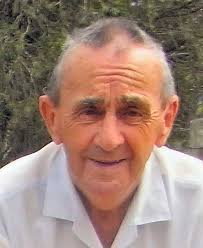
RAAF O37597 ENG AERO 481 Maintenance Squadron
Died 28 Aug 2017 Aged 85
Frank entered the RAAF on 1 October 1951 as a Trainee Signaller. After spending three months at Point Cook the course went on to the Air and Ground Radio School (A&GRS) at Ballarat in Victoria and then on to the Air Armament School (AAS) East Sale for air gunnery training on Lincoln aircraft.
In 1953 Frank was involved in a bad accident when a Dakota aircraft, on a flight from Richmond to East Sale, lost an engine and crashed into the Snowy Mountains. The co-pilot was killed. Frank was fortunate to escape with his life.
Early in his career Frank became a Gunnery Leader. In 1957 he transferred to the Engineering Branch and completed a diploma in aeronautical engineering at Melbournes RMIT.
He had three overseas postings. To the UK in Dec 1958 to undertake the Aero-Systems Engineering Course, to France in Jan 1961 with a team to write the engineering specification for the Dassault Mirage fighter, and finally to Italy in Jan 1966 to head up a team associated with the purchase of the Macchi fast jet training aircraft.
At the end of his time in the RAAF, 5 April 1979, Frank was Commanding 481 Maintenance Squadron at Williamtown.
Frank Howie had a distinguished military career. As a very Senior Officer he set a fine example to all those who came in contact with him over the twenty-eight year period he was in the RAAF.
Tributes
For Further Information
RAAF Flight Mechanic 77 Sqn
Died 13 Aug 2017
Vale Jim Halliday, WW 2 Flight Mechanic, Sep 42 - Jan 46, Life Member and past President of 77 Sqn Association 1985 to 1992.
The Association owes Jim a big debt as he was one of the very early members.. He was made a Life Member in appreciation of his efforts for the Association. Both he and Betty have been among our most solid members and have travelled far and wide to attend functions, WA included.
Vale Jim Halliday: Good and True Australian
Tributes
Jim wrote the following about his life.
A PACIFIC ISLAND SOJOURN
by Jim Halliday
To celebrate my 18th birthday I enlisted in the Air Force. Two weeks later I found myself in Sydney’s Bradfield Park, armed with a knife, fork and spoon, an enamel mug and a cut lunch to begin my new life. It was here I had a medical, wrote out my will, had an aptitude test and was fitted out in an Air Force blue uniform.
It was decided I had a natural propensity for mechanics for which I was duly trained at Ultimo Technical College while being billeted at Coogee Bay Hotel which had been commandeered by the military for the duration (it was a hard life!!) I subsequently spent many months training in Tocumwal for overseas service.
In February 1944 I joined 77 Squadron at Goodenough Island and stayed with them to Los Negros, where our cook got a MID for feeding us while under enemy attack ( I got dengue fever) then Noemfoor, Moratai and finally Labuan Island, Borneo. It was termed island-hopping, no hopping about it !! Every piece of equipment, ammunition, workshop gasoline, tents, kitchen stores, etc had to be loaded onto trucks and driven onto the waiting L.T.Ds. That was a driving lesson in itself, for it was all hands on deck for loading and unloading …. Some of the cruising was pleasant!
On August 13th 1945 after 18 months in the South West Pacific Islands, my overseas service came to an end. The Adjutant called the roll, then announced the following men were going south, meaning HOME. My name was among about the dozen or so called out, then the Adjutant told us we had 30 minutes to get ready. Some bright spark at the back yelled out “what will we do in the other 25? Sir”.
I arrived back in Sydney ten days before my 21st birthday. I was discharged in February 1946 after a very happy extended leave.
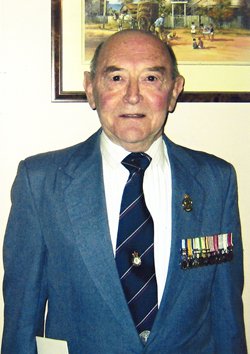
RAAF Ground Crew 75 Sqn, 76 Sqn, No 35 Squadron in Vietnam
Died 18 Jul 2017 Aged 81
Our good friend and colleague Bob Deane passed away aged 81 on 18 July at Lingard Private Hospital in Newcastle NSW.
Bob joined the RAAF in 1957 and served with many units until 1979.
During his time in the RAAF his postings included service in No 78 Wing, serving in both Nos 75 and 76 Squadrons. He also served in Butterworth (Malaysia) and with No 35 Squadron in Vietnam.
Bob never really left the Air Force, it was in his blood. He certainly made many service friends and he loved to stay in touch as much as he could.
After his PAF service he worked for a time as TNT Group 4 Security manager for ACT. He then spent many years working at Parliament House in Hansard.
The photograph was taken at Bob's Vietnam Vet's Reception with John Howard at Parliament House in 2006.
Bob suffered severe cardiovascular disease but eventually succumbed to his third different type of cancer.
Tributes
Bon Voyage Robert Henry Deane
Good and True Australian
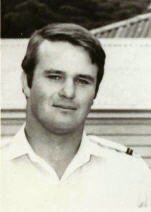
RAAF O228022 GD Pilot 3 Sqn, 2OCU
Died 27 Jun 2017 Aged 62
Squadron Leader James Frederick Barden BSc
Jim was a Graduate of No 26 Course, RAAF Academy in 1976, he then completed No 101 Pilots' Course from which he was posted to fighters.
Jim flew Mirages and Hornets, was a member of 3 Sqn, 2OCU and 81 WGHQ. He was an FCI and as such became involved in the very early days of the F18 programme in the States.
Jim joined Qantas in 1988, however he had to medically retire as a 747 F/O around the mid 1990s. He then took up a position with Virgin Airways in the flight safety department and remained with Virgin until recently.
Tributes
Vale James Frederick Barden
Good and True Australian
RAAF Pilot 77 Squadron
Died 08 May 2017 Aged 94
Vale
Group Captain Gordon Harvey DFC RAAF
Fighter pilot and Korean War POW
https://fsb.raafansw.org.au/images/GordonHarvey.jpg
North Korea is well known today for its ruthless and at times brutal regime. If anything, it was even harsher during the Korean war. Allied POWs were severely mistreated, suffering physically and mentally and sometimes dying as a result.
Six RAAF pilots and an RAF colleague flying with 77 Squadron in the war became POWs. Unlike many others, all seven survived the bashings, forced marches, malnutrition and other inhuman treatment routinely inflicted on POWs by their fanatical captors and lived to tell their tale.
Gordon Harvey was one of the six RAAF POWs. He was at Iwakuni in Japan when the war broke out on 25 June 1950, flying Mustangs with 77 Squadron as part of the Allied occupation forces. From there he flew on the squadrons first mission over the north escorting USAF B-29 bombers attacking a communist airfield during the first week in July.
The squadron soon switched to the ground attack role for most missions. This was demanding and dangerous work that took a steady toll on aircraft and pilots, but his luck held, he survived seven months of ground attack and was awarded a DFC for his part in this work.
Then, on 19 January 1951 during a 12 aircraft attack on the Chinese Army HQ at Pyongyang, his engine was hit by ground fire and lost power. He calmly announced he was going to belly land this aircraft, did so and climbed out unharmed.
Running low on fuel, the other Mustangs called for a rescue helicopter and returned home. Some time later a USAF Mustang arrived, provided some top cover and dropped a note saying a helicopter was on the way. But it was almost dark and no helicopter arrived. A dawn flight by the squadron next day found his downed aircraft with signs of activity around it, but no pilot. Gordon Harvey was now a POW and would remain so for 32 months.
His first five weeks in captivity were very severe, being spent in a North Korean prison they called Poks Palace after the ruthless major in charge. They rose at 5:30 each day, went to bed at sunset and were given only two meagre meals of rice or sorghum and some weak vegetable soup each day.
In late April he escaped, along with two Americans. Recaptured, they were treated so badly one of the Americans died. Gordon was put in a two metre deep hole for 45 days until all the prisoners were moved to a Chinese camp near the Yalu river. Here the physical treatment was a little less harsh, but they were forced to attend political lectures for eight hours a day and appear attentive or face punishment.
Despite all this abuse he recovered, was soon fit to fly again, and went on to a long RAAF career. In this he was no doubt helped by a quiet but determined manner, and high professional and personal standards. Ex-RAAF chief Jake Newham recently described him as: one of the finest; upright in every sense and a great pilot.
This view is borne out by his post-Korea career that included commanding both 76 and 77 Squadrons, a tour with the fledgling Malaysian Air Force helping it get established; an exchange tour with the USAF flying F-100 Super Sabres and time as the air attach in Paris.
In all, he spent three years and a month in Korea seven months fighting the Communists and 32 months being mistreated by them. The war ended in 1953, 64 years ago, and would be unknown to most Australians were it not for the outrageous behaviour of North Koreas communist regime.
As it is, there are almost daily reminders of that while Korea is still divided and the north is still run by ruthless fanatics, South Korea is democratic and free - thanks in no small part to men like Gordon Harvey.
May he rest in peace.
Tributes
Vale
Gordon was one the finest: upright in every sense, and a great pilot.
https://fsb.raafansw.org.au/images/GordonHarvey.jpg
He fought in the Korean War from the outset with No 77 Squadron flying Mustangs
He was shot down and captured attacking a target in Pyongyang in Jan 1951 from which he spent some two and a half years as POW and was released on 29 Aug 1953.
Gordon commanded both 76 and 77 Squadrons:
- as a SQNLDR - No 77 Squadron from 14 April 1958 to 1 February 1960.
- as a WGCDR - No 76 Squadron from March 1964 to April 1966.
He will be remembered as a leader with diligence, purpose and fairness to all under his command.
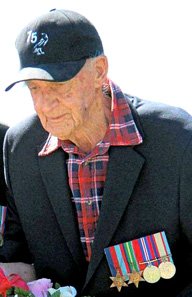
RAAF WOD 75Sqn
Died 08 Mar 2017 Aged 98
Edgar McCullock was the WOD at formation of the squadron and was present at Moresby and Milne Bay. He describes Moresby...'well we had a rather hectic 44 days of being bombed and strafed daily and living on Bully Beef and Baked Beans....and later....'before we deployed to Milne Bay they told us it was going to be a land of milk and honey'.
He would have been 24 years old at Moresby - he must have been a pretty impressive fellow to be given the responsibility of WOD in the unit.
Tributes
Bon Voyage Edgar McCullock
Good and True Australian
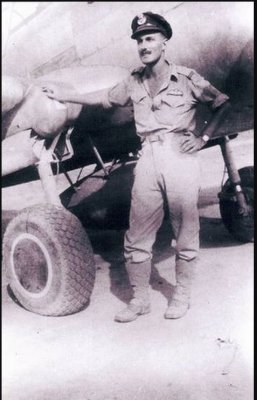
RAAF Pilot 75Sqn
Died 07 Feb 2017 Aged 95
Francis Albert Robertson (1921-2017)
F/O Frank Robertson flew for 75 Squadron, 1943-4, in Moresby, Morotai, Biak and throughout the islands north of New Guinea. After his tours of duty, which included flying as wingman to Les Jackson, and leading some of the Squadron's assault missions, he was sent to Point Cook to instruct on Spitfires.
At wars end he married Joy Beattie, the WAAAF Officer he had met in Townsville, and their marriage lasted 73 years; she died on Christmas Day 2016, and he could not go on without her.
He inspired his son, Geoffrey Robertson QC, to make the ABC documentary "44 Days" in 1992, which told the story of the formation and early success of Australia's first fighter squadron
Tributes
Bon Voyage Frank Robertson
Good and True Australian
LEST WE FORGET
A34229 Eng
Died 23 Oct 2016 Aged 86
Korean Veteran serving there 1953 to 1954 as an LAC Engine Fitter
Tributes
Vale Paul Shimmen.
Good and True Australian
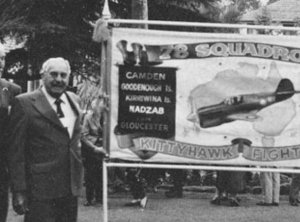
RAAF A3919 WW2 Kittyhawk Pilot 78 Sqn
Died 09 Oct 2016 Aged 99
Flt Sergeant Allan Gilbert Glenn
Allan was an engineer by profession joined the Air Force on January 4 1939 and quickly attained the rank of Flight Sergeant .
Prior to his association with 78 Squadron, Allan was attached to No 12 Squadron flying Hawker Demons out of Laverton Victoria. In 1942 he transferred to No 2 Squadron who flew Avro Ansons and later Hudson Bombers.
After a spell with I.A.D. Laverton he was involved in final inspection of Spitfires, Hudsons, Vultee Vengences and Beaufighters.
Then in June 1943 he was the second person joining the then forming No 78 Kittyhawk Fighter Squadron at Camden NSW under the temporary command of Flight Lieutenant Bob Osment DFC.
After a period of Training, the squadron moved to Kiriwina Island north of Milne Bay in November 1943. 78 Sqn pilots were quickly into action and before the end of November, in company with two brother RAAF Squadrons 76 and 77 Squadrons, carried out successful operations as top cover for B24's attacking Gasmata on New Britain.
From Kiriwinna the 78Squadron moved to Nadzab. The Squadron began operations with an early sweep through the 7th Division A.I.F. area down the Bogadjim Road and back to base along the Huon Peninsular as part of the softening up operations pending the A.I.F. assault on Shaggy Ridge. During this particularly active period Allan and his ground staff worked feverishly maintaining the aircraft and an 82% serviceability rate was achieved . Allan saw further service with the Squadron at Hollandia and Noemfoor Island with "Operation Globetrotter" before transferring to Aitape with 12 RSV, servicing No 100 Sqn Beaufighters. His former 78 Squadron further distinguished itself with great success operating from Morotai over the Halmerheras.
Allan is justly proud of his mates and his association with 78 Squadron although he served briefly with other units in the Pacific theatre of operations .
Sadly Allan was only several months short of turning 100 years young . Hats off to a great man .. RIP
Tributes
Bon Voyage Allan Gilbert Glenn
Good and True Australian
RAAF SGT Paramedic 77 Sqn
Died 05 Aug 2016
He was a SGT Paramedic who served with 77SQN during the Korean War.
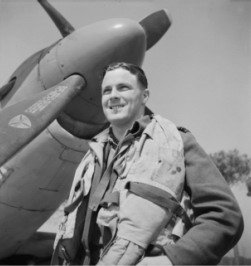
RAAF O409150 Desert Air Force Spitfire and Mustang Pilot WW2 451 Sqn
Died 30 Jul 2016 Aged 93
Dusty had celebrated his 93rd birthday on July 16. One week earlier on July 9 he had featured at the Centennial 3 Squadron Reunion at Point Cook "in fine form" - still fitting into his 1945 RAAF officer's cap and tunic!
In 1941, after falsifying his age, Dusty had reported for his RAAF intake on his 18th birthday. He was therefore the youngest possible of the trainees in his Draft to Rhodesia (12 Draft, the last one from Australia to Rhodesia). He excelled during training in Rhodesia, as he was one of only a few trainees to be sent directly to the Middle East (instead of England) for O.T.U. training.
As part of the Desert Air Force, he flew with 451 Squadron RAAF, 111 SQN RAF (under the command of Duncan Smith, author of 'Spitfire at War') and finally with 3SQN RAAF in Italy. Dusty flew Spitfires with 451 SQN and 111 SQN, and then Mustangs with 3SQN, moving from the Middle East through Sicily, France and Italy. (Including action at Anzio beach-head, and "Operation Bowler" over Venice Harbour.)
In aerial combat he was credited with two victories and one shared, as well as one damaged. Post-war, in 1946, he joined Australian National Airways ("A.N.A." - later Ansett), firstly as a co-pilot, rising to Director of Operations in 1976 (from which position he retired in 1984, having accumulated 18,000 hours of commercial flying). In 1988 he undertook a study into the Department of Aviation on behalf of the Federal Minister, and he served on the Australian Aviation Advisory Committee from 1990-1995.
Dusty was also involved in the preservation and restoration of several WWII aircraft, including a Wirraway, two Mustangs, and the Mosquito which is now housed at Point Cook.
Tributes
Vale Dusty - a wonderfully modest "high achiever", and true gentleman.
Bon Voyage Dusty Lane
Good and True Australian

RAAF 421948 WW2 Pilot 3 Sqn
Died 16 Jul 2016 Aged 94
Flight Lieutenant Charles Wilson WANNAN
FLTLT Chas Wannan was a World War II Kittyhawk and Mustang Flight Leader in Italy, 1944-45, flying intensive fighter-bomber missions with No.3 Squadron over land and sea.
While Chas was on operations in Italy, one of the other Mustang pilots asked his girlfriend in Australia to find a "pen pal" for Chas. - Her name was Joan and they were married in 1949!
After returning from the War, Chas progressed into an outstanding Legal career. He was a great supporter of his old school, Knox, to which he had won a boarding scholarship in 1934. Also a prominent veteran member of 3 Squadron Association; Chas featured at the Squadron's Centennial celebrations in Canberra in February 2016.
Loved and loving husband of Joan for 61 years (she pre-deceased him in 2010). Much loved brother of Errol (died 1944, POW in Japan), Betty (dec.), Alan (dec.), Bruce and Bunty and loving uncle to their families. Adored and admired father and father-in-law of the "twins", Peter and Rob; and Bronnie. Cherished grandfather of James, Caroline and Robert, and Charlie. Proud great-grandfather of Adele.
A truly humble and beautiful man.
Tributes
Bon Voyage Chas Wannan
Good and True Australian
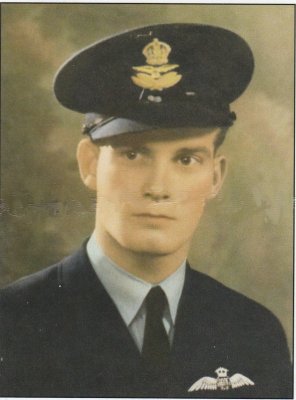
RAAF Kittyhawk Pilot 1942-43 3 Sqn
Died 24 Jun 2016 Aged 99
At the outbreak of WW2, Tom signed up for the RAAF in March 1940 and was present at Richmond RAAF Base in July 1940 (doing his "rookies") when 3SQN “marched off to war” through the gates.
Tom flew Kittyhawks with 3SQN in 1942 and 1943, from the great turning-point Battle of El Alamein and right across to Victory in North Africa at Tunis. He then hopped via Malta with 3SQN’s advance guard for “Operation Husky” - the invasion of Sicily. He survived numerous close shaves in combat, including being claimed as the 128th kill of one of the top Luftwaffe aces, Major Muncheberg - but in fact Tom was able to fly his trusty Kittyhawk successfully back to base!
Tom's combat career was ended in Sicily by a high-octane petrol explosion on the ground (which killed two other 3SQN groundcrew members) but fortunately Tom survived with less-serious burns. Tom was demobbed from the RAAF in 1945 as a Flight Lieutenant.
Tributes
For many decades, Tom has helped to promote and administer 3 Squadron Association and his generosity, energy and enthusiasm will always be remembered.
Vale Thomas Leslie Russell
Good and True Australian
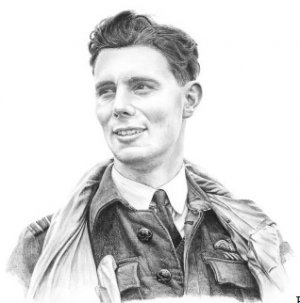
RAAF WW2 Pilot 456 Sqn
Died 21 Jun 2016 Aged 93
Squadron Leader Robert Barson Cowper
Squadron Leader Bob Cowper, who has died aged 93, is thought to have been the last surviving Australian fighter 'ace' of the Second World War; flying night fighters, he was credited with destroying at least six enemy aircraft.
During the air operations to support the Allied landings in Normandy in June 1944, Cowper and his colleagues of No 456 Squadron RAAF, mounted standing patrols over the beachhead and in a few days accounted for 35 enemy aircraft. On the night of June 9/10 Cowper and his navigator, Flying Officer William Watson, were on patrol near Cherbourg when they attacked a Heinkel 177 bomber and damaged it so severely it was forced to crash land. Later in the sortie, they intercepted a Dornier Do 217 bomber and destroyed it near Beaumont.
A few days later Watson picked up a contact on his radar and homed their Mosquito on to a Junkers 88 bomber. He opened fire and hit the port engine, which soon caught fire, forcing the crew to bale out. The Cowper/Watson team achieved their fourth success on the night of July 4/5. They identified a Heinkel 177 attacking enemy shipping south of Selsey Bill and shot it down into the sea.
Later in July the squadron was tasked to attack incoming V-1 flying bombs launched from the Pas de Calais region and claimed the destruction of 24 of them. Cowper claimed one but it was later credited to an anti-aircraft battery. In February 1945 he was awarded a Bar to an earlier DFC and Watson was awarded the DFC.
Robert Barson Cowper was born on June 24 1922 at Broken Hill, NSW, before his family moved to South Australia. He attended Queen's College in Adelaide before working as an engineering draughtsman. In 1940, on his 18th birthday, he joined the RAAF. He completed his training in Canada and arrived in Scotland in September 1941. He trained as a night fighter pilot and in November joined No 153 Squadron in Northern Ireland. The squadron was replacing its old Defiant aircraft with the powerful Beaufighter when he teamed up with Watson.
After almost a year flying patrols over the Irish Sea, Cowper and Watson were posted to the Middle East. They ferried a new Beaufighter to Gibraltar but on the onward flight to Malta became lost. Running out of fuel Cowper crash landed behind enemy lines in the desert at night. Arab nomads sheltered them until they were picked up by a British armoured patrol. Their adventures entitled them to join the 'Late Arrival's Club'.
They joined No 89 Squadron based in Malta and flew interdiction raids over northern Sicily and attacked trains with bombs. In March 1943, they transferred to No 108 Squadron and a month later had their first combat in the region. They were engaged in a long duel with a German night fighter off the west coast of Sicily. Cowper's fire damaged the Messerschmitt 210 and it disappeared into cloud. The invasion of Sicily, Operation Husky, was mounted on the night of July 9/10 and two nights later the crew engaged a Junkers 88 that was attacking Allied shipping. Cowper opened fire and the enemy bomber exploded, showering the Beaufighter with debris.
The night fighter was badly damaged and the navigator (a stand in for Watson) baled out never to be seen again. Cowper had great difficulty leaving the stricken Beaufighter. He lost consciousness but came to as he fell and pulled the ripcord of his parachute landing in the sea moments later. With deep cuts, a broken nose and bruising he waited until dawn to fire his distress flare when he was spotted and picked up by a naval vessel. His experiences entitled him to join the Caterpillar Club and the Goldfish Club giving him the rare distinction of membership of the trio of survival clubs.
Despite his wounds he was flying again a few weeks later and he and Watson destroyed a Junkers 88 off Sicily. By mid-August his tour was over and he was awarded the DFC for his great courage and determination.
After a period as a night-fighter instructor, during which he met and married an Australian WAAF, he joined No 456 Squadron in March 1944 when Watson, who had also been on a rest tour, rejoined him.
In March 1945 the squadron re-equipped with a more powerful Mosquito and from an airfield in Essex provided support for bombing raids over southern German. By the end of the war, Cowper was the acting squadron commander of No 456, the only Australian night fighter squadron.
After the war, he and his young family returned to Australia where he worked for Dunlop before owning a service station. He later became a farmer and racehorse owner.
He worked tirelessly to achieve recognition of No 456 Squadron's war record and was instrumental in having the squadrons logo adopted as the official badge. In September 2008 this was laid in a slate tile in the floor of the RAF's church of St Clement Danes in the Strand. In 2004 he was appointed to the Legion d'Honneur for services during the Liberation of France and in 2010 received the Medal of the Order of Australia. In 2007 he published his autobiography, Chasing Shadows.
Bob Cowper married Katherine McCall in December 1943; she died in 2014 and their four daughters survive him
Tributes
Vale Robert Barson Cowper DFC OAM LH(Fr)
Good and True Australian
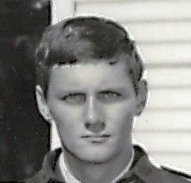
RAAF O117907 GD Pilot 3 Sqn, 76 Sqn
Died 03 Jun 2016 Aged 68
Vale WGCDR G P "Gerry" Keogh AFC
Gerry "Koff" completed his pilot training with No 68 Pilots Course, continued on to Sabre OCU No 34 Course in May 1969, graduated from Mirage OCU No 17 Course in Oct 1970 and completed No 13 FCI (Mirage) Course on 22 June 1974.
He was awarded the Air Force Cross (AFC) in the 1980 New Year Honours List.
He completed a USAF exchange tour on F-15 aircraft at Luke AFB, Arizona.
Gerry went on to fly with Cathay Pacific Airways.
Tributes
Bon Voyage
Gerard Peter Keogh
Good and True Australian
Lest We Forget
O21661 RAAF Photographer
Died 08 May 2016 Aged 85
Vale William Francis MURPHY (aka "Spud"). He died at Werribee, Victoria, on Sunday 8th May, 2016, aged 85 years.
After joining the RAAF on 7th February, 1949, and undergoing recruit training at RAAF, Richmond, NSW, and training as a photographer at the School of Photography, RAAF, East Sale, he served at various postings, mainly Central Photographic Establishment Laverton, before being posted to 391 Wing, Iwakuni Japan. As a Sgt photographer (A21661) he served two tours with 77 Squadron at USAF base, Kimpo.
He remained in the RAAF, retiring as a Squadron Leader in 1968. He leaves a widow of over 60 years, Una, and two adult children and their families.
All had a lot of time for Bill. He worked tirelessly on the new Point Cook Memorial. He always had an encouraging word or two to settle people.
He was a loyal supporter of 77 Squadron and the Association.
His ill health over the last couple of years was a concern to all who knew him.
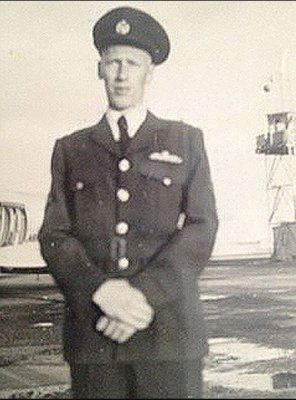
RAAF GD Pilot 77 Sqn
Died 03 Feb 2016 Aged 83
Flt Lt Brian Reginald Spilsbury (Spils)
Spils entered National Service in 1952 at Laverton Vic on Tiger Moths, in 1953 he completed No 13 course IFTS at Archerfield progressing to 13 Course BFTS Uranquinty NSW on Wirraways in 1954.
In Jun 1954 he became a member of the first all-through-jet-trained pilot's course on Vampires at East Sale continuing onto No 2 (F) OTU at Williamtown.
Late 1954 he served with No 25 Squadron at Pearce WA enhancing his qualifications on Wirraways, Mustangs, Winjeels and Vampires.
In Mar 1955 he joined No 75 Squadron at Williamtown flying Meteors and converted to Sabres in 1956 with No 77 Squadron.
During 1957 at Central Flying School he qualified as Instructor category C and took post at AFTS Point Cook as qualified flying instructor category B.
Returned to No 25 Squadron 1958 - 1959 serving as qualified flying instructor category A & Instrument rating examiner - Winjeels and Vampires.
In 1958 he went to No 2 (F) OCU where he completed the Fighter Combat Instructors' Course (FCI) serving as Sabre Conversion and FCI for a further two years.
He was regarded as a delightful man to know and will be remembered with much respect by members from Meteor and early Sabre days at Williamtown and at 25 Squadron which then flew the Vampire Mk 30/31s .
Spils left the RAAF early about 1961 to give stability to his young family and went into hardware stores at Victor Harbor SA where he also served many years as the Town's Mayor.
Brian and Margaret were married on 22nd December 1956. They have three children, Bruce (1958), Karen (1962), Graeme (1964) and six grandchildren.
Tributes
Bon Voyage
Brian Reginald Spilsbury
Good and True Australian

RAAF Pilot WW2
Died 18 Dec 2015
It is with sadness that I advise that Jim Keen, former fighter pilot, founding member and past president of the North & North West Aircrew Reunion has passed away on the 18th of December.
Those who knew Jim will miss him a great deal he was the quintessential World War Two fighter pilot, bold, talented and highly competitive as anyone who shot against him in the reunion shoot will testify. He was very determined and always reminding us new boys on how things should be done which caused the occasional gnashing of the teeth on our part. He was also fond of telling jokes with the reunion guest of honour senior officer as the central figure often having trouble with car wheel nuts! He will be missed.
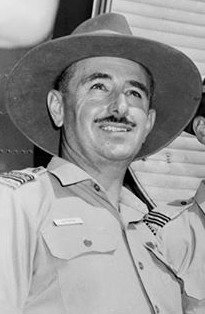
RAAF O22015 Pilot No 3SQN (Mustangs)
Died 05 Oct 2015
Vietnam in 1965/66.Vic Guthrie was awarded the DFC for his service as CO RTFV/35SQN
Following Vietnam, he returned to 38SQN Richmond flying Caribou and Dakota acft, was then posted as CO Base Squadron, Darwin in 1967 and, in 1968, was posted to Dept of Air. He retired from the RAAF in 1970 after 29 yrs service.
Vic joined the RAAF in 1941 and completed pilot training at Narromine and Forrest Hill.
Operational flying training in England on Spitfires and Hurricanes.
Flying instruction with RAF in India until 1943/44 when posted to No 136 Fighter Squadron (RAF) flying Spitfires/Hurricanes against the Japanese in India, Burma, Ceylon.
Back in Aust, converted to Mustangs then posted to Japan with No 82SQN (BCOF), 1945-1947.
1947 joined No 3SQN (Mustangs) then, in 1950, to No 87SQN (Mosquitos).
January 1956, parachute training in UK before returning to CO, Parachute Training Wing, RAAF Williamtown.
November 1959, RAAF Academy as OC Cadet Squadron then RAAF Staff College (Pt Cook) then No 11SQN (Richmond).
December 1961, CO No 22SQN (Richmond).
Post-RAAF, Vic was on staff at Government House, Canberra for 14 years until his retirement.
Korea Airframe Fitter 77 Sqn
Died 24 Aug 2015 Aged 81
Dinga served as an Air Force Apprentice, then Airframe Fitter and then Flight Engineer. He then had a career in Qantas.
Dinga served with 77 Sqn in Korea from Jul 1954. He also served with 36SQN during Vietnam.
Dinga was a valued member of 77 Sqn Association. He was always willing to cheerfully and actively contribute. He will be missed.
Our condolences are extended to his wife Gwen, daughter Carolyn and all his family.
Tributes
| Farewell Dinga Good and True Australian |
||
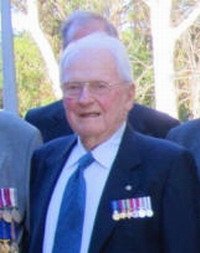
RAAF Pilot 76Sqn
Died 13 Aug 2015 Aged 91
Jack joined the RAAF in June 1942 and was demobilized in February 1946 with the rank of Plt Off.
During this time he served with 86 Squadron in Merauke, and 76 Squadron at Los Negros and Noemfoor in 1944.
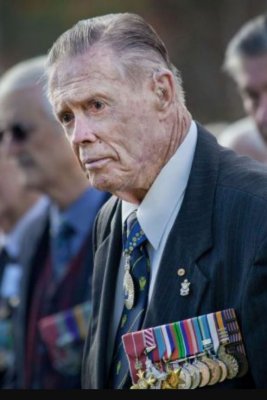
RAAF O5842
Died 17 Jul 2015 Aged 91
National President of the RAAF Association
Bomber Command World War II, RAF 149 Squadron,
CO 10 Maritime Squadron, Officer Commanding RAAF BASE Richmond
Queen's Birthday Honours Award: Officer of the Order of the British Empire (1971)
Air Staff Headquarters Operational Command
RAAF O118788 Pilot
Died 15 Jul 2015 Aged 70
Paul “Monto” Moran passed away last Wednesday, 15 July 2015, after suffering a heart-attack.
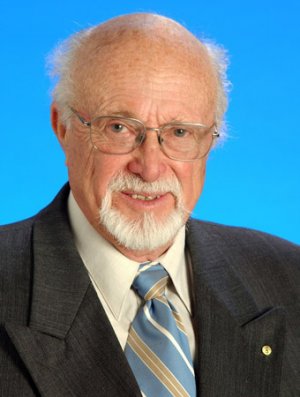
RAAF Pilot 76 Sqn
Died 13 Jul 2015 Aged 91
VALE WOFF PETER NUMA JOUBERT AO
Tributes
Peter served with No 76 Squadron (RAAF) flying Kittyhawks in the South West Pacific from February 1944 until demobilized with the rank of Warrant Officer and transferred to the reserve in October 1945.
When the war ended, he benefitted from a training scheme that allowed him to finish his matriculation and then undertake engineering at Sydney University. He then worked on a radio-controlled glider at Sydney University, before he was approached to be a lecturer and to supervise the building and operation of a new wind tunnel at The University of Melbourne.
He was the supervisor for more than half of all the post-graduate students in the Engineering Department of the University of Melbourne, certainly in the Mechanical Engineering Department and the supervisor for all the PhD students.
Peter was regarded as a key instigator for the mandatory seatbelt legislation of 1970.
He designed Zeus II, a Currawong 31, which was overall winner of the 1981 Sydney Hobart, as well as other yachts that have won their divisions.
More than a hundred yachts have been built to his designs.
In 1993 he was awarded the Commodores medal of the Cruising Yacht Club of Australia for outstanding seamanship after his crew rescued eight survivors from a sunken yacht at night in a strong gale.
He survived the Sydney Hobart storm of 1998, despite his yacht having been turned upside down before righting.
Prof Joubert received the AO in 1996 for services to engineering through research in the field of fluid mechanics, particularly in relation to submarine design and education. He received a medal in the Order of Australia in 1996 for his contributions on road and yacht safety.
Peter Joubert retired in 1989 but continued his research as an Emeritus Professor at the University. His recent work includes the study of separating flow about a submarine body while engaged in a turning manoeuvre.
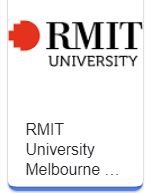
RAAF O222636 ENGRAD 77 Sqn, 3 Sqn
Died 13 Jul 2015 Aged 67
WGCDR Eric Kingsley Traise ARMIT<CommEng) ENGRAD
ERIC grew up in Waratah and attended Newcastle Boys High School before he joined the RAAF to become an Engineer in the Radio Branch.
Tributes
Rest in Peace Eric Kingsley Traise
Good and True Australian

RAAF GD Pilot
Died 11 Feb 2015 Aged 88
Joined RAAF 1943, trained under EATS in Aust. & Canada, graduated as Sgt Pilot 1944 and based in New Guinea and Darwin;
Converted to Mustangs 1946, then served with 78 Sqn;
Flew Mustangs in Japan 1948;
First RAAF mission in Korean War 1950;
Commissioned 1950 (MID, US DFC & Air Medal);
Served with 3 Sqn 1951;
Flying Instructor Course 1955;
CO 75 Sqn 1956,
Formed Meteorites (first official RAAF aerobatics team);
CFS 1957;
Exchange posting with USAF 1958, flying F-100 and F-104;
Chief Fllying Instructor 2 OCU;
CO 76 Sqn;
RAAF Staff College 1962;
Director Operational Research;
Led Operation Fast Caravan 1967 (Deployment of Mirages to Butterworth)
CO 75 Sqn (Mirages) Butterworth, Malaysia, 1966-68;
OC RAAF Contingent Ubon, Thailand, 1968;
Principal Staff Officer & Senior Admin Staff Officer, HQ Support Command 1969;
OC RAAF Williamtown, NSW, 1973-75;
Royal College of Defence Studies 1975;
RAAF Director General Tactical Fighter Project, 1976-77;
Commander IADS 1977;
Chief of Air Force Ops. 1981-82 , Retired RAAF 1982;
Director Australian War Memorial 1982-1987
Tributes
Bon Voyage
James Hilary Flemming
Good and True Australian
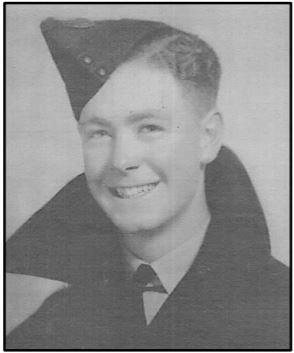
RAAF O59650 Pilot 75Sqn, 76Sqn
Died 22 Nov 2014 Aged 90
Born in 1924 Lionel signed up initially to train as a Flight Mechanic but after 9 months transferred to pilot training at 7FSTS Deniliquin, AGS, 2OTU Mildura graduating from 43 Course.
He flew Kittyhawks in the Pacific with 77 Squadron and was at Labuan when the WW2 ended. Lionel then volunteered to go to Japan and spent 12 months with BCOF before returning to Australia. In June 1946 he was promoted to Pilot Officer and returned to Melbourne January 1947.
Tributes
Our sympathy goes to his wife Joan, his daughters, sons-in-law and grandchildren. He will be greatly missed.

RAAF GDPLT
Died 07 May 2014 Aged 91
Air Chief Marshal Sir Neville Patrick McNamara, KBE, AO, AFC, AE (17 April 1923 - 7 May 2014) was a senior commander of the Royal Australian Air Force (RAAF). He served as Chief of the Air Staff (CAS), the RAAF's highest-ranking position, from 1979 until 1982, and as Chief of the Defence Force Staff (CDFS), Australia's top military role at the time, from 1982 until 1984. He was the second RAAF officer to hold the rank of Air Chief Marshal.
Born in Queensland, NevilleMcNamara joined the RAAF during World War II and saw action in the South West Pacific, flying P-40 Kittyhawks. He also flew combat missions in Gloster Meteors during the Korean War. In 1961, he was awarded the Air Force Cross for his leadership of No. 2 Operational Conversion Unit. He gained further operational experience heading the RAAF presence in Ubon, Thailand, in the late 1960s. Promoted to air commodore, Neville McNamara was Commander RAAF Forces Vietnam, and Deputy Commander Australian Forces Vietnam, in 1971-72, for which he was appointed a Commander of the Order of the British Empire. As Deputy Chief of the Air Staff in 1976, he was named an Officer of the Order of Australia. Knighted while CAS in 1980, he retired after completing his term as CDFS in 1984.
Tributes
Farewell Sir Neville McNamara
Good and True Australian
RAAF O119113 pilot 75Sqn, 76Sqn, 9SQN
Died 25 Apr 2014 Aged 67
RAAF HELICOPTER HIT BY GROUND FIRE I N VIETNAM
The crewman of an RAAF helicopter was wounded on Sunday by enemy ground fire in the Lon Hai Hills area of Phuoc Tuy Province in Vietnam, the day after another member of the squadron was killed by ground fire.
An Australian Army officer in the helicopter was seriously wounded and both pilots had very close escapes from bullets.
The co-pilot was struck by a bullet which was stopped b y the protective body armour known as a 'chicken plate' he was wearing. Another bullet flicked through the trouser leg of the aircraft's captain. The helicopter of No. 9 Squadron received at least eleven hits.
The wounded crewman is LAC Trevor Hamill, single of West Melbourne, Victoria. He is on his second tour of duty in Vietnam. The co-pilot is Pilot Officer Rhys James, single of Bedford Park, Western Australia. He was unhurt - not even bruised by the impact.
The captain of the aircraft is Squadron Leader Ward Rayner, married of Scullin ACT. He also was unhurt. The gunner is LAC Kevin Thompson, married of Red Hill, ACT, also uninjured.
Squadron Leader Rayner was forced to land his badly damaged aircraft about 3000 metres from the point where it was hit. Soon afterwards a 'Bushranger' helicopter gunship of No. 9 Squadron which had moved into lay down suppressive fire developed mechanical trouble and had to land nearby.
Both aircraft were recovered - the 'Gunship' was repaired and flown out and the Iroquois, damaged by hostile fire lifted out by an American Chinook helicopter.
The wounded army officer is Captain J.C. Hartley of Camp Hill, Queensland.
Squadron Leader Rayner's helicopter was on a resupply mission delivering stores and ammunition to a South Vietnamese Army position in the Long Hais. It was hovering at 15 ft. when a burst of ground fire came from the right and from straight ahead.
The round which pierced Squadron Leader Rayner's flying suit leg came from the right and lodged in the radio console to his left between the two pilots. The round which struck Pilot Officer James came from ahead through the windscreen. It crashed through a survival kit radio attached to his chest and imbedded itself in the 'chicken plate'.
Pilot Officer James said when the aircraft landed, LAC Hamill, although himself wounded was supporting the wounded army officer and apparently preventing him from falling from the aircraft.
No. 9 Squadron 'dust off' medical evacuation helicopter lifted the Army Officer and LAC Hamill to the first Australian Field Hospital at Vung Tau within 10 minutes of the landing.
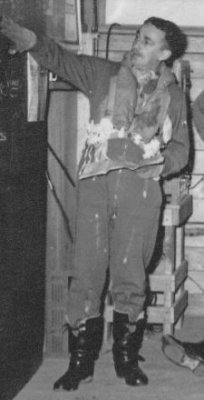
RAAF GD Pilot 77 Sqn Korea
Died 22 Apr 2014 Aged 90
Sadly we advise the passing of Wing Commander Cliff Fivash AFC (Retired), late of Main Beach, Queensland, formerly of Malvern, VIC passed away peacefully surrounded by his family 12 January 2014 aged 90 years.
In July 53 Cliff completed No 12 Vampire OTU and OCU and as Flt Lt then, was a member of 77 Squadron in Korea from 6 Dec 53 to 30 Aug 54.
In Dec 61 Cliff completed No 11 Sabre Course and was posted as Chief Flying Instructor with No 2 (F) OCU in Williamtown.
While Cliff was not a member of our Association, many members would have known him personally.
77 Squadron Association has extended sincere condolences to his wife and family.
Tributes
Vale Cliff Fivash
Good and True Australian
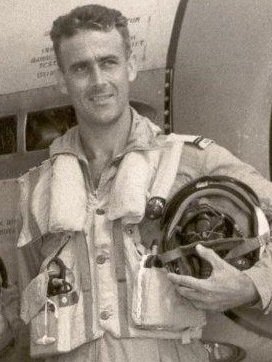
RAAF O35161 Pilot 3 SQN, 77SQN
Died 17 Feb 2014 Aged 80
Vale O35161 SQNLDR Philip Dunn QFI RAAF
It is with sorrow we advise the passing of Philip Dunn, Squadron Leader (Ret'd) of Canberra, on Monday 17th February 2014, after a long period of suffering with Parkinsons disease.
Tributes
Many of you will remember Phil from his days flying Vampires and Sabres, and his memorable artistry as a qualified flying instructor at Applied Flying Training School, Pearce WA and subsequent competent service at Central Flying School, Sale VIC.
During a posting for service with the RAF in the UK in the late sixties, Phil became a member of the RAF Red Arrows formation display team, flying as No 9. It was thus fitting that when he returned to the CFS post in 1970, he became leader of the RAAF formation display team (Telstars) flying Macchi aircraft. During this period he founded the “Roulettes” which remains the premiere display team to this day.
RAAF Pilot 77 Squadron
Died 01 Dec 2013 Aged 87
Tributes
Barry joined RAAF in 1950 Pilot training on Tiger Moths and Wirraways before going to Williamtown for Mustang conversion in preparation for service in Korea 1951. However, that plan was cancelled and instead, Barry went to Middle East Cyprus and then to 78 Wing, 75 Squadron Malta as a Sergeant Pilot.Flying British Vampires, he formed an aerobatic team with Vic Oborn, Les Reading and Tony Armstrong. In Malta he took part in a 700 aircraft Coronation Flypast.
In June 1959, Barry founded the original No 78 Wing Sabre Aerobatic Display team. Team members included Barry with Mick Parer (drawn from No 77 Squadron) and Peter Dart and Ted Radford (drawn from No3 Squadron) with Dennis Stenhouse as standby. This team performed in Manila, Philippines in Nov 1959.
Among his qualifications, Barry qualified as a Category 'A' Instuctor at Central Flying School and graduated from No 6 Fighter Combat Instructor Course at Williamtown in Sep 1960.
In 1961, following approval for the formation of a new Sabre Aerobatic team in No 75 Squadron, Barry was appointed leader of the new �Black Diamonds� Aerobatic Team with John Pyman (No 2), Mick Parer (No 3), Maurie Baston (No4) and Major Steve Shiner USAF (No 5 - the solo demonstrator). Performances by this team displayed sequences based on new ideas and past experience, along with discussions with Major 'Fitz', the leader of the USAF Thunderbirds formation display team. [Refer article pp 6-7 http://issuu.com/aussiebard/docs/spring-2011]
Barry was a dedicated and loyal operator, was held in high esteem by his peers and enjoyed the camaraderie of the service. One such anecdote involved Barry, in a happy but somewhat inebriated state, where he had the misfortune, whilst driving service car, to not just prang the vehicle but he deftly selected the prang site to be outside a Police Station and neatly included several police vehicles as his target!
Barry also served in Butterworth and Ubon.
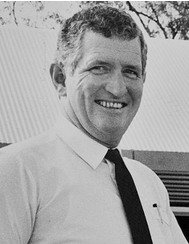
RAAF GD Pilot 75Sqn, 76Sqn
Died 17 Sep 2013 Aged 73
Al joined the RAAF in 1963 as a student pilot on No 49 Pilots course, gaining his wings and graduating as a Pilot Officer in May 1964. Following the then-usual Jungle Survival Course at Canungra, he joined No 2 Operational Conversion Unit at RAAF Base Williamtown for No 21 Sabre Conversion Course.
He then took post as a squadron pilot in Butterworth returning in 1966 to join No 76 Squadron during its deployments to Darwin.
On 30 May 1966 FLG OFF A.P. Walsh graduated from No 6 Mirage OCU Course, and remained at Williamtown to join No 75 Squadron in preparation for Operation "Fast Caravan" which relocated 75 Mirage Squadron to be based in Butterworth.
In 1970 Al left the RAAF for a position with Steggles and began studying for his degree.
In 1981, Al entered state politics and was selected as the Labor candidate for Maitland which he won in 1981. He retired from politics in 1991.

RAAF 034059 Pilot No. 450 Squadron
Died 01 Sep 2013 Aged 96
It is with the deepest regret that I advise at 0630hrs on this day, Sunday 01 September 2013 our Squadron Leader (1941-42) and Pilot of No. 450 Squadron RAAF Desert Harassers, AC Gordon Henry STEEGE DSO, DFC, MID passed away peacefully at the age of 95yrs 11mths.
His continued strength and leadership has always been admired by the surviving veterans of No. 450 Squadron RAAF and their families.
Gordon’s loyalty to the men of the disbanded No. 450 Squadron has continued tirelessly with him leading the Squadron in the Sydney ANZAC Day each year and accepting his position as Patron of the 450 Squadron RAAF Association Inc., since 2008.
Gordon will now join the many men of No. 450 Squadron RAAF who will never be forgotten.

RAAF NX 263247 WW2 Pilot 76 Sqn 75 Sqn
Died 21 Aug 2013 Aged 92
WWII Squadron Leader Peter Booth-Jones DFC
Joined the RAAF in January 1941. After initial training in Australia, gained his wings and graduated as a Pilot Officer in Canada. Peter was posted to 58 OTU in the UK and converted to Spitfires, then posted to 118 Sqn at Ibsley until March 1942. He then returned to Australia and joined 75 Sqn in Juner 1942. Flying Kittyhawks Peter took part in the Battle of Milne Bay and on 27th August, he and Flt Lt Bruce Watson attacked 3 Val Dive Bombers over the Bay. They were credited with sharing 1 destroyed, 1 probable and 1 damaged. On 27th November he flew S A29-133 on a scramble from Cairns and again on 1st December. He was posted as an instructor to 2 OTU Mildura until September 1944. Sqn Ldr Jones was posted as CO to 76 Sqn based at Noemfoor, then Morotai, Sanga Sanga and Labuan until the end of the war.
Tributes
Peter Booth-Jones was laid to rest at Castlebrook Memorial Park at Rouse Hill.
The current Commanding Officer of Number 76 Squadron Wing Commander Chris Hake was at the service and was part of the guard of honour formed by serving RAAF personnel.
Three Hawk 127s performed a fly-past over the park after the funeral service as a mark of respect.
Wing Commander Hake said the fly-past was to show respect and gratitude.
``Peter's leadership, displayed at such a young age, is a shining example to the current serving members of our squadron.''
Mr Booth-Jones flew 146 operational sorties including 52 strike missions.
His son Pastor Robert Booth-Jones said his father survived being shot down in North Borneo and being bit by a poisonous snake.
``He was a leader … a man of values.''
Peter and his war time bride June were close to celebrating their 70th wedding anniversary when he died.
The couple have two children, four grandchildren and three great grandchildren.
His war medals and the battle colours of Number 76 Squadron and his RAAF cap were with his flag draped coffin.
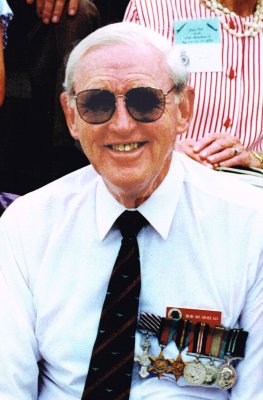
RAAF O407127 Pilot 76 Sqn
Died 04 Aug 2013 Aged 95
Sadly we advise the passing of our wonderful and loved veteran, Bob Muirhead, age 95 years, WWII 76 Squadron Fighter Pilot and Flying Instructor RAAF 1940 to 1946 who passed away peacefully on 4th August.
Bob joined RAAF on No 3 Course Empire Air Training Scheme Pilots Course on 22 June 1940 and graduated at Point Cook as Pilot Officer Feb 1942.
He instructed on Tigers and Wirraways for next 3 years.
After O.T.U. he joined No 82 Squadron at Townsville and from there he went to Noemfoor. After 4 months he was posted to 76 Squadron as Flight Commander with Peter Jones DFC.
He served with 76 Sqn at Morotai Island, Indonesia and Manokwari, West Papua.
Tributes
Photo: Bob at the 50th Anniversary of the formation of No 76 Squadron held at Williamtown 21 Feb 1992.
Photo By Peter Joubert 76 Sqn Association
RAAF 034274 GD Pilot : SD atc Base Sqn AMB
Died 17 Jul 2013 Aged 88
At the age of seventeen Dick joined the Royal Australian Air Force [RAAF] as a member of an air crew. In June 1943 he commenced his training in the Empire Air Training Scheme and graduated as a wireless air gunner in 1944.
After the war, he returned to the Bank and worked at Welshpool before being transferred to New Zealand where he worked at Masterton and Eltham.
In 1949, he re-enlisted in the RAAF and in late 1951 he was posted to Iwakuni in Japan to be part of 30 Transport Unit .
Upon return to Australia in late 1952, he was involved in flying operations in connection with the five atomic explosions at Marailinga in South Australia. In Late October in 1953 he was invited to witness the fifth explosion and he also met the inventor, Sir William Penny. Dick hoped that would be the last atomic bomb nto be exploded anywhere and in particular Australia.
After completion of Officer Training, Dick was posted to the School of Air Navigation as Signals leader for three years.
In 1957 he transferred to Special Duties Air Traffic Control.
In December 1960, the family moved to Butterworth in Malaysia for a two and a half year posting.
In all Dick spent 22 years in the Air Traffic Control field with Five and a half years instructing at the Air Traffic School - a very rewarding job. In 1971 he was awarded an MBE for his efforts in this field.
His last two and a half years in the RAAF were spent as Senior Air Traffic Control Officer at East Sale in Victroria.
He retired at East Sale in July 1979.
RAAF A113810 Armourer Mirage 76, 75, 2OCU, 481M & 478M Sqns.
Died 07 Jun 2013 Aged 66
Dave's Mirage (French Lady) days are 76, 75, 2OCU, 481M & 478M Squadrons.
His Service included an RSL component to the service, and members of the Australian Armourer's Association formed a guard of honour. Full size medals were worn.
RAAF GD Pilot 77 Squadron
Died 24 May 2013 Aged 87
Joined the RAAF in 1943. In Korea, he flew 98 combat missions in Mustangs and 90 in Meteors. He was noted for his repeated dive bombing, rocket and strafing attacks from dangerously low-levels. He damaged one MiG-15 and had the honour of flying the last Mustang mission and the first Meteor jet mission for the RAAF.He was one of the four signatories to this famous painting �Meteor Strike� by Frank Wootton.
Les Reading served as a squadron pilot with No 75 Squadron of No 78 (F) Wing
which was based in Malta 1952-1954. Here he flew as a wing solo of the first
RAAF jet aerobatic team, newly equipped with de Havilland Vampires and which
demonstrated in Tunisia, Libya, Cyprus and Malta.
Les Reading commanded three RAAF fighter units including 77 Squadron before retiring as a Group Captain.
HONOURS & AWARDS:
Distinguished Flying Cross
Defence Medal
War Medal 1939-45
Australia Service Medal 1939-45
Korea Medal
United Nations Service Medal - Korea
Australian Active Service Medal 1945-75 with Clasps �KOREA� �MALAYSIA�
General service Medal 1945-75 with Clasps �BORNEO� �MALAY PENINSULA�
Australian Service Medal 1945-75 with Clasps �JAPAN� �SE ASIA� �MIDDLE EAST�
Defence Force Service Medal with First and Second Clasps
National Medal with First Clasp
Australian Defence Medal
Pingat Jasa Malaysia
United States Air Medal
Returned from Active Service Badge
Tributes
A great man and a great friend.
Died 11 Jan 2013
One of the first to join the ATC when it was formed in 1941. Enlisted when he turned 18 and trained as a Flight Rigger (Airframe) at 7 SFTS at Deniliquin. Was accepted as Air Crew but decided to stay in ground crew and see more action!! Served with 77 Squadron at Morotai Island and Labuan. See Swift to Destroy. Bruce was made a Life Member of the Association in appreciation of his work from its formation.
Tributes
Bruce was one of the original members of 77 Squadron Association and contributed a lot to its development and success. The Association was proud to make and have him as a life member.
Farewell Bruce
Good and True Australian
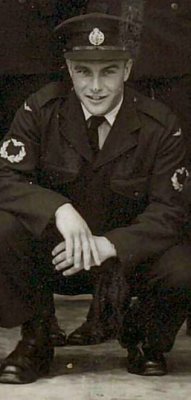
RAAF Pilot 75Sqn 22 Squadron
Died 22 Aug 2011 Aged 80
When Wal joined the RAAF he made his mark as an apprentice on the first post-war apprentice scheme by successfully topping his course.
He subsequently transferred to aircrew training on No 11 Flying Course and achieved yet another top mark graduating as a Sgt Pilot.
From there he was posted to fighters, initially with No 22 City of Sydney Squadron at Richmond, flying Mustangs. In 1954 he underwent the No 19 Vampire OTU course at Williamtown which led to service with No 75 Squadron at Williamtown flying Meteors. After some time he was posted to a Sabre conversion course but this was abandoned as he yearned for involvment with the Flying Doctor Service.
He was the first on his course to receive a four-year short service commission, and when he duly completed this obligation he left the RAAF and he went to DCA as an Air Traffic Controller serving time at Bankstown and Sydney.
He joined Adastra Aerial Surveys and spent some years as a pilot on Hudsons in New Guinea and later became a Safety Inspector with DCA specialising in accident investigations. He maintained close links with friends Mike Wood, Hal McKinley and Billy Mitchell from Adastra.
RAAF GD Pilot 77 Sqn
Died 24 Mar 2011
NO 77 SQUADRON ASSOCIATION INC
INFORMATION BRIEF NO 7-11
Unfortunately, we have just received word that Wing Commander Spike Johnston (RAAF Retd) passed away quietly this morning, 24 March 2011. Although he was not a member of the 77 Squadron Association he will be known by a wide circle of people.
Spike was a member of the Occupation Force in Japan immediately after the Second World War flying Mustangs. He then had a long association with the Training World as a flying instructor both at AFTS Point Cook, and CFS at East Sale. A tour on Canberras followed during which he made a name for himself as a display pilot. A tour in Operational Command was followed by a stint as a transport driver flying Hercules.
Spike was well known and respected throughout the RAAF.
Tributes
VALE WING COMMANDER SPIKE JOHNSTON
GOOD AND TRUE AUSTRALIAN
Lest We Forget
RAAF 77 Sqn
Died 28 Feb 2011
Ray had a long association with the 77 Squadron Association. He was an active, well respected, member for the best part of 60 years, in fact, from the formation of the association in 1953. In 1964 he was involved with the production of a second 77 Squadron Assocation banner which was used in Sydney ANZAC Day Marches for many years.
Ray was also an early member of the Squadron during the Second World War serving in Darwin, Milne Bay and in the subsequent island campaigns.
Tributes
For those of us who were fortunate to have known him he will be missed.
VALE RAY BROOKER - RAAF VETERAN
GOOD AND TRUE AUSTRALIAN
RAAF GDPLT 77Sqn
Died 22 Dec 2010 Aged 94yrs
Alwyn Quoy was RAAF to his back teeth. He served as an Engine Fitter with 77 Squadron in New Guinea and was one of the early members of the Squadron.
But he made his mark, and will be long remembered as a consequence, as one of the instigators of the 77 Squadron Association. This happened in Sydney on ANZAC Day in 1953 when Alwyn and his mate were refused permission to march with a contingent of 77 Squadron Veterans just returned from Korea.
The experience showed the pair that there was a need to get ex 77 Squadron WW2 people together as a group. To this end a formal meeting was held in the Great Southern Hotel in George Street, Sydney. Thirty odd people turned up and formed an association. This was in June 1953.
In the early days the association flourished thanks to the drive of the president at the time, Alwyn Quoy. In 1971, at the instigation of other Kitty Hawk Squadron people, an offshoot of the original association was established as the “Kitty Hawk Squadrons Association”. In 1976 the “Kitty Hawk Squadrons Association” was renamed the “Fighter Squadrons Branch of the N.S.W. Division RAAFA”.
When the NSW Fighter Squadrons Branch got underway the 77 Squadron Association remained in being but operated on a reduced basis. However, in March 1992 the association received a new lease of life. This came about as a result of an emotional response when the Freedom of the City Of Perth was conferred on the occasion of the Squadron’s 50th anniversary. The significance of the event related to the fact that 77 Squadron formed in Perth during the dark days of WW2 at the height of the Japanese drive towards Australia.
And so the “Phoenix rose from the ashes“. Much credit for this must go to Alwyn Quoy, OAM, and to the Commanding Officer of 77 Squadron at the time, Wing Commander Bill Johnson, CSM.
Tributes
FOR THOSE OF US WHO WERE IN THE FORTUNATE POSITION TO HAVE KNOWN HIM HE WILL BE MISSED
VALE - ALWYN QUOY OAM
PROUD MEMBER OF THE RAAF - GOOD AND TRUE AUSTRALIAN

RAAF O212791 pilot 3, 76, 79 Fighter Squadrons; 5 and 9 Squadrons
Died 04 Nov 2010 Aged 75
It is with great sadness that I advise the passing of Rex Robert Budd. Rex passed away today at 0925 hrs after a short battle with cancer.
Rex served with 2 Air Trials Unit (Meteor); 2 Fighter Operational Conversion Unit; 3, 76, 79 Fighter Squadrons (Vampire and Sabre) and 5 and 9 Squadrons (Iroquois and "Bushranger" gunships. Between 1968 and 1970 he served three operational tours in Vietnam with 9 Squadron where he as awarded his DFC . He was the first RAAF pilot to log 1000 hours in Vietnam and the third of five gunship flight commanders.
Although he was not a member of 77 Squadron Association, as a consequence of his fighter background, Rex was known to many people who were around Butterworth and Ubon at the time.
As his many contemporaries will know, Rex was a man of the land; wherever he was posted, in between flying, like a mole he would dig and scratch at the ground trying to encourage some poor unfortunate plant, usually a vegie, to appear.
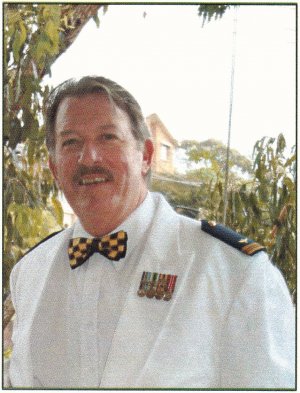
RAAF O225134 SD AIRTC BSWLM
Died 25 Sep 2010 Aged 61
Richard 'Ric', 'Radar'
SqnLdr Rick “Radar” Townsend, SATCO HMAS Albatross, NAS Nowra, died peacefully in his sleep on 25SEP10, in the David Berry Hospice at Berry on the NSW South Coast.
Tributes
We would like to thank all of those who have sent their heartfelt and loving tributes and condolences. Thank you for your kind words, your thoughts and prayers and for your wonderful support.
Radar was a loving and caring father, husband, grandfather and most of all, a wonderul friend, your friendship and support he cherished, as do we.
Throughout Richard’s long battle with cancer, he remained positive and strong. He loved the RAAF and continued to work
throughout his treatment. He and Diana lived each and every day filled with love, fun and laughter. His wish was to go
peacefully with his ‘gal’ by his side, holding his hand. His wish was granted.
Safe in the knowledge that he was dearly loved and will be greatly missed.
Proud in the knowledge that he leaves a fine and strong legacy.
Funeral arrangements were a late-in-the-week service at RAAF Williamtown Chapel with an appropriate send off at the Officers’ Mess. This was a very sad day for all who knew Radar.
RAAF GDPLT 77Sqn
Died 03 Sep 2010 Aged 85
Dick flew in the Korean war, the Malaysian conflict and in Vietnam with 2 Sqn and 9 Sqn.
Always the gentleman and a friendly colleague, Dick was one of the old-time pilots who sported a fine moustache and flew some 38 types of aircraft. His favourite was the Mustang. In his words it was damn fine aircraft to fly.
HE WAS WARRIOR IN EVERY SENSE OF THE WORD
VALE RICHARD “DICK” WHITMAN DFC, AFC
GOOD AND TRUE AUSTRALIAN
Tributes
Dick Whitman was an RAAF legend. He trained and qualified as a pilot in the later stages of the Second World War. After rejoining the RAAF in 1948 Dick completed two operational tours during the Korean War flying Mustang and then Meteor aircraft. This was a feat of extraordinary courage considering the hostile ground and air environment faced by 77 Squadron at the time.
However, as if this wasn’t enough, after a period as the 78 Wing Operations Officer at Butterworth during “Confrontation”, Dick also flew on operations during the Vietnam War.

RAAF WW2 Pilot 77 Sqn
Died 06 Mar 2010 Aged 91
Flight Lieutenant Wilf Goold DFC passed away over the weekend of 6th March. Although he was not a member of the 77 Squadron Association, Wilf Goold was a distinguished WW2 RAAF fighter pilot.
Apart from winning a DFC, Wilf had the unique distinction of being an acknowledged RAAF Fighter Ace. He achieved this feat of arms whilst on secondment to an RAF Squadron operating against Japanese forces in Burma.
His Funeral was held in the Christ Church Cathedral, Newcastle.
Tributes
Vale Wilfred Arthur Goold DFC
Good and True Australian
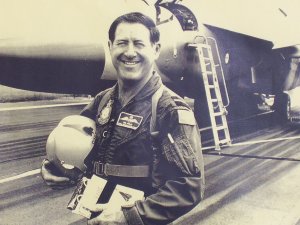
RAAF O53889 GD Pilot 75SQN, 3SQN, 2OCU, 5OTU, CFS, AFTS
Died 22 Jan 2010 Aged 69
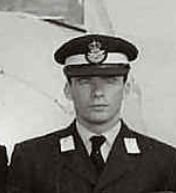
RAAF O57227 Pilot 75Sqn 76Sqn
Died 20 Oct 2009 Aged 66
Phil Astley passed away peacefully last night after a long battle with illness. Phil spent the last three months of his life in hospital, where he was visited by colleagues, including the Director of Aviation Safety John McCormick.
Following a long and distinguished career as a pilot in the Royal Australian Air Force (where incidentally, as a wing commander, he was Greg Hood's boss in the Sinai Peace Keeping Force), Phil started with CASA in April 2001 in Flight Crew Licensing as a project officer.
Phil worked tirelessly on developing the competency standards and related training documents that saw Australia lead the world in implementing competency based training systems into flight crew licensing. He was also an active person handling inquiries and solving licensing problems on a day to day basis.
Some of Phil's major achievements included significant contributions to the Day VFR syllabus, the flight crew licensing Manual of Standards which covers the full suite of pilot qualifications from licences at all levels, ratings and endorsements, and for the full range of aircraft categories including helicopters, aeroplanes, gyroplanes and balloons. This is a major achievement in itself and has been referenced by regulators and trainers around the globe.
More recently, Phil had been the author of several significant Civil Aviation Advisory Publications on multi engine aeroplane training, single pilot human factors and threat and error management for general aviation training, night VFR operations, and aerobatics. Phil had also started a new CAAP on flying instructor rating training; a topic he has always been passionate about. Unfortunately, he was not able to complete the job but we will finish it off as a tribute to Phil's work.
While he seemed to be a laid back person, Phil was always passionate about training and standards. He engaged everyone on equal terms and that is why he was able to achieve agreement on the publications he produced; he worked with colleagues and a cross-section of industry members. Phil never stood on ceremony but quietly went about his business. His tenacity to keep pressing on and resilience to diversions are evident in his achievements.
Phil played an important role in significant developments in flight crew licensing and improving flight safety through enhancements to standards. He was always a proponent of education and training and will be remembered as a valuable servant of the country.
For his immediate work colleagues, Phil will be remembered as a friend and a person who always wanted to help and assist regardless of the issue at hand. And he applied that to whomever he was interacting with.
Phil was a legend - a life well lived and always with the interests of aviation safety at heart.

RAAF O13642 GD Pilot 3 Sqn; 75 Sqn
Died 15 Aug 2009 Aged 75
Discarding his initial plan of an engineering degree, Neville joined the Royal Australian Air Force in 1952 and pursued his passion for flying instead. His RAAF Service was 1952-1976.
Benny entered the fighter world after graduating from the College with such notables as, Tex Watson, Peter Scully, Ken Tuckwell, and Og Worth. They all came to Williamtown and completed Fighter OTU training in 1956.
From there Benny went into 3 Squadron. He served in 75 and 3 Sqns at Williamtown and 3 Sqn Butterworth on only fighter tours.
In 1958 he led a formation of four Sabres to Butterworth.
After Butterworth he spent time in the training world and lead the Telstars Aerobatic Team.
Around 1963 during a tour with RAF he became a member of RAF Red Pelicans Aerobatic Team.
He visited Williamtown regularly 1965-1967 for recats and IRE as CFI CFS.
In January 1968 SqnLdr Raffins was awarded Air Force Cross.
Neville finished his time in the RAAF as the CO of a Hercules Squadron.
Take a read of Benny's book "Flight Path Pusuit"
Tributes
Vale Neville Thomas Raffin
Good and True Australian
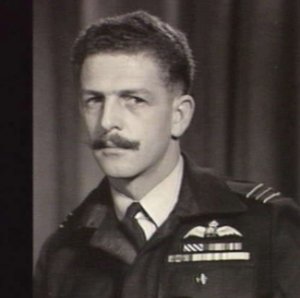
RAAF GDPLT 77 Sqn
Died 10 May 2009 Aged 86yrs
Tributes
Ross Glassop passed away on 10 May 2009 he was 86.
During WW2 Ross Glassop did a tour with 4 Squadron flying Boomerangs in New Guinea. He received a DFC for his operational achievements during the period.
After the war he was appointed to the position of Chief Flying Instructor at No 2 OTU Williamtown. At the time 2 OTU was engaged converting pilots to the Mustang for tours of duty in Japan with the British Commonwealth Occupation Force (BCOF). Many of these pilots later flew Mustangs in the early stages of the Korean War.
In 1951 he went to Korea and was awarded a bar to his DFC. He commanded RAAF Darwin in the mid 60 period and became well known to the people involved with the 81 Wing Sabre Detachment. In addition, he will be remembered by the 1960/70 Butterworth crowd as the OC of Ubon in 1964. In 1966-69 he commanded 78 Wing in Malaysia.
Ross Glassop had a long and distinguished RAAF career. He will be remembered for all the right reasons.
RAAF GDPLT 77 Sqn, 75Sqn
Died 31 Aug 2008 Aged 43yrs
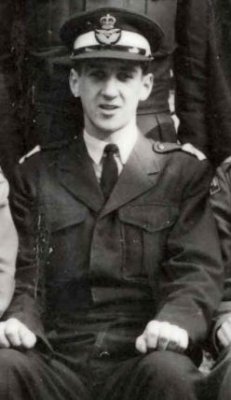
RAAF O219915 GD Pilot 75Sqn 76Sqn 2OCU
Died 12 Aug 2008 Aged 65
RAAF Academy 13 Course 1960 - 1963
48 Pilots Course 16 Sept 1963 - 06 Mar 1964
20 Sabre Course 17 Mar 64
No 6 Mirage Course 30 May 1966
Vampire ,Sabre, Mirage, Macchi.
Air crash incident on 29 October 1975 in Macchi A7-065 on Salt Ash range NSW (2OCU).
Aircraft struck trees during dive recovery on range. Crew ejected at 70-90 ft and 180-200 kts with only minor injuries. Crew were FLTLT Bryan Sweeney and FLGOFF George Clayton. RAAF Ejection number 45.
RAAF 77, 3,75,76, 79 Sqns
Died 05 Mar 2007 Aged 82yrs
Rod Hanstein completed his training in the Empire Air Training Scheme in Canada in 1945. on return to Australia at the conclusion of WWII he undertook a short spell as a specialist navigator instructor at Point Cook after which he was converted to Mustang Fighters at No.2 Operational Training Unit, followed by a posting to Malta. In Malta he was part of the RAAF fighter wing comprising 75 and 76 squadrons where he began to fly Vampire jet fighters.
He married Adele Hanstein in 1952.
In 1954 Rod converted to Meteor fighters and began ground duties as commander of Air Training Corps in Melbourne and aide to the Commonwealth Games.
In 1959 Rod moved to head a fighter squadron which was equipped with Sabres. This lead him to Butterworth, Malaysia and to war where he was commander of 3 Squadron. During this time he had a close brush with death when his Sabre went into an uncontrollable spin. Rod ejected from the fighter and landed successfully.
He was then posted to Thailand where he commanded 79 Squadron and Ubon Base where he worked with the U.S. Forces against Communism.
On return to Australia Rod was appointed Assistant Director of Operations at Headquarters in Canberra and was awarded the rank of Wing Commander.
RAAF GD Plt 77 Squadron
Died 12 Dec 2006 Aged 86 yrs
Tributes
RAAF 75Sqn, 77 Sqn
Died 25 May 2006 Aged 82 yrs
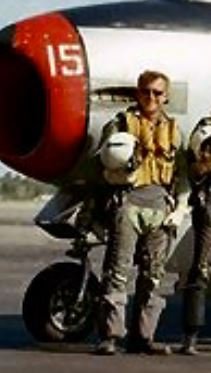
RAAF O1234567 GD Pilot 76 Sqn
Died 05 Mar 2006 Aged 68
FLTLT Charles Bates Philcox
No 35 Pilots Course Dec 1958
No 7 Sabre Course 15 May 1961
Flight Commander 76 Squadron Darwin Detachment 1964 -1967
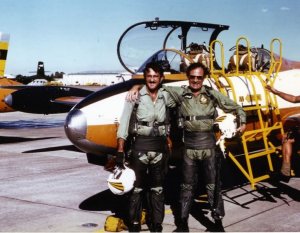
RAAF O110300 GD Pilot 76 Sqn
Died 04 Feb 2006 Aged 65
SQNLDR Reginald John Meissner AFC
Needless to say, the great and the good of the tradition come in all shapes and sizes.
The late Reg Meissner was a fighter pilot extraordinaire whom I found had all those qualities one would wish one’s wing man or leader would have when faced with real trouble at the pointy end of conflict. Mice either pissed you off with his energy and confidence, or you loved him - I fell very solidly into the latter camp.
I recall a Wing Commander at HQOC impugned the honour of Mice one night in the bar of the Officers’ Mess and Mice promptly decked him with a left to the jaw, whilst not spilling the beer clutched in his right.
Again I remember a boggy pilot from Williamtown had flown under the power lines over the Hawkesbury River and was under “review”, a review that came under the bailiwick of Mice at HQOC.
Mice felt the boggy would probably make a fine pilot and just needed to be drawn in a tad, but not too much.
Excerpt from "In The Tradition
(A personal tribute to the RAAF)"
by Ian Muldoon
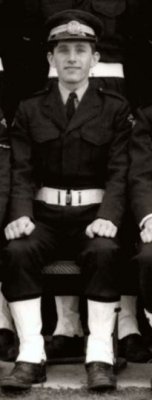
RAAF O221397 GD Pilot 77SQN, 2(F) OCU, 9SQN,
Died 15 Dec 2005 Aged 59
FLTLT David Charles "Freddo" Freedman
"Narrative"...
On the afternoon of 20 March, elements of 8 Platoon, C Company, 3 RAR encountered a well-concealed enemy bunker system north-east of Xuyen Moc. As they moved to engage it an intense firefight erupted and the Australians became pinned down. Their leader, 2nd Lieutenant David Paterson was mortally wounded and two others were hit.
9 Squadron was called to assist and two heavily armed gunships were despatched. Shortly after 2 o’clock Bushranger 71 and 72 arrived over the battlefield. Flight Lieutenant David Freedman piloted Bushranger 71; in the seat beside him was his co-pilot, Ron Betts.
The troops on the ground desperately needed a resupply of coloured smoke grenades so they could mark their positions. As Bushranger 71 came in low to make the drop it was engaged by an enemy heavy machine-gun, which peppered the aircraft. Ron was struck in the head. Freedman managed to pull away and fly the chopper to a nearby fire support base where Ron was quickly transferred to another helicopter which sped him to the US military hospital at Long Binh. But his wound proved mortal; Ron was dead on arrival, the first RAAF pilot killed in action in Vietnam.
PILOT
Died 25 Nov 2005
Served with the Army in New Guinea until his age (16) was uncovered and he was sent home. When he turned 18 he joined the RAAF, did basic flying training and went to Canada under the ETS, WW2 ended before he saw combat and he went back to civilian life only to re-join the RAAF and was posted to Iwakuni. He flew in the first combat mission in Korea. Had two tours in Korea and flew in total 244 missions. He was awarded the DFC and Mentioned in Despatches. He also received the USA DFC and the US Air Medal. Dick left the RAAF in 1955
Tributes
| Farewell Dick Good and True Australian |
||
O21144 GD Plt
Died 23 Jul 2005 Aged 77
Education: Canterbury High School, NSW;
Air Cadet RAAF College. Pt. Cook 1948-51;
Served 77 Sqn Korea 1952. Awarded DFC and US Air Medal;(DFC Citation - DFC promulgated on 7 Jul 1953 reads “For outstanding service as a member of the 77th Interceptor Fighter Squadron, Korea. Had flown 139 sorties against the enemy.”)
On exchange RAF 1952-55;
Pers. Asst to CAS 1957-59;
Attended RAAF Staff Coll. 1959;
Commanding Officer 76 Sqn (as a SqnLdr) 1960-61,
Flight Commander 3 Sqn Malaya 1961-63;
Staff Duties 1963-66;
OC RAAF Contingent Ubon, Thailand, 1965;
CO 1 Sqn 1967;
with 2 Sqn Vietnam 1967 (Acting CO),
Mentioned In Despatches 1968;
Officer Commanding 82 Wing 1969-70;
Staff Duties Dept. of Air 1970-72;
Attended Royal College of Defence Studies 1973;
Senior Training & Air Staff Officer HQ Support Command;
Air Attache Washington 1975-78;
Chief of Air Force Materiel Supply;
Deputy Chief Air Staff 1981-83;
Asst CDFS 1983 (retd.);
Director Australian Aircraft Consortium 1984-86,
M.T.G. (Aust.) 1987-89;
Bill was widely regarded and a popular leader amongst the entire Fighter Community and the wider RAAF Community.
Vale Bill Hughes: Good and True Australian
Tributes
Bill was widely regarded and a popular leader amongst the entire Fighter Community and the wider RAAF Community.
Vale Bill Hughes: Good and True Australian
RAAF GD Pilot 77 Sqn
Died 15 Jun 2005
RAAF PLT/ENG
Died 18 Dec 2001
Vale
Air Commodore Derek Randall ("Jell") Cuming OBE, AFC and Bar
. .Born 12 February 1917, Jell Cuming entered Melbourne University in 1938, commencing a degree course in Mechanical Engineering. At the end of his first year he learned of a vacation offer by the Royal Victorian Aeroclub - for the deposit of One Pound, the Club would provide an hour of flight familiarisation in a Moth aircraft, and he would be considered for inclusion among six finalists to be subsequently assessed by the then CFI at Point Cook, one George Jones who later became Chief of the Air Staff, RAAF.
Jell not only made the six finalists, but was selected as the most promising by George Jones. This earned Jell the sum of one hundred pounds, which he proceeded to spend on further Moth flights, acquiring some 25 hours.
Out of funds, the prospects for further flying were bleak until one of his University contemporaries suggested he apply to join the Citizen Air Force. He did, and along with two other Air Cadets, he joined No 21 Squadron at Laverton, Victoria, on Boxing Day, 1938.
21 Squadron had only one QFI and since Jell had the princely total of about 25 hours, the QFI concentrated totally on the two ab initio pilots-to-be, sending Jell off to practice various sequences. This lasted until September 1939 when they were posted to 1 Flying Training School, Point Cook.
The outbreak of WW II interrupted normal training and brief periods were spent at Newcastle Aeroclub and RAAF Richmond, before returning to Point Cook to graduate in March 1940. Although his enlistment arrangement made provision for him to complete his degree course in the event of war being declared, Jell chose not to take this option and he continued with the RAAF.
The next three years were spent on operations in the Pacific before he returned to Laverton (1 Aircraft Depot/ 1 Aircraft Performance Unit). Here his engineering aptitude was put to good use in flying and evaluating captured Japanese aircraft. During this time he showed the rare ability to talk with people on a person to person basis, regardless of rank difference, and he became renowned for trouble shooting and problem solving for RAAF aircraft. Whilst at 1 Aircraft Performance Unit he flew a great many experimental and exploratory flights. One notable example was the evaluation of the feasibility of using a Mk 8 Spitfire to tow three 8-man gliders for covert insertion. In 1944, he was awarded the Air Force Cross.. . . .In 1945, he completed #3 course, Empire Test Pilots School at Farnborough, UK, winning the McKenna Trophy as dux of the course.
He returned to Point Cook to join the Aircraft Research and Development Unit (ARDU) and remained with that unit when it moved to Laverton in October 1948. In the previous month, Jell transferred from General Duties/ Pilot Branch to the Technical Branch of the RAAF. His continuing experimental flying included the evaluation of the ARL designed "Suction Wing" glider. This aircraft had a wing with a "tadpole" cross-section with slots and manifolds for a suction system to control boundary layer. A side valve V8 engine drove the suction pump. He discovered that when the V8 failed, the aircraft had the gliding angle of a broken brick.
In early 1950 he was awarded a Bar to his AFC and he spent the remainder of that year in UK completing the RAF Staff College course. At this stage, he had flown nearly 4,000 hours in command on 62 different types of aircraft.
A further period followed at ARDU until mid 1954 when he commenced a series of staff appointments.
This last period at ARDU included organising and supervising difficult instructional courses in the basics of test flying for other pilots at the unit, managing exploratory flight test programs, and mounting and managing Australia's entry in the London to Christchurch Air Race, in which he flew one of the two RAAF Canberras, and for which he was awarded the OBE.
This period also saw this tale become set in concrete - Jell was returning to Laverton late one afternoon in his own car and wearing civilian clothes and duly stopped at the guard gate. As the airman on guard duty approached, Jell identified himself with the words " Wing Commander Cuming ". The airman guard responded with " Thanks mate, I'll keep an eye out for the bastard "
It was also during this period that Jell's reputation spread well beyond the boundaries of Laverton and he became something of a legendary figure, with his name recognised throughout the RAAF and his expertise accepted widely.
His relationship with his pilots, however, was something very special. Air Commodore V.J.Hill (Retd), an ETPS graduate who worked for Jell for some years, expressed the situation succinctly when, on being told of Jell's departure, wrote:
. ." Of his private circumstances I can't recall knowing anything. But as to his professional life during and after my time at ARDU, I held him in a mixture of awe and affection. We probably all did: awe at his empathy with aircraft of any type, at his papal infallibility in R&D matters, at his brilliant mind; and affection for the way he imbued in us a feeling for belonging to his special clan of pilots with responsibilities, skills and privileges. And so often he stood between us (me for sure) and the likely consequences of our follies. A sort of wise and kindly uncle with a proprietary interest in those for whom he held some hope."
Former Chief of the Air Staff, Air Marshal J.W.Newham (Retd), offered these words (in part) when advised of Jell's departure:
. ." Then GpCapt Cuming was CO of 481 Maintenance Squadron at Williamtown in the mid 1960s during my two postings at the base. Over that period, I got to know him well, and to like him for the good reason that he was a genial and honest character, also a thorough professional both as a pilot and the senior engineer on the base. . . In the early 1970s, AIRCDRE Cuming was Senior Engineering Staff Officer at Headquarters Support Command; I was briefly CO ARDU then OC RAAF Laverton. The same easy close working relationship was established, with me receiving the best of the arrangement. Jell was as ever essentially practical and straightforward; one could confidently rely on good advice; he never let me down nor imposed rigid rules on my task in either job. It was an honour to have met and worked with a great RAAF officer."
Jell's down-to-earth approach provided a valuable input into the Australian contribution towards solving the structural problems of the F-111 in the late 1960s. During that period, Harry Walton recalled:
. ." Jell came to Washington when we were there in 1968. I always remember his comment when we were both walking down the street and an airliner flew overhead en route to Andrews or nearby. We both looked up and he commented that he could recognise an aviator because they always looked up at a passing aircraft no matter how many times they had seen it before. I also remember the day he flew the F111 for the first time at Fort Worth. I believe it was an A model, and he commented on the surprise of the pilot he flew with to his request to fly it upside down. "
Jell retired from the RAAF in February 1975.
During his retirement, he became a gliding enthusiast, owning his own aircraft and competing at National level regularly at Waikerie and Narromine. His ability to fly with incredible precision for extended periods enabled him to make his mark on these events. (On a personal note, I only flew with him once, in 1963,as safety pilot in a dual Vampire while he practiced instrument flying. During a steep turn, I had the temerity to lean across and tap the altimeter - it appeared to be stuck. His voice on the intercom said something like "do you have a problem ?". The altimeter was quite serviceable.)
He was a long time member of the Flight Test Society of Australia, and although he noted more than once, " I finished my test flying before telemetry was even thought of ", he nevertheless was a regular attendee at the Society Annual Symposium and was comfortable in the company of pilots much younger than himself. To borrow further from Air Marshal Newham, " In his puckish way, he would turn the conversation to serious matters mostly involving flying and seek views, then proffer another point of view, most instructive in its content and clarity. This was his way of engendering a spirit of inquiry and deeper consideration of all sorts of issues, in short, a warning about the dangers of slavishly accepting the status quo or the obvious. "
Many of us knew him personally and are familiar with the anecdotes, which abounded about his exceptional ability as a pilot, test pilot and character. This had us holding him in a sort of universal regard, which was never challenged in the places where these things are best discussed.
We have not had many legends in Australian aviation. On 18 December 2001, we lost one.
Ron Green. .President. .Flight Test Society of Australia
RAAF O14698 GDPLT DCAS 1987-90
Died 31 Aug 2001 Aged 65yrs
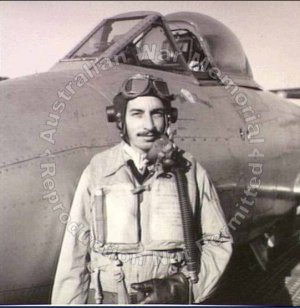
RAAF O22790 GDPLT 77 Sqn
Died 10 Nov 1998 Aged 73yrs
Kimpo, South Korea. 1953. Flight Sergeant Ken Murray of No. 77 Squadron RAAF, has become quite a figure amongst jet pilots in the Korean Theatre as he has just completed his 300th mission against the enemy in North Korea.
Tributes
Squadron Leader Kenneth James Murray DFC, AFC, DFM of 77 Squadron, Royal Australian Air Force. Murray completed a record 333 missions over North Korea in two tours (1951 - 195 missions, 1953 - 138 missions), a record for all national contingents flying with the United Nations Command in Korea.

RAAF O18751 GD Pilot 76 Sqn
Died 08 Aug 1998 Aged 58
David Owens entered the Air force as a Cadet with No 11 Course at RAAF College.
Upon graduating the course he was posted to the Maritime world.
In September 1966 he was poste to No 2 OCU for a Sabre conversion.
In Aug 1967 he undertook No 11 Mirage Conversion Course
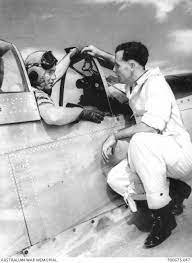
RAAF O33260 GDPLT 77Sqn
Died 15 Jun 1998 Aged 72
RAAF Jan. 1945 as aircrew trainee, transferred to language trg (Japanese); served as linguist in Japan with 381 Sqn and Combined Services Interrogation Unit 1946-47; flying trg 1948; served with 77 Sqn Japan & Korea 1949-51, completing two combat tours (US Air Medal 1950 & MID 1951), commissioned 1950; completed Russian language course Pt.Cook 1952-53; 2 OCU 1953-54; sent to UK for advanced linguistic studies 1954-56; Air Trials Unit, Woomera, SA, for flying duties in connexion with Jindivik project 1957; attended RAAF Staff Coll. 1960; flying duties with 77 Sqn Butterworth, Malaysia & Ubon, Thailand 196164 (temp. CO 1962-64); attended US Armed Forces Staff Coll. 1965, then performed int liaison duties with Air Attache Washington 1966-67; CO 2 OCU 1968-70; Defence Attache Tokyo 1970-73; Dir. Pers Services 1973-74; attended Royal Coll. of Def Studies London 1975; OC RAAF Butterworth, Malaysia, 197677; Dir-Gen. Operation Requirements Air Force 1977-79; AOC Support Comd 1979-80; Chief of Air Force Personnel 1981-82 (retd.)
RAAF GDPLT 77Sqn, 76 Sqn
Died 26 Dec 1993
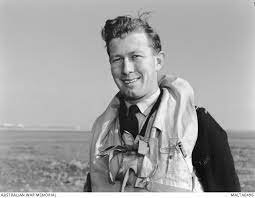
RAAF O 33119 GDPLT HQOC 1978-79
Died 07 Sep 1990 Aged 68yrs
RAAF 1941 -1979
RAAF 1941, served with RAF (3 Sqn in Europe, 180 Sqn) 1941-46; BCOF Japan (77 Sqn, HQ BCAir) 1948-50; 77 Sqn Korea 1950-51 (awarded US Air Medal 1950); CO 76 Sqn & CO 378 Sqn Malta 1952-54; attended RAAF Staff Coll.; CO 22 Sqn 1958, 75 Sqn 1959-61; Staff Offr, Dept. Air 1964-66; OC RAAF Townsville 1966-67; Task Force Air Comdr Vietnam 1968-69; Staff Offr HQ Op. Comd 1969-71; Dir. Joint Ops & Plans, Dept. of Def. 1971-74; Comdr of Air Component ANZUK Singapore 1974; Comdr IADS Malaysia-Singapore 1975-77; Chief of Air Force Ops 1978; AOC Op. Comd 1978-79 (retd.)
Tributes
Farewell
Good and True Australian
RAAF O11391 GDPLT 77 Sqn
Died 12 Jul 1985 Aged 62yrs
b. 3 Apr. 1923 Toowoomba, Qld; educ. Toowoomba Gram. Sch; joined RAAF 1942, served as fighter pilot in SWPA 1943-44, with 84 Sqn and 77 Sqn (comm. 1944); Flt Comdr 78 Sqn 1951-52; 77 Sqn Korea 1952 (US Air Medal); attended RAF Staff Coll. 1953; CO 25 Sqn Pearce, WA, 1955-56; CO Base Sqn Pt.Cook 1957-58; CO CFS 1959-61; CO 2 OCU Williamtown, NSW, 1962-63; HQ Far East Air Forces Singapore 1963-66; Comdt RAAF Staff Coll. & OC RAAF Fairbairn, ACT, 1966-67; OC RAAF Williamtown 1970; OC Butterworth, Malaysia, 1970-72; OC RAAF Pearce 1973-75; Chief of Air Force Pers 1976-79 (retd.); d. 12 Jul. 1985 Brisb.
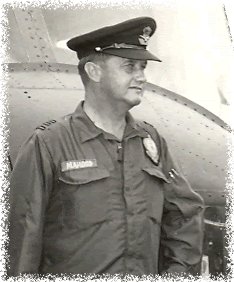
RAAF O52901 GD Pilot 9 Sqn
Died 25 Nov 1978 Aged 43
Conflict/Operation Vietnam, 1962-1975
Flying accident El Alamein Army Camp, Port Augusta, South Australia, Saturday, 25 November 1978.
A detachment of eight 9 Squadron aircraft was deployed to the El Alamein Army Camp near Port Augusta for day and night air mobility training with 3 Battalion, Royal Australian Regiment.
Night exercises were being conducted with aircraft returning to El Alamein Army Camp in pairs at around midnight. The last pair overflew the camp and entered a descending turn preceding landing. The lead aircraft struck a ridgeline about two kilometres from the camp, exploded on impact and disintegrated, killing all five on board.
The crew were:
WGCDR Peter William MAHOOD DSO, O52901, Pilot.
PLTOFF Paul Thomas MASON, O230093, Pilot.
SGT Steven Gordon MILSTED, A316726, Crewman.
SGT Paul Patrick GALLAGHER, A61428, Flight Filler.
CPL Barry Raymond JOHNS, A46754, Flight Fitter.
RAAF GD Pilot
Died 17 May 1967
Veteran. POW Korean War. Later CO 75Sqn. Passed away as a result of a Mirage Accident.
RAAF GDPLT 77 Sqn
Nugget had a distinguished career in the RAAF. Firstly as a fighter pilot on Meteors with No 77 Squadron in Korea, and later as a helicopter driver and CO of 9 Squadron in Vietnam.
FOR THOSE OF US WHO WERE IN THE FORTUNATE POSITION
TO HAVE KNOWN HIM HE WILL BE MISSED
VALE- NUGGET HIBBEN DFC, AFC - GOOD AND TRUE AUSTRALIAN
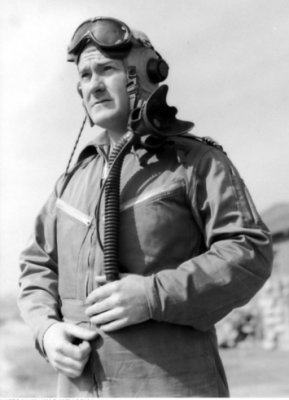
RAAF O33188 GDPLT 77 Sqn
Portrait of O33188 Flight Lieutenant Cornelious Desmond Murphy, of 77 Squadron RAAF, after returning from a combat mission in one of the unit's P51 Mustang .
Flight Lieutenant Unit No. 77 Squadron
Service Royal Australian Air Force
Conflict/Operation Korea, 1950-1953
Award Distinguished Flying Cross
Tributes
Cornelius Desmond Murphy United States Air Medal
RAAF GDPLT 77Sqn 9Sqn
Aged 55yrs?
RAAF GD Pilot
RAAF GD Pilot
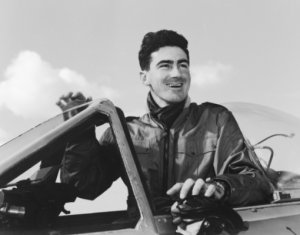
RAAF GD Pilot 77 Sqn
Pilot Officer John Myers DFM of Randwick, NSW, a pilot with 78 Fighter Wing RAAF. He won his medal while flying in the Korean War and was a jet plane instructor in Australia joining the Wing in Malta early in 1953.
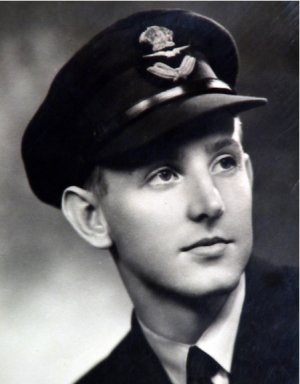
RAAF O11384 GD Pilot 77 Sqn
Korea, 1950-1953
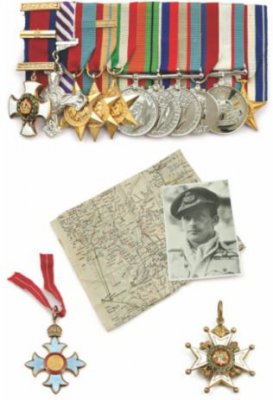
RAAF Pilot WW2
"An excellent leader and commanding officer, Wing Commander Eaton has never allowed adverse weather or intense anti-aircraft fire to prevent him from locating and destroying his targets"
Brian Eaton (1916-1992) was born in Launceston. Tasmania on 15 December 1916. He was raised in Victoria and educated at Carey Grammer School, Melbourne between 1931-1933.
After his father died Eaton left school early and enlisted as an Air Cadet at Point Cook flying school. He graduated in 1937 as a Pilot Officer and was posted to No.1 Fighter Squadron and was soon promoted to Flying Officer.
In 1938 Eaton served as a Flying Instructor at Point Cook and in 1940 was posted to Central Flying School, Camden as Flight Commander with a rank of Flight Lieutenant and then as Pilot Trainer at RAAF Headquarters rising to the rank of Squadron Leader.
In June, ‘I941 he moved to RAAF Headquarters again as a Pilot Trainer. ln March the following year Eaton was posted to Flying Training School under the Empire Training Scheme as Controller Air. In August he served as an Instructor to No.5 Service Flying School in Uranquinty and in September underwent a Fighter Course at No.2 Operational Training Unit in Mildura.
Eaton experienced his first wartime combat in January 1943 when he was posted to No 3 Squadron in the Middle East and was involved in the Battle of Tunisia. During this time Eaton was incredibly shot down three times in only ten days. On the first occasion Eaton‘s Kittyhawk was hit by an unknown enemy fighter. He managed to land at El Hamma, in the midst of a tank battle between German and New Zealand forces and was able to get a lift back to his base from the Kiwis. On the second occasion, Eaton was shot down by anti-aircraft fire. He crash landed behind enemy lines and was helped by friendly tribesmen who smuggled him back to base in disguise.
In April I943. Eaton assumed command of No 3 Squadron,Middle East and was promoted to Wing Commander in September. ln the meantime, the Squadron had been relocated to Malta. In December he was awarded the DFC, despite flying with his arm in plaster.
Eaton was posted to Italy in 1944 as Commander of No. 239 Squadron, R.A.F. with the rank of Acting Group Captain. Between I944-45 he was awarded the DSO and Bar. In I946 Eaton was also awarded the American Silver Star for action in Yugoslavia.
After the War Eaton returned to Australia as Wing Commander at the School of Air Support, Laverton. In September 1947 he was posted to Japan as Officer in Charge of Air Command, British Command. He returned to RAAF Headquarters. Melbourne in 1949, remaining until I951 when he was promoted to Group Captain, Malta G.C, returning again to Australia in 1955.
Eaton remained in Australia, holding several senior positions until 1967 when he was once again posted overseas, Commanding 224 Group Headquarters. Far East Airforce, Singapore. By September 1968 he was promoted to Air Vice Marshal and appointed Chief of Staff.
Eaton returned to Australia at the end of 1969 and held further senior positions for the next four years.
After a long and illustrious career spanning 38 years he was posted for discharge with substantive rank of Air Vice Marshal.
Tributes
OTHER NOTES
DFC Citation London Gazette ‘I4 December. 1943:
‘On the evening of 6th October, S/Ldr Eaton led his Kittyhawk Squadron against a German counter attack which was threatening forward elements of the Eighth Army. He made this attack in the face of intense A/A fire and pressed it home at a very low altitude. As a result of this attack the Germans had to call off their attack and the situation was restored. This attack called forth the admiration and thanks of the Eighth Army who freely admitted that S/Ldr Eaton's courage and determination had saved a dangerous situation ‘
DSO Citation London Gazette 1 April. 1944:
‘Wing Commander Eaton has flown on operations in North Africa, Malta, Sicily and Italy.
He has led a large number of sorties during which a medium sized enemy vessel has been damaged and also considerable mechanical transport and one tank destroyed.
In air combat this officer has destroyed two enemy aircraft. On one occasion when the enemy was pressing our troops hard he led fierce attacks compelling the enemy to retreat.
Bar to D50 Citation London Gazette. 12 June 1945.
In December 1944. Group Captain Eaton led a formation of four squadrons of aircraft in an attack on the Byelovar Barracks, Yugoslavia.
Very adverse weather was encountered and it was necessary to circle the target area for 1 1/2 hours before a pin point could be made. The attack was than made at low level in the face of intense anti-aircraft fire and excellent results were obtained. Other successful sorties by this officer include the destruction of a power house and ammunition dump.
Group Captain Eaton has also led formation of aircraft which have damaged eight enemy aircraft on the ground and destroyed numerous mechanical transport vehicles, tanks, bridges and locomotives.
